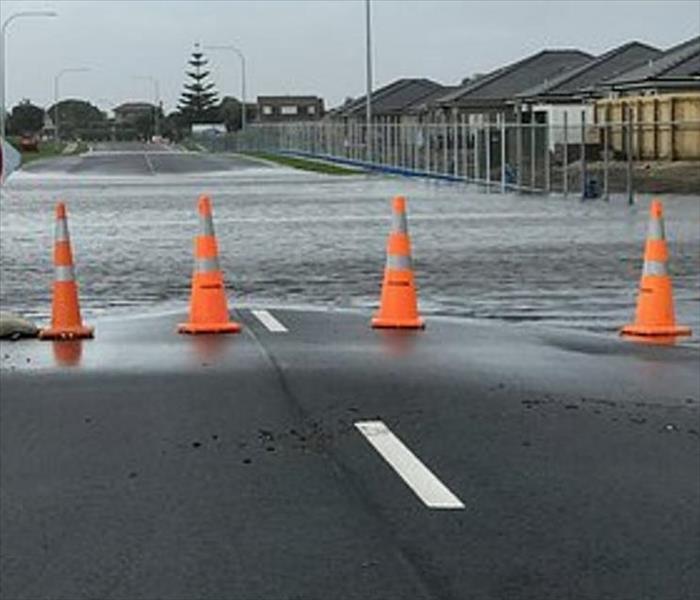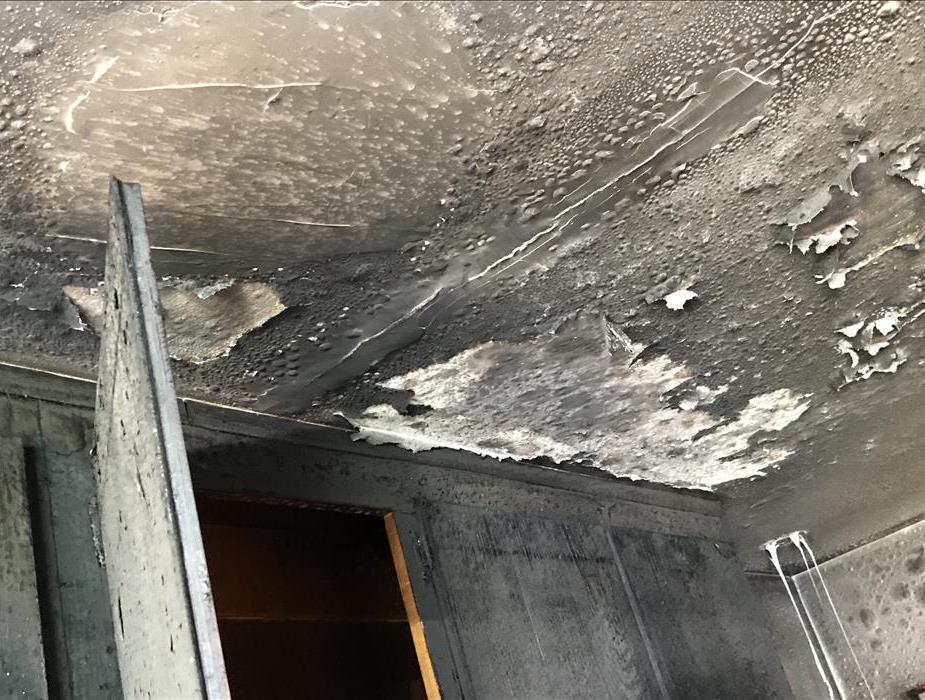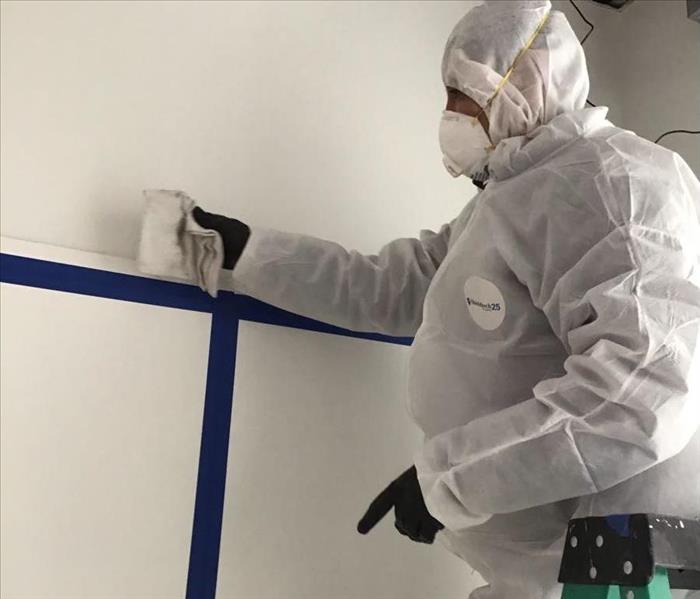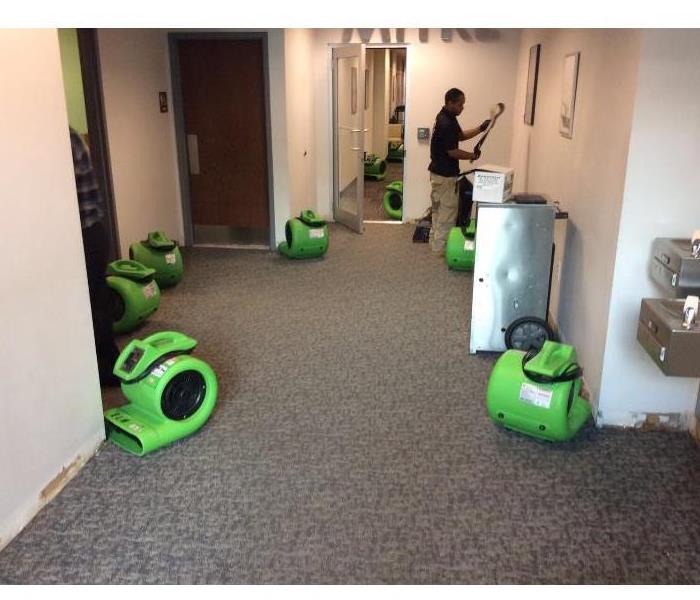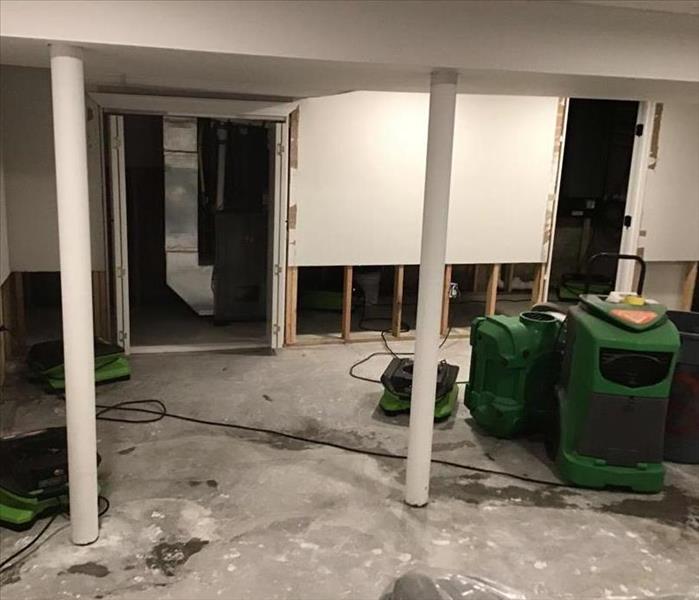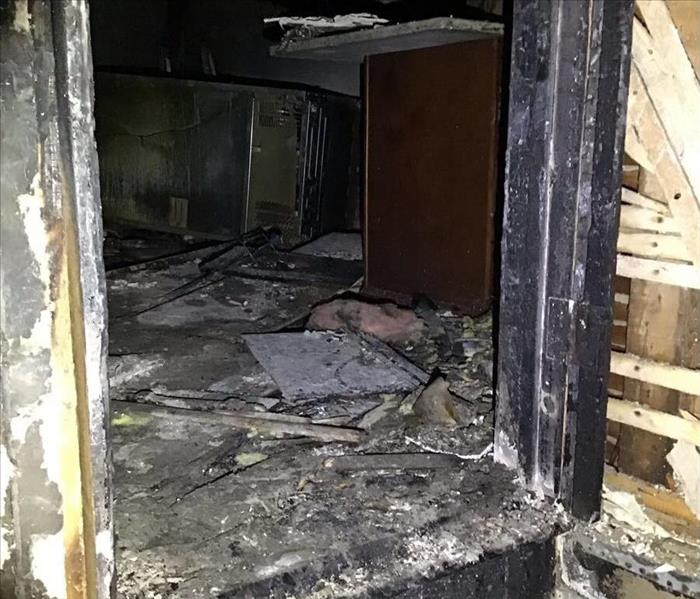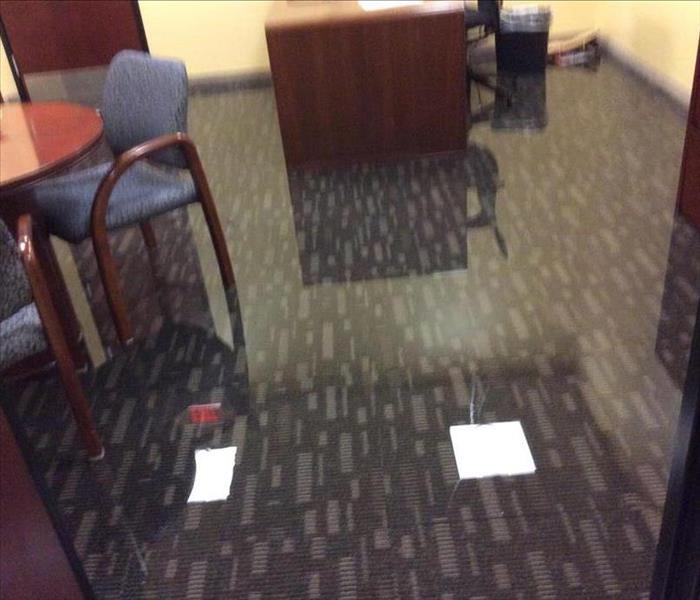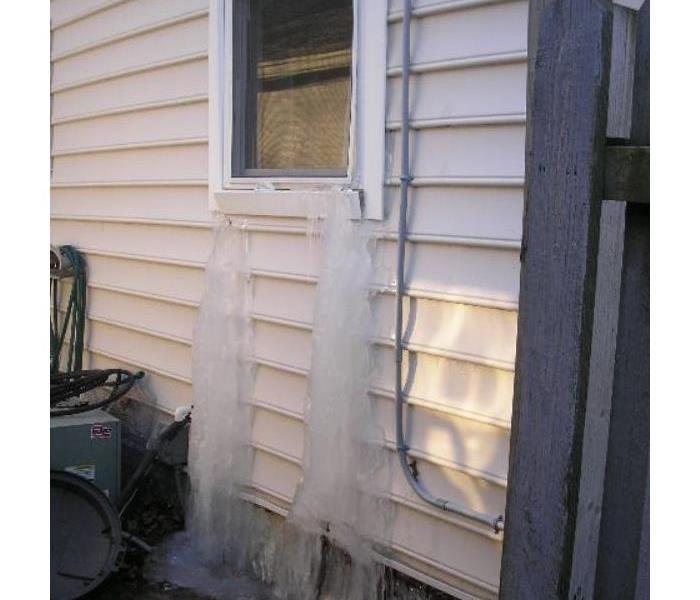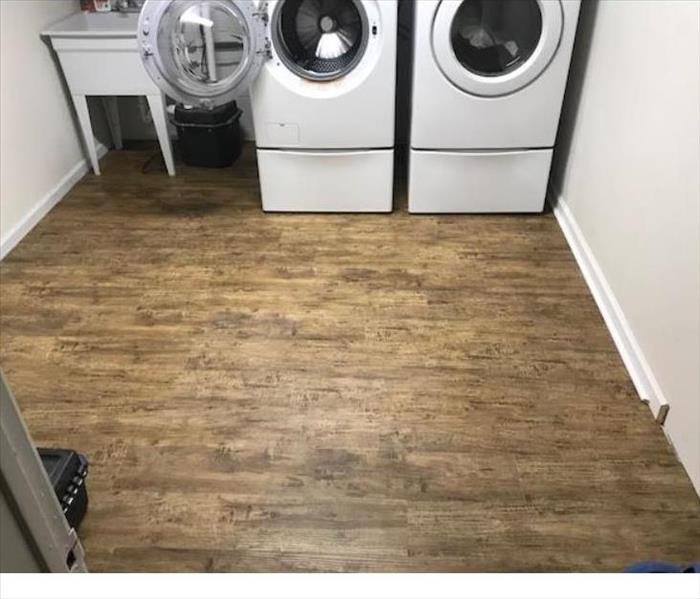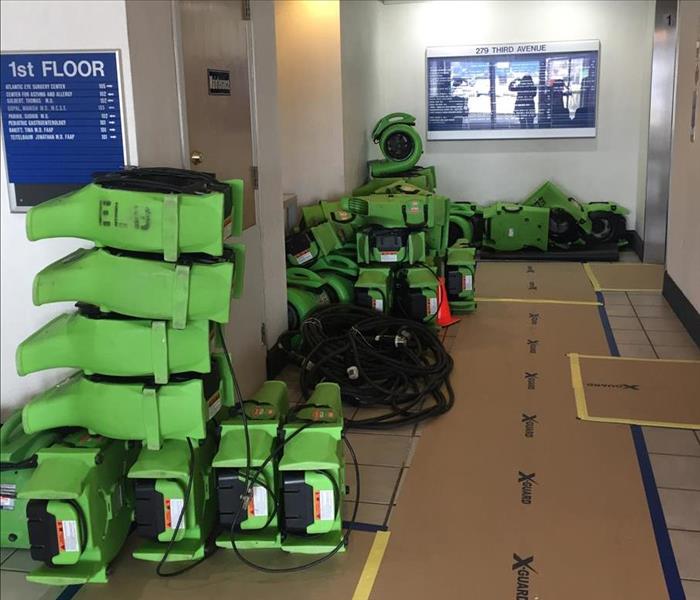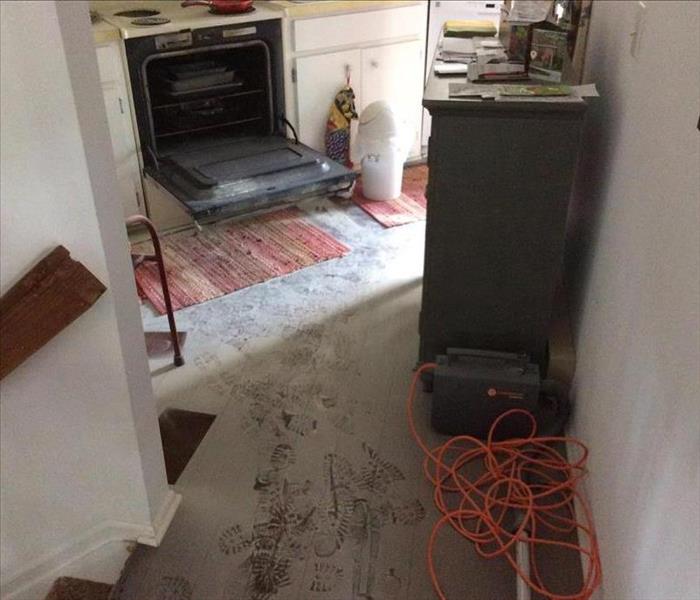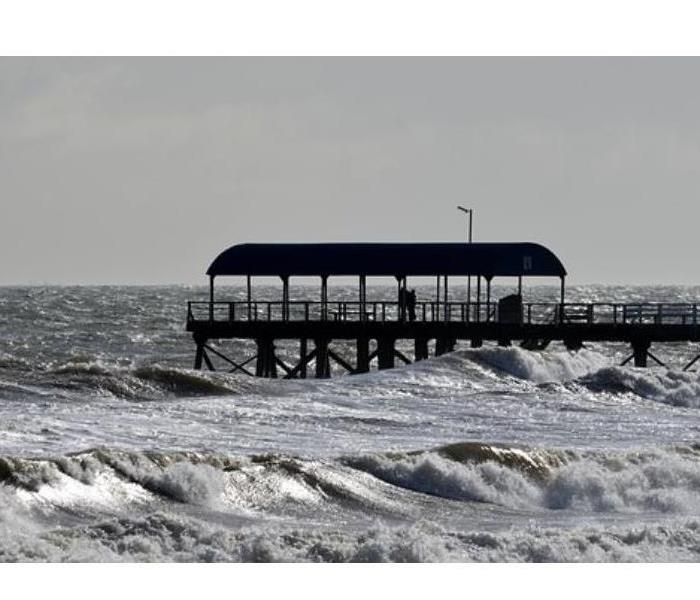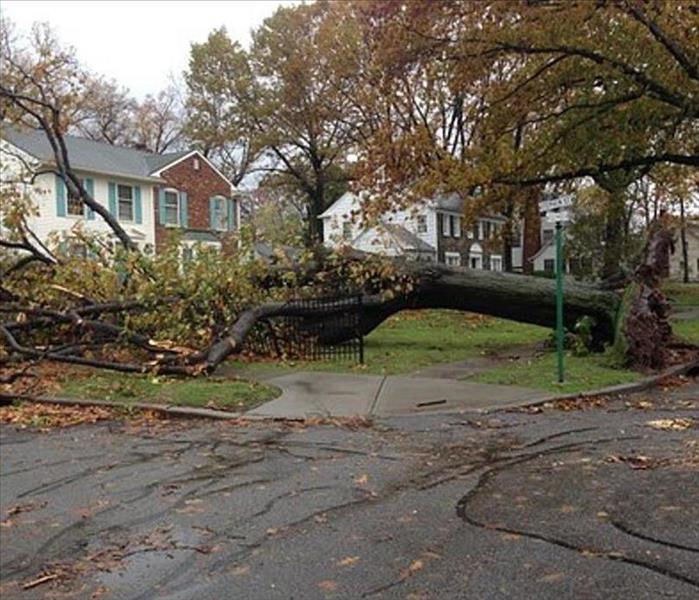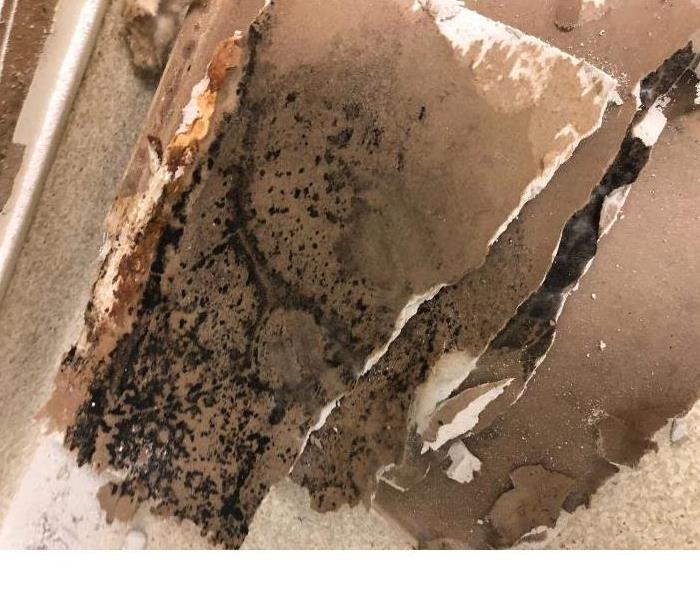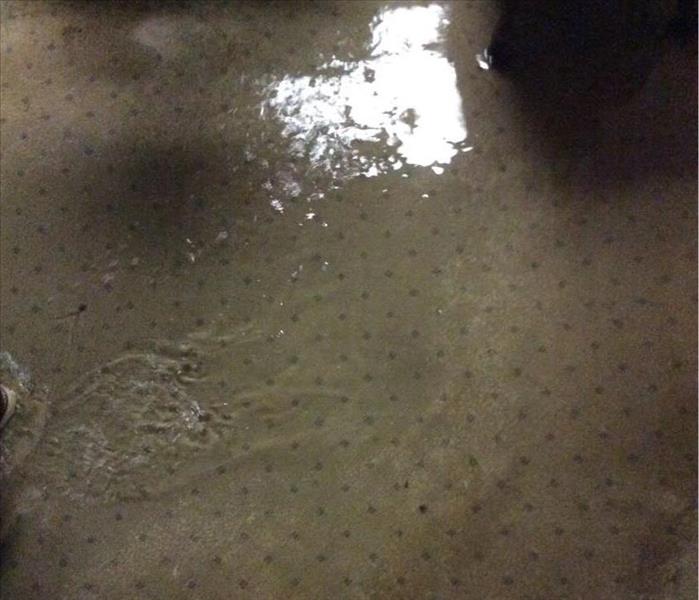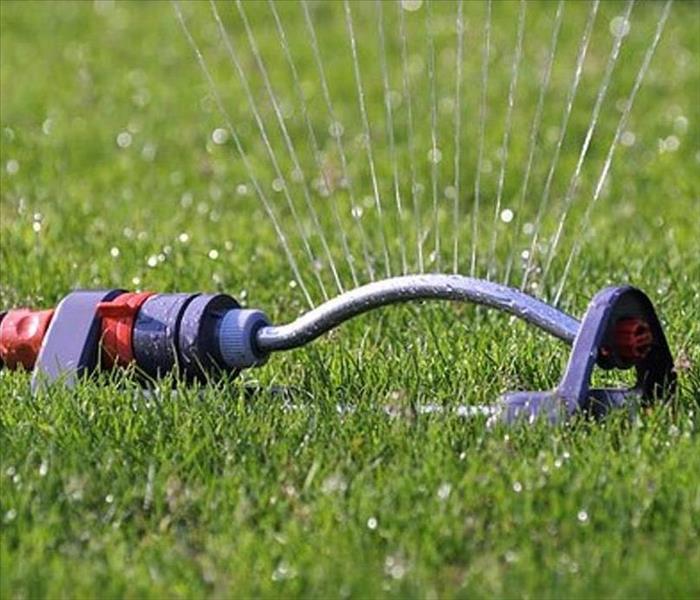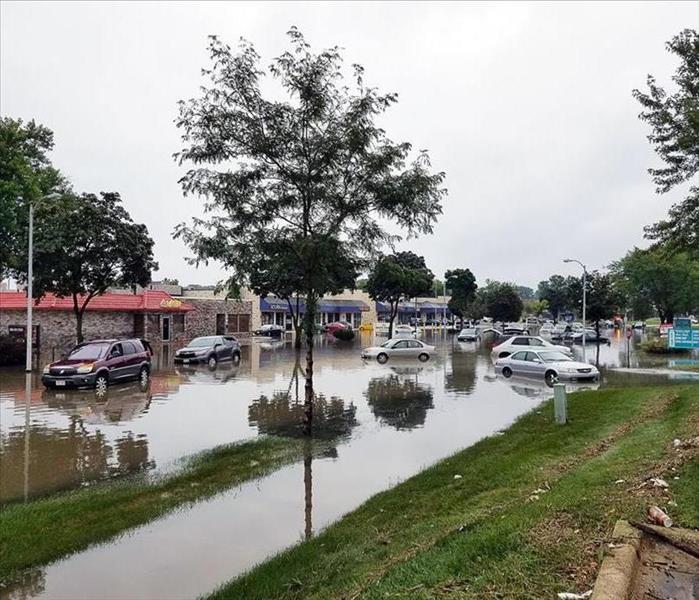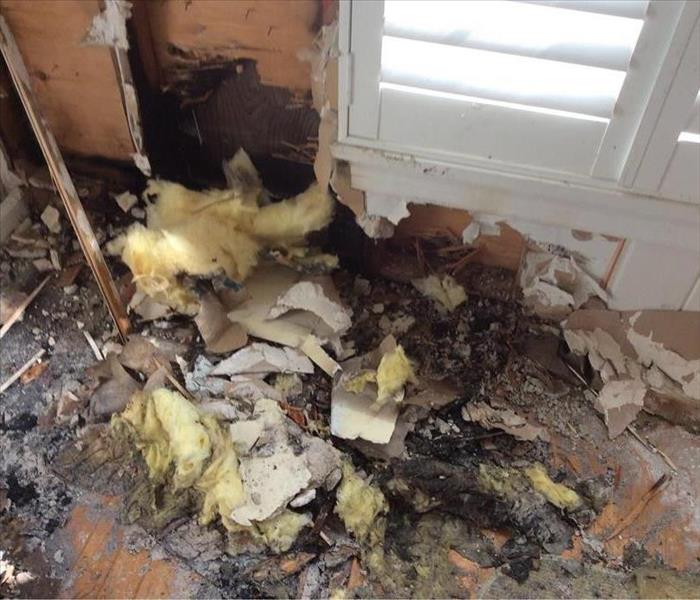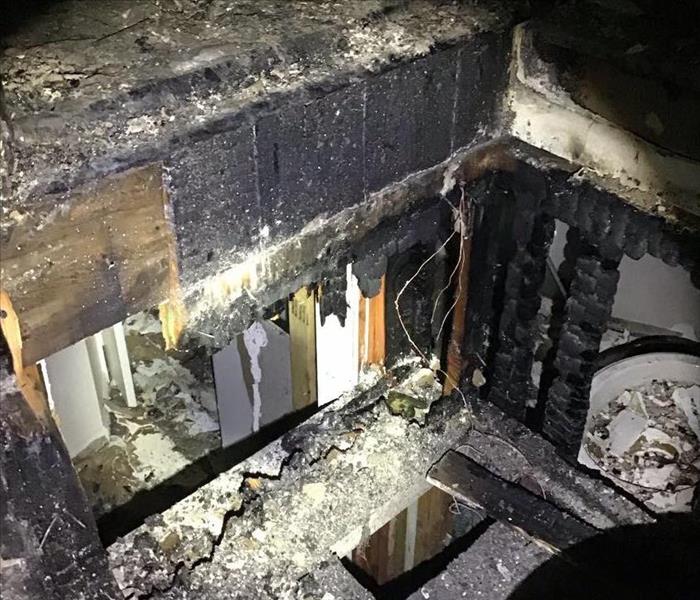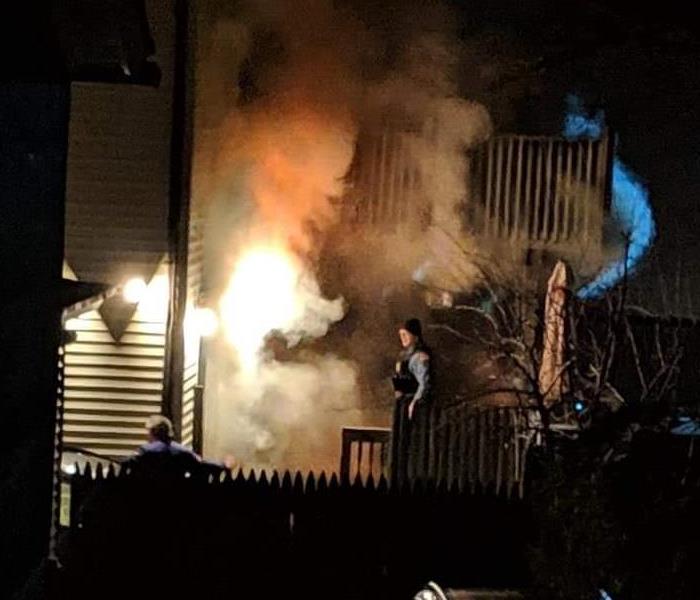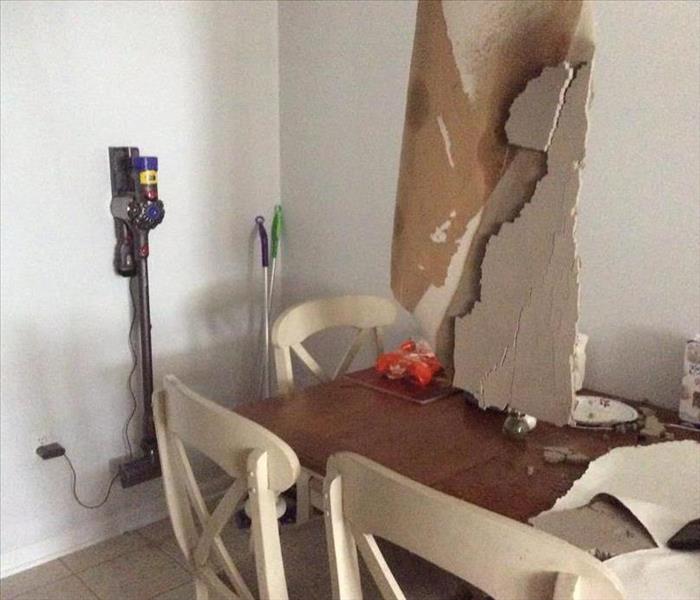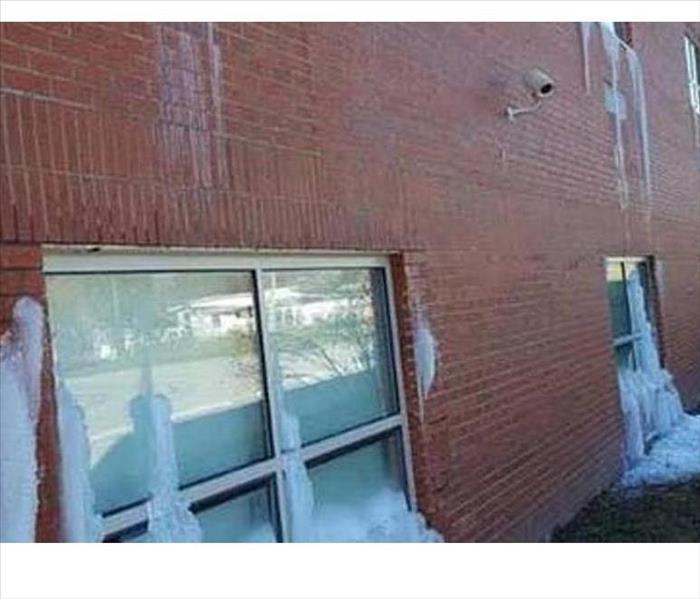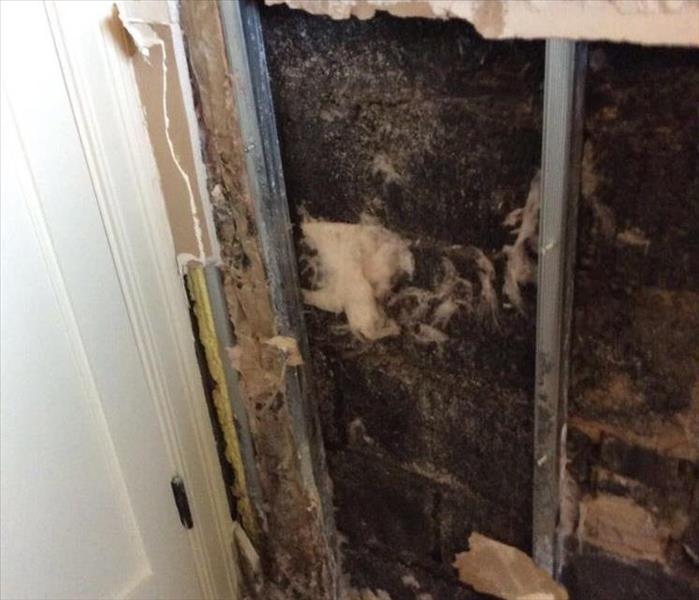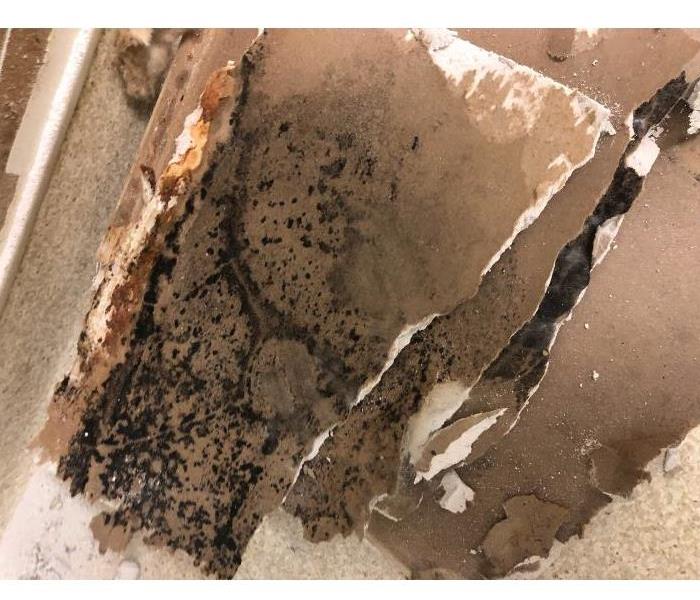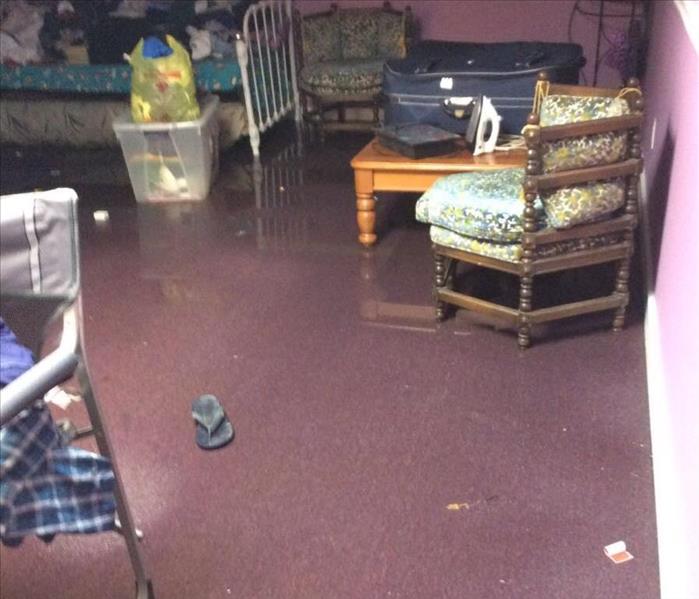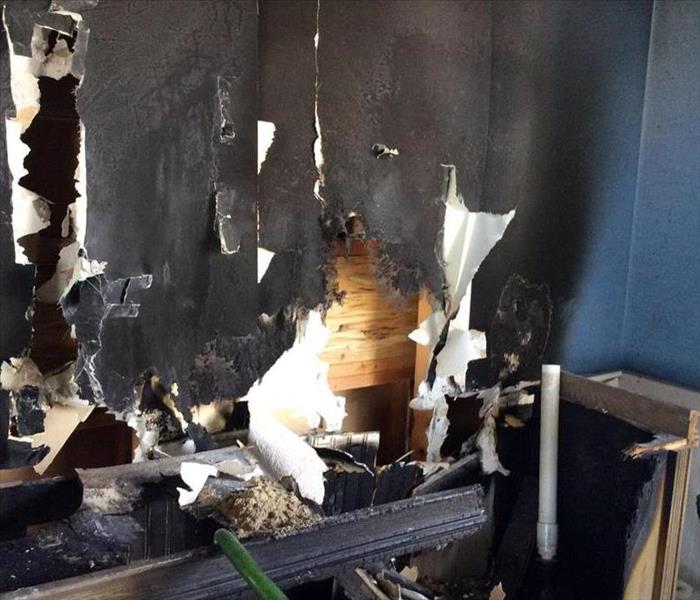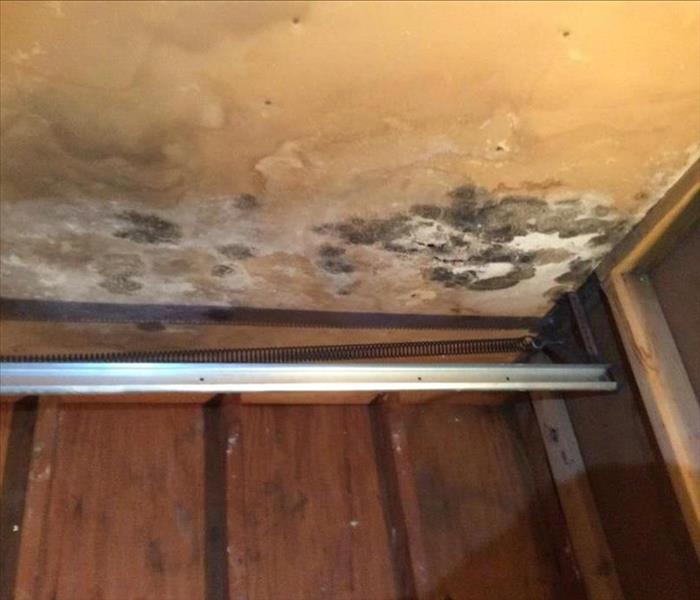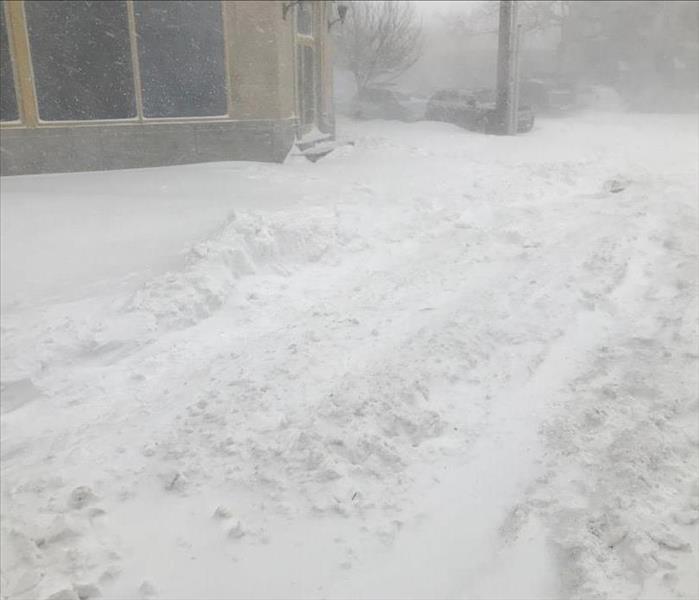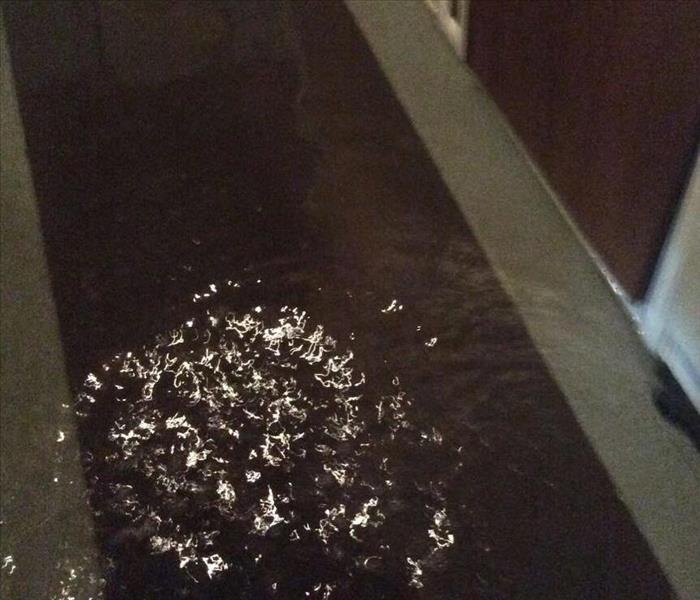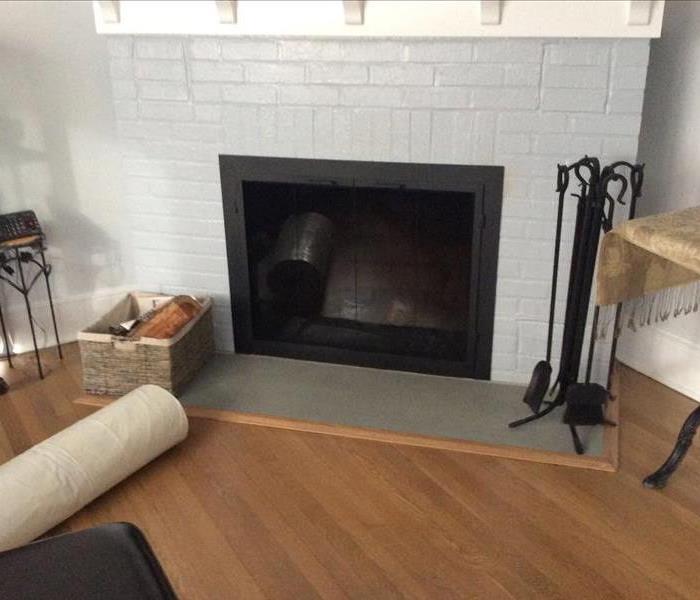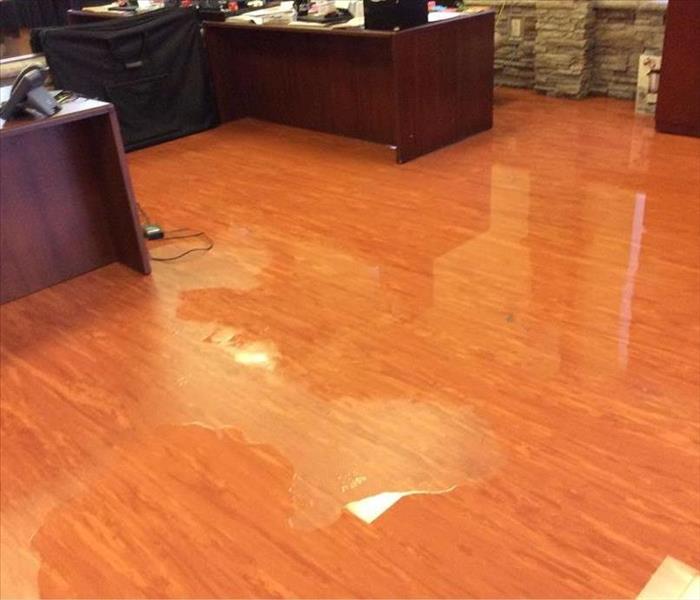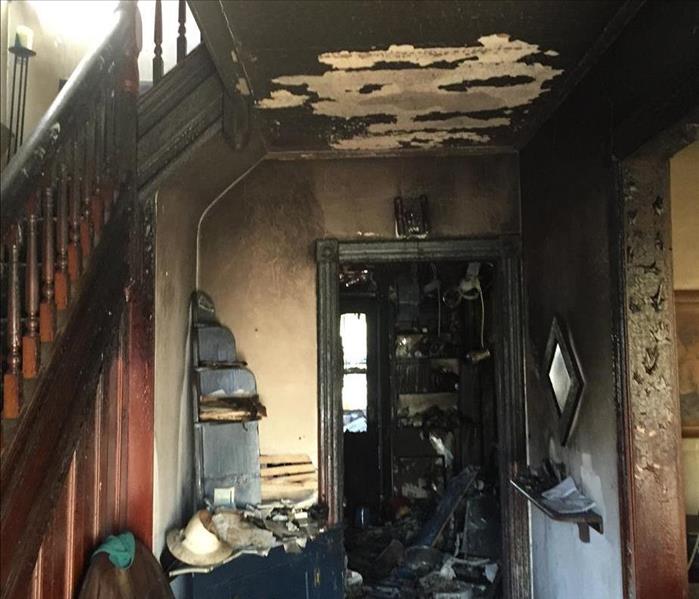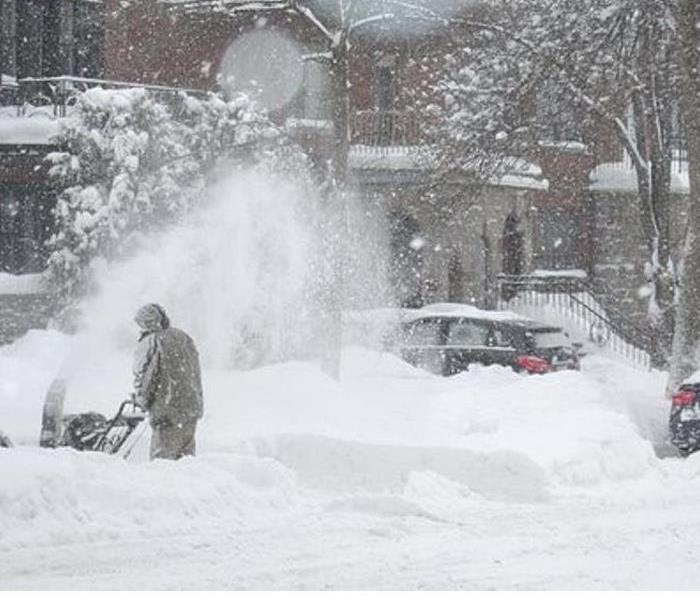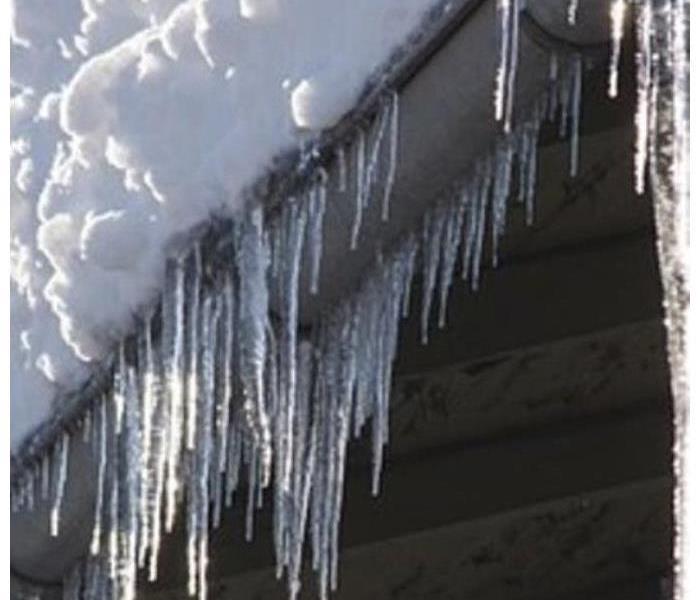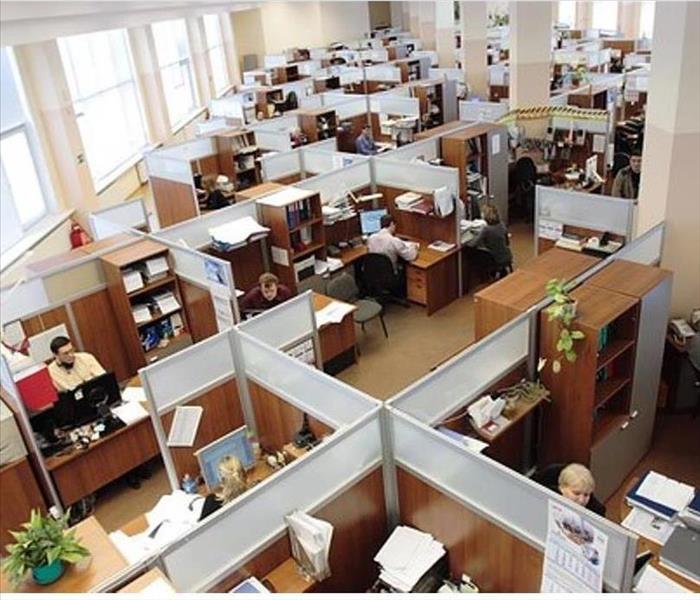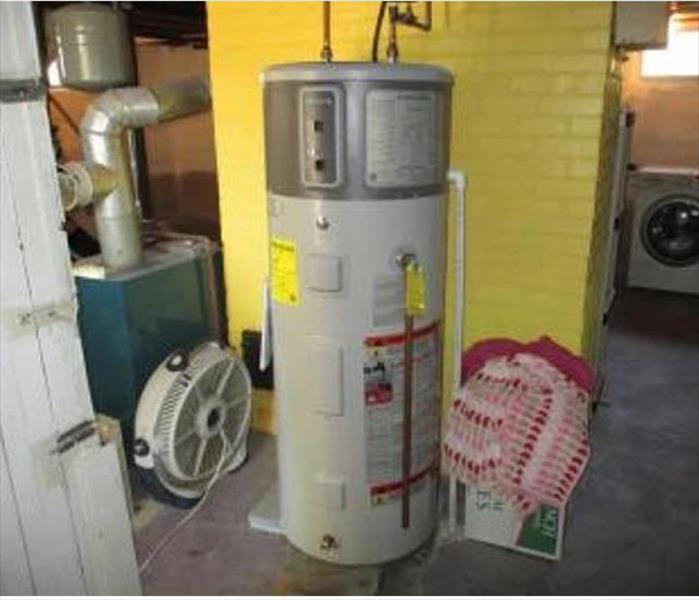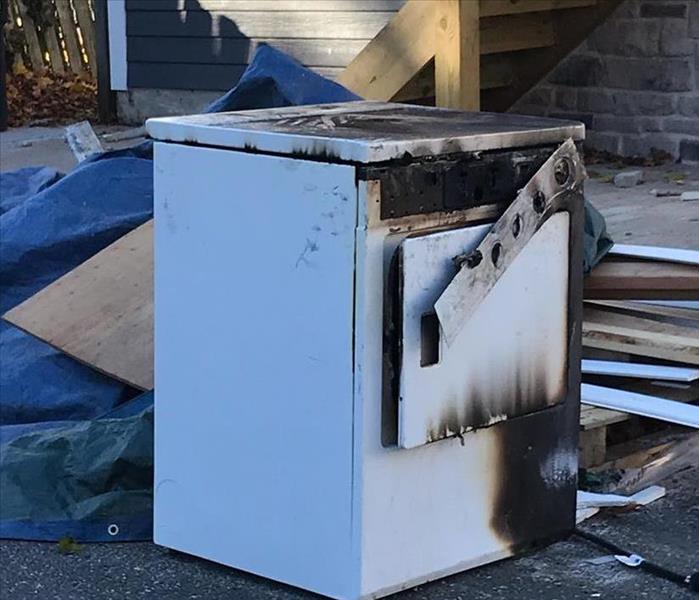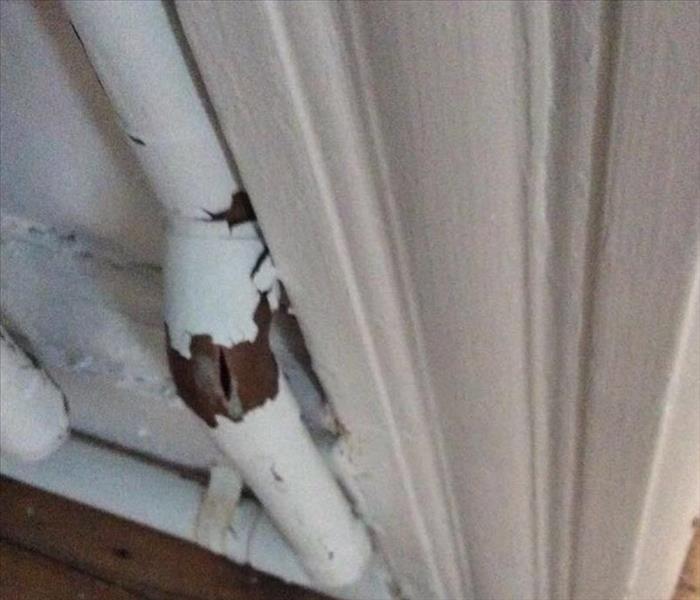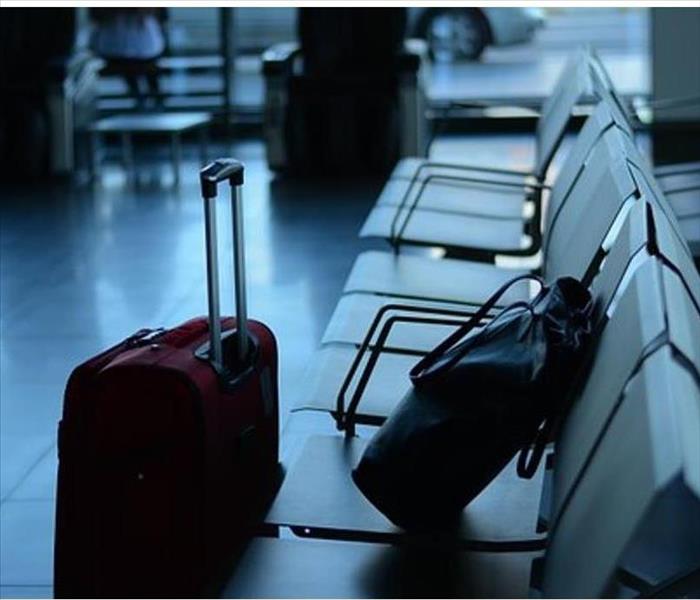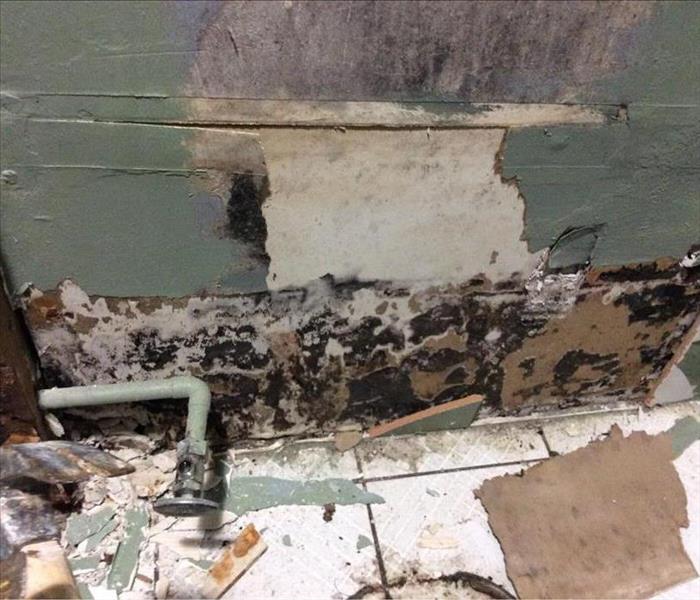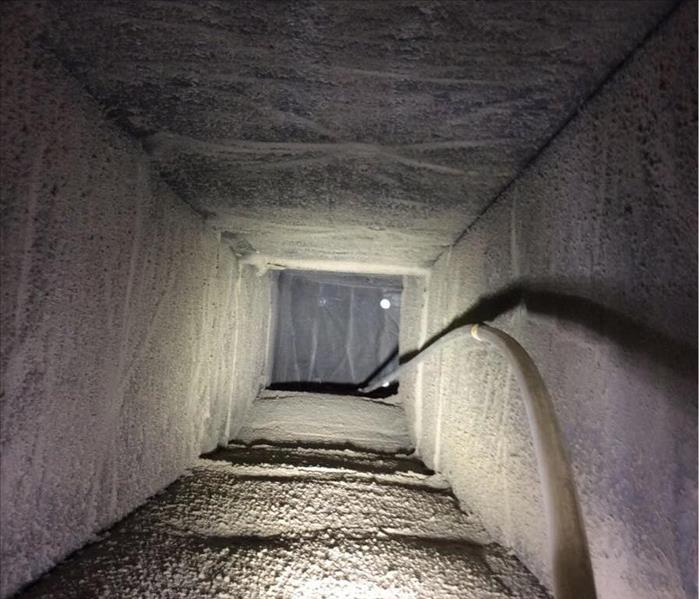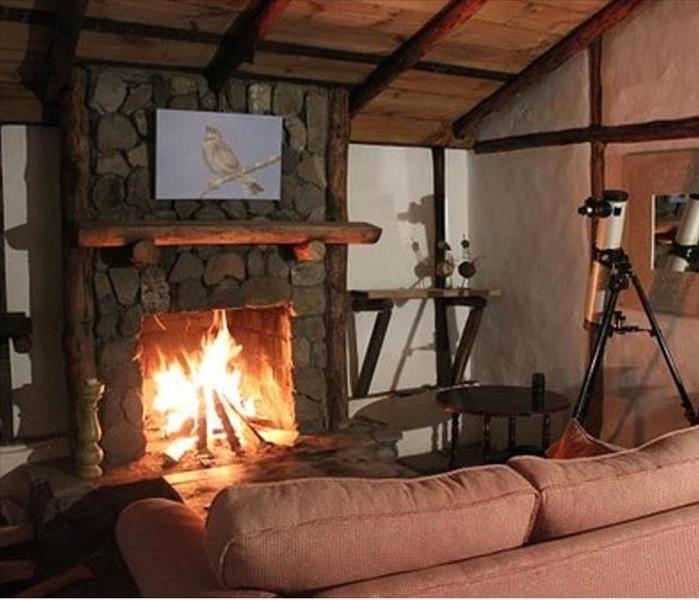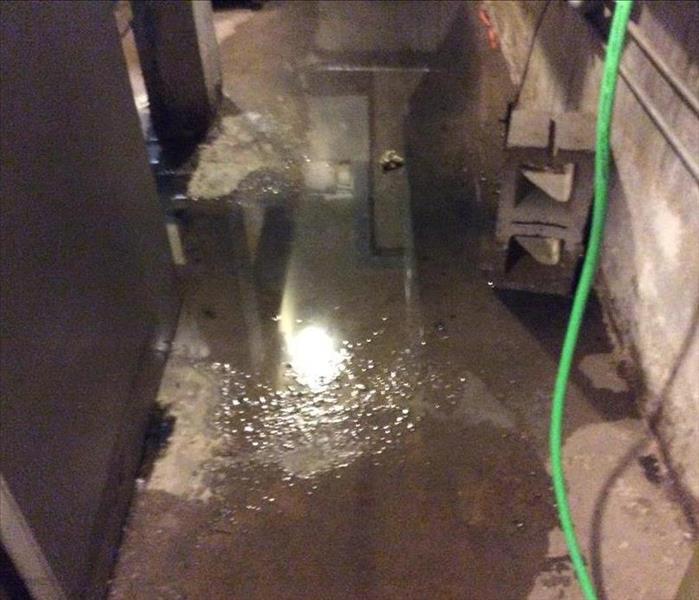Archived Blog Posts
TEAM MAJESKI
7/29/2022 (Permalink)
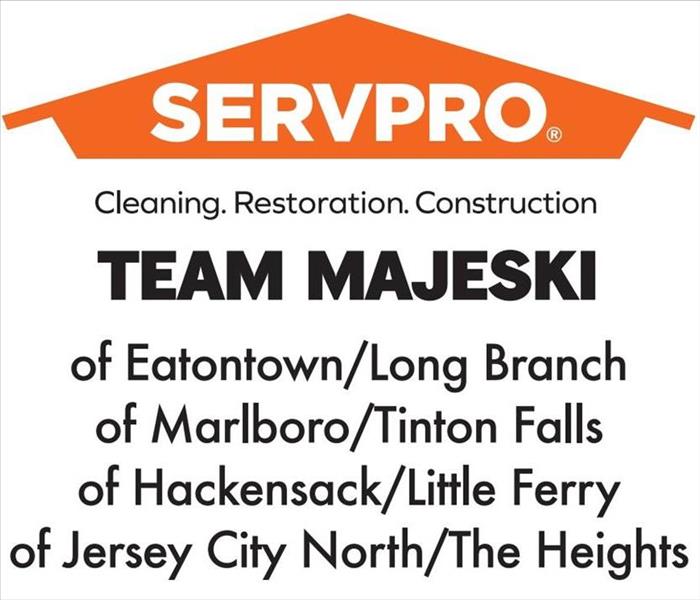 SERVPRO TEAM MAJESKI logo.
SERVPRO TEAM MAJESKI logo.
If you're in need of home restoration, SERVPRO TEAM MAJESKI is the best choice for the job! We have a team of experienced professionals who are dedicated to restoring your home or business back to its original condition. We understand that disasters can happen at any time, which is why we offer 24/7 emergency service. We also work with insurance companies to make the process as smooth as possible for you. So, if you're looking for quality service and professionalism, look no further than SERVPRO TEAM MAJESKI!
SERVPRO TEAM MAJESKI includes:
SERVPRO of Eatontown/Long Branch
SERVPRO of Hackensack/Little Ferry
SERVPRO of Jersey City North/The Heights
SERVPRO of Marlboro/Tinton Falls
SERVPRO TEAM MAJESKI is also partnered with most insurance companies, which means we can work directly with your insurance company to help you through the restoration process. We will work with you every step of the way to make sure you are satisfied with the service we provide
Please contact us today! We would be happy to answer any questions you may have. We look forward to hearing from you soon!
The Challenge with Mold Sampling
5/27/2022 (Permalink)
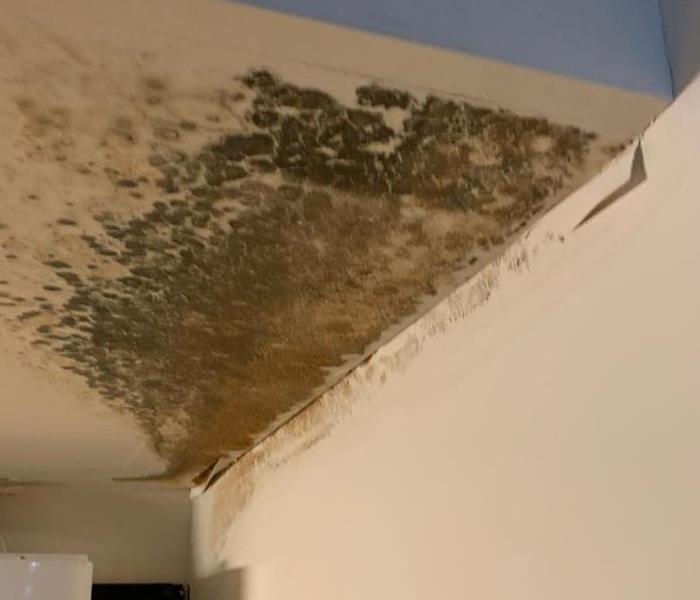 Noticeable mold growth in the home.
Noticeable mold growth in the home.
The Challenge with Mold Testing or Sampling
Is sampling for mold needed?
In most cases, if visible mold growth is present, sampling is unnecessary. Since no EPA or other federal limits have been set for mold or mold spores, sampling cannot be used to check a building's compliance with federal mold standards. Surface sampling may be useful to determine if an area has been adequately cleaned or remediated. Sampling for mold should be conducted by professionals who have specific experience in designing mold sampling protocols, sampling methods, and interpreting results. Sample analysis should follow analytical methods recommended by the American Industrial Hygiene Association (AIHA), the American Conference of Governmental Industrial Hygienists (ACGIH), or other professional organizations.
Are there federal regulations or standards regarding mold testing?
Standards or Threshold Limit Values (TLVs) for airborne concentrations of mold, or mold spores, have not been set. Currently, there are no EPA regulations or standards for airborne mold contaminants.
Please note that SERVPRO does not conduct mold testing. We are specialists in the remediation of mold and believe that separating mold detection and its remediation eliminates any potential conflict of interest. Call us today for a free consultation.
Drying hard wood floors
5/27/2022 (Permalink)
 Water from the bathroom caused damage to this floor. Luckily it was dried and repaired instead of being removed.
Water from the bathroom caused damage to this floor. Luckily it was dried and repaired instead of being removed.
Water damage to hardwood floors can be tricky. SERVPRO of Hackensack/Little Ferry has the ability and equipment to save your hardwood floors if it is addressed quickly. After our technicians have accessed the loss and determined that the hardwood floors can be saved, will set up our specialized equipment. Insurance companies and adjusters like it when we can save the floors because it is more cost-effective which in turn keeps down premiums. The floor drying mat system removes the excess water from underneath the hardwood floors. Stabilization takes between two to six days but in some cases may take longer. The goal is to remove the visible cupping and to get as close to appropriate equilibrium moisture content without overdrying. If you encounter water damage and your wood floors are affected, please call SERVPRO for a free consultation. We will respond quickly and help you with your loss and make it, “Like it never even happened.”
Commercial Carpet Cleaning
5/27/2022 (Permalink)
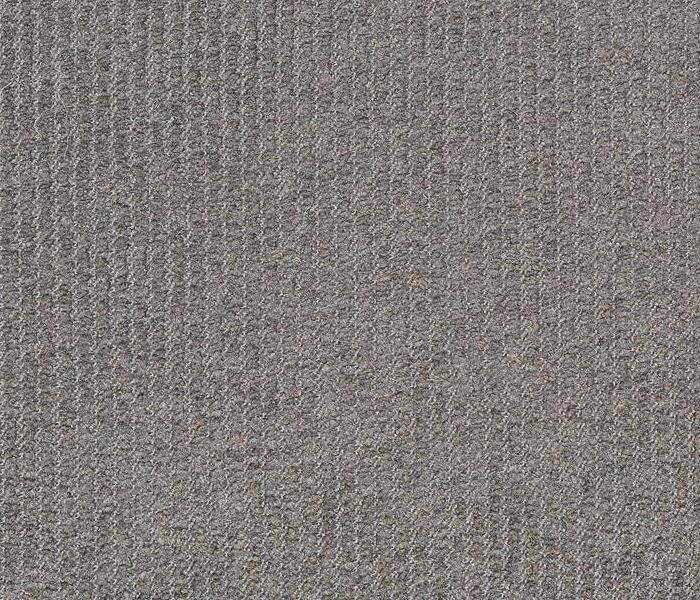 A commercial carpet beginning to show signs of wear.
A commercial carpet beginning to show signs of wear.
Routine carpet cleaning is important to commercial buildings because carpets act as a filter, trapping dirt, dust animal hair, and basically anything you walk on outside the building. Manufactures suggest the following:
- If you have a spill attend to the stain as soon as possible because the longer the stain stands the harder it will be to remove later
- Buying a good vacuum and vacuum regularly so the soils don’t build-up
- Maintenance carpet cleaning in light soil rating = 1-2 times annually, medium soil rating = 6-12 times annually and heavy soil rating = 12-52 times annually
Clean carpets also allow for a healthier work environment, maintain the value of the property and send a message to your clients/customers that you take pride in your company and that shows them you will do the same for them. If you would like to set up a carpet cleaning maintenance schedule please call us.
Tornado Prep
4/22/2022 (Permalink)
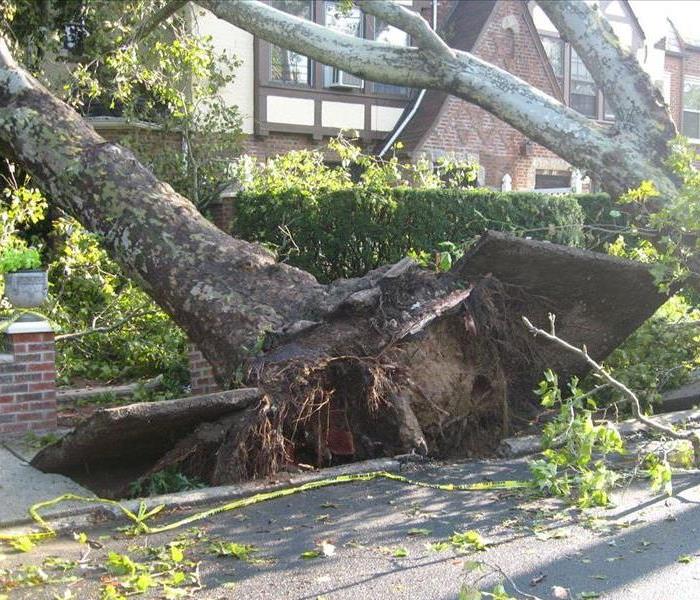 A tornado toppled this NJ tree.
A tornado toppled this NJ tree.
I don’t remember hearing tornado warnings when I was younger. Tornadoes were a phenomenon found in far-off places like Kansas. However, over the past couple of years, tornado warnings have become common and some devastating tornadoes have hit NJ in the past year. Is this the result of global warming? Like everything these days that seems to be a political question, but the fact remains that it is a new threat that NJ residents and business owners now need to consider.
IF YOU ARE UNDER A TORNADO WARNING, FIND SAFE SHELTER RIGHT AWAY AND REMEMBER THESE TIPS:
- Go to a safe room, basement, or storm cellar. If there is no basement, get to a small, interior room on the lowest level.
- Stay away from windows, doors, and outside walls.
- If you can safely get to a sturdy building, do so immediately.
- Do not get under an overpass or bridge. You’re safer in a low, flat location.
- Watch out for flying debris that can cause injury or death.
- Use your arms to protect your head and neck.
After the storm has passed:
- If you are trapped, cover your mouth with a cloth or mask to avoid breathing dust. Try to send a text, bang on a pipe or wall, or use a whistle instead of shouting.
- Stay clear of fallen power lines or broken utility lines.
- Do not enter damaged buildings until you are told that they are safe.
- Save your phone calls for emergencies. Phone systems are often down or busy after a disaster. Use text messaging or social media to communicate with family and friends.
- Be careful during clean-up. Wear thick-soled shoes, long pants, and work gloves.
Of course, the SERVPRO Ready Plan APP will also prove invaluable if a disaster does occur. Download it from the App Store today.
How to use a Fire Extinguisher
3/31/2022 (Permalink)
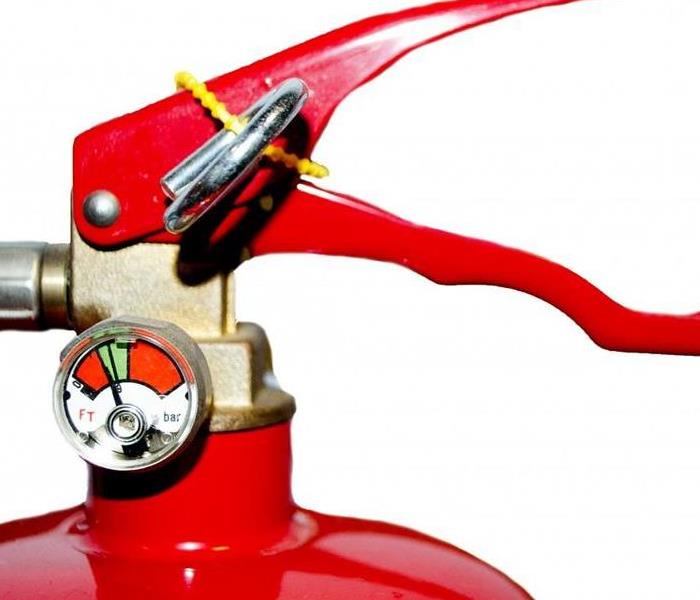 A close-up photo of a fire extinguisher handle.
A close-up photo of a fire extinguisher handle.
In a prior blog, we discussed the acronym R.A.C.E. which represents the steps to take in care of a fire. Those steps are Rescue, Alarm, Contain, and Extinguish. Another acronym used in training for a fire response is P.A.S.S. which stands for Pull, Aim, Squeeze, and Sweep. These are the steps for using a fire extinguisher.
First, you want to make sure you have the correct fire extinguisher. In most settings, an ABC class extinguisher is most common. An ABC extinguisher puts out most fires including:
Class A fires – common materials including wood which typically produce Ashes.
Class B fires – flammable liquids that are typically stored in a Barrel, such as gasoline.
Class C fires – electrical fires that have an electrical Current
Fires that require a more specialized type of extinguisher include class D fires which are flammable metal or class K fires which are high temperature cooking oil fires.
The steps for using a fire extinguisher are:
P: Pull the pin that prevents the extinguisher from discharging accidentally.
A: Aim the nozzle at the base of the fire
S: Squeeze the handle/trigger to discharge the extinguishing agent
S: Sweep the nozzle back and forth to cover the burning material
Team Majeski
3/31/2022 (Permalink)
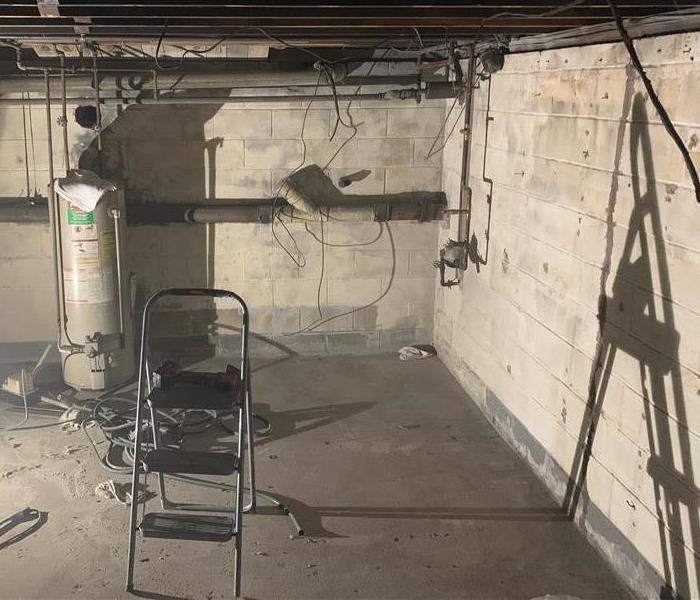 Dry ice blasting was completed in this NJ basement.
Dry ice blasting was completed in this NJ basement.
Why SERVPRO of Hackensack/Little Ferry?
SERVPRO of Hackensack/Little Ferry is a franchise of owner John Majeski. John currently owns 3 SERVPRO franchises across NJ serving clients from New York to South Jersey. The expanding team allows us to have both redundancy and specialized resources.
Redundancy is important because disasters often happen all at once, such as a cold spell or severe storm. Our ability to move resources and personnel around the state allows us to respond quickly even when there is a large demand for services.
Specialization is also important because many pieces of equipment are extremely expensive. A single franchise would have a hard time justifying a major purchase, such as a dry ice blaster. The ability to share resources amongst the Team Majeski franchises allows us greater capability.
Finally, being part of the national SERVPRO brand allows us to call on the resources of our corporate disaster response teams in the case of a major disaster. Our teams also respond to these calls as we did last year when we sent multiple teams to Texas.
Large or small, when a disaster strikes, count on the SERVPRO franchises of Team Majeski to make it “Like it never even happened.”
Commercial Mold Prevention
3/31/2022 (Permalink)
 SERVPRO vans outside a commercial facility in NJ on a Saturday morning.
SERVPRO vans outside a commercial facility in NJ on a Saturday morning.
Mold growth is NOT a new subject. In fact, many commercial structures end up closing their doors to business for months due to mold contamination. That is why in any large facility the importance of maintaining that facility to deter water leaks, moisture problems, and poor air quality should be the main focus.
Most mold growth is discovered after we get called to remediate a water issue, and we discover it growing behind removed material such as sheet rock, sink vanities, cabinetry, etc. In many instances, the mold growth has gone undetected for months, if not years.
According to the Environmental Protection Agency, the key to mold control is moisture control. Solve moisture problems before they become mold problems.
Mold Prevention Tips
- Fix leaky plumbing and leaks in the building as soon as possible.
- Watch for condensation and wet spots.
- Prevent moisture due to condensation by increasing surface temperature or reducing the moisture level in the air (humidity). To increase surface temperature, insulate or increase air circulation. To reduce the moisture level in air, repair leaks, increase ventilation (if outside air is cold and dry), or dehumidify (if outdoor air is warm and humid).
- Keep heating, ventilation, and air conditioning (HVAC) drip pans clean, flowing properly and unobstructed.
- Vent moisture-generating appliances, such as dryers, to the outside where possible.
- Maintain low indoor humidity, below 60% relative humidity (RH), ideally 30-50%, if possible.
- Perform regular building/HVAC inspections and maintenance as scheduled.
- Clean and dry wet or damp spots within 48 hours.
- Don't let foundations stay wet. Provide drainage and slope the ground away from the foundation.
Potential health concerns are also an important reason to prevent mold growth and to remediate/clean up any existing indoor mold growth.
Obviously staying on top of moisture issues is the key to keeping mold under control.
Should your commercial building need mold remediation, remember that SERVPRO has specially trained technicians that can handle the job. No job is too large or small, and we are available 24/7.
What to do in case of a fire
3/30/2022 (Permalink)
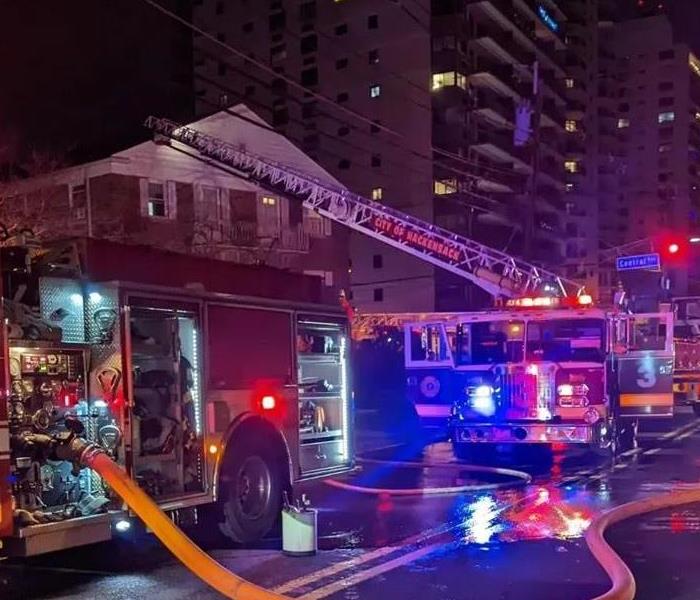 The Hackensack, NJ Fire Department in action.
The Hackensack, NJ Fire Department in action.
What should you do if you encounter a fire in your home or business? The common acronym R.A.C.E. provides some helpful guidelines. This stands for Rescue, Alarm, Contain, and Extinguish. These are the priority actions that should be taken. Unfortunately, they are often not followed in a panic as people typically try to fight the fire themselves, which costs precious time.
Rescue – The priority is life safety. Smoke and other deadly products of combustion can incapacitate an individual with just a few breaths. The top priority is rescuing anyone who is in personal danger.
Alarm – Sound the alarm by hitting the fire button on your alarm system or calling 911. A fire doubles in size every 45 seconds so alerting the fire department to begin their response is your second priority.
Contain – Stopping the spread of the fire is even more important than trying to extinguish the fire. Closing doors is a simple and effective way of stabilizing the scene and limiting fire spread. Moving a car away from a burning shed or using a garden hose to spray the vinyl siding next to a grill fire can likewise stop the fire from spreading and causing significantly more damage. All of these actions should only be attempted if they can be done safely.
Extinguish – Only after the first three actions have been completed should you attempt to extinguish the fire. Again, only if it can be done safely. Keep in mind that different types of fires (electrical, grease, gas-fed) may require special techniques to extinguish. At a minimum, every home and business should have an ABC class fire extinguisher handy as this is the most versatile type of extinguisher.
Of course, once the fire is extinguished, call SERVPRO because a quick response and immediate action can reduce the extent of smoke, water, and other damage.
Retail Floor Remediation
2/28/2022 (Permalink)
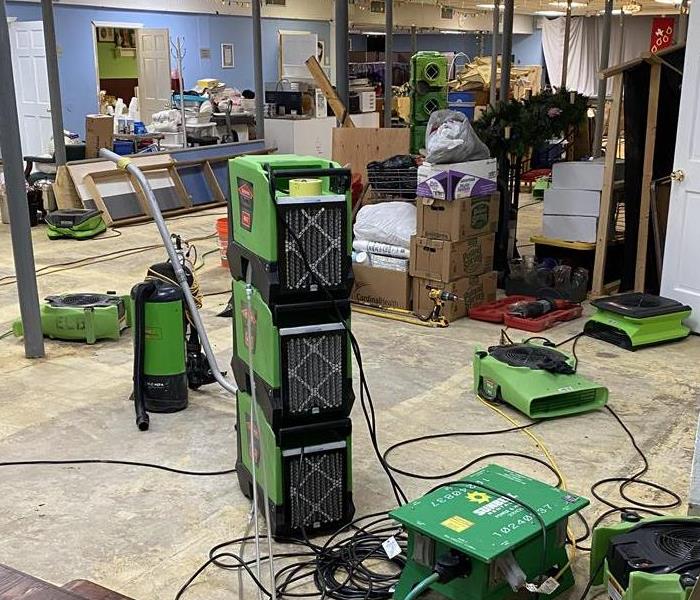 A recent job was caused by sewage backup.
A recent job was caused by sewage backup.
If your retail store suffers a water leak or flood, you must call SERVPRO as soon as possible. The faster we arrive, the more quickly we can take action to get your shop back to preloss condition so you can resume operating.
One of the essential steps in fixing water damage in your NJ business is removing water from the carpets. Some of the issues with wet carpets include:
- Causing delamination and requiring replacing.
- Preventing you from re-opening your store.
- Providing a potential breeding ground for mold
Our teams have a range of tools to help with water extraction. We have truck-mounted and freestanding pumps to deal with large puddles of water, even if your business has multiple stories. We have small, light carpet wands for vacuuming water from the carpets’ surface and getting into remote areas. We also have extraction tools that rely on the weight of our technician standing on them to press the water out of the carpet.
It is often possible to save carpets from water damage with thorough drying.
Certified: SERVPRO Cleaned
2/27/2022 (Permalink)
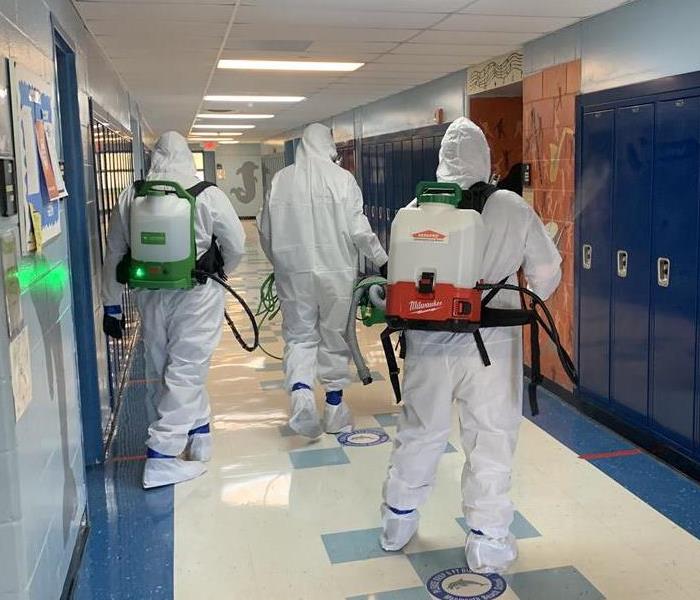 A team of technicians from SERVPRO cleans an NJ school after a COVID-19 outbreak.
A team of technicians from SERVPRO cleans an NJ school after a COVID-19 outbreak.
Let us help you get back to business
As our communities reopen, we’re all moving back toward a new kind of normal. The expectations of visitors, customers, and employees who come into our establishments have evolved, and staying safe and well is a top concern. The global COVID-19 pandemic has changed what it means to be clean, and we’ve developed a program to help your business meet the new higher standard of clean that is now expected.
Certified: SERVPRO Cleaned is a defensive cleaning program we’re offering to businesses and commercial locations to address the current COVID-19 pandemic. This proactive viral, pathogen cleaning program goes well beyond janitorial or carpet cleaning. By choosing Certified: SERVPRO Cleaned, you, your employees, your customers, and your community can rest assured that you’ve selected a higher cleaning standard – you are Certified: SERVPRO Cleaned.
Extensive training and specialized products
As the #1 choice in cleanup and restoration*, we stand on more than 50 years of experience and expertise to help your business become Certified: SERVPRO Cleaned. Beyond fire & water, SERVPRO professionals are trained and experienced in biohazard decontamination and chemical spills – always adhering to the cleaning and decontamination standards set by the Centers for Disease Control and Prevention and local authorities.
From formulating and creating our proprietary cleaning products, like SERVPROXIDE, at our headquarters in Gallatin, TN, to taking the utmost care while disinfecting, we will ensure you and your business are set up to inspire consumer confidence as the economy continues to reopen.
3 C’s – Consult, Clean, and Certify
When the stakes are this high, you want a partner who has developed an industry-leading, proprietary training program, cleaning solutions, and remediation processes over decades. We’ve cleaned up some of the most challenging biohazards imaginable. Certified: SERVPRO Cleaned reflects our unique experiences and capabilities. The program is grounded in our uniqueness. 3 C’s: Consult, Clean, and Certify.
Consult
Every New Jersey business is different, which is why you’ll be assigned a Cleaning Protocol Consultant who understands your business and will create a cleaning program to meet your specific needs. This program will be developed based on your business type, size of space, amount of high-frequency touchpoints, foot traffic, and congestion points.
Clean
Based on your specific business needs, your location will undergo a thorough, deep clean, using exclusive cleaning products, according to protocols set forth by the CDC. Our employees have years of experience, and we will go beyond the scope of work that regular janitorial staff performs. Cleanup procedures generally include cleaning porous and non-porous surfaces, disinfecting non-porous surfaces, cleaning and disinfecting equipment, tools, and/or supplies used for the cleanup process, and disposal of hazardous materials. In the event of a suspected or confirmed COVID-19 event, we will be there cleaning within 24 hours to ensure you get back to business as quickly as possible.
Certify
Once your New Jersey business location has been Certified: SERVPRO Cleaned, you will gain access to proprietary signage, digital emblems, and other collateral that communicates that you’ve selected a higher standard of clean available to help protect your employees and customers. And because we add the day, month, and year to that proprietary stamp of clean, your guests will know that not only did you choose Certified: SERVPRO Cleaned, but that your location is being cleaned regularly at this standard.
Call today for a Certified: SERVPRO Cleaned Consultation
We’re Here to Help – 24 hours a day, seven days a week – until life is back to normal in the communities we all call home.
Preventing Workplace Fires
2/27/2022 (Permalink)
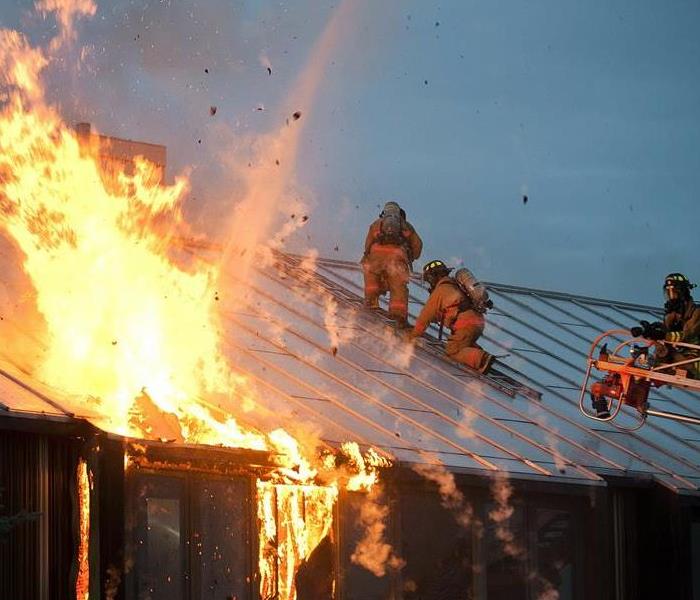 Firefighters battle a heavy fire in a commercial building.
Firefighters battle a heavy fire in a commercial building.
Fire Safety in the workplace is important all year round and our team here at SERVPRO of Hackensack/Little Ferry would like to review workplace fire prevention & safety.
Here is a top-10 of tips to ensure a fire-safe workplace:
Step 1. Get Organized– Practice good workplace housekeeping. Clutter contributes to fires by providing fuel and by preventing access to exits and emergency equipment.
Step 2. Designated Smoking Areas – Smoke only in designated areas and extinguish smoking materials safely. Never smoke in storerooms or chemical storage areas.
Step 3. Fire Extinguishers – Maintaining the appropriate type and number of fire extinguishers and learning how to properly use a fire extinguisher.
Step 4. Electrical Hazards – Report all electrical hazards. Many fires start in faulty wiring and malfunctioning electrical equipment.
Step 5. Access to Control Panels – Electrical control panels need to have free access maintained so that the electricity could be shut off easily.
Step 6. Sprinkler Systems & Smoke Detectors – Never block sprinklers, firefighting equipment, or emergency exits. Observe clearances when stacking materials. Test sprinkler systems and smoke detectors at least annually.
Step 7. Chemical Safety – Use and store chemicals safely. Read the label and the Safety Data Sheet to determine flammability and other fire hazards. Provide adequate ventilation when using and storing these substances.
Step 8. Waste Control & Storage – Control the accumulations of flammable and combustible waste materials and residues so that they do not contribute to a fire emergency.
Step 9. Exits – Emergency exit diagrams should be posted and emergency exits should be well lit with neon-regulation signs.
Step 10. Contact Info – Employees should have a list of emergency contact phone numbers in case of emergency. Remember that people will often panic in an intense situation; therefore basics such as the company address, phone number, and floor plan should be posted. The SERVPRO Emergency Ready Plan app is a great tool for collecting, storing, and sharing this information.
For additional information or a free consultation, please call us today.
Tools for extracting storm water
2/27/2022 (Permalink)
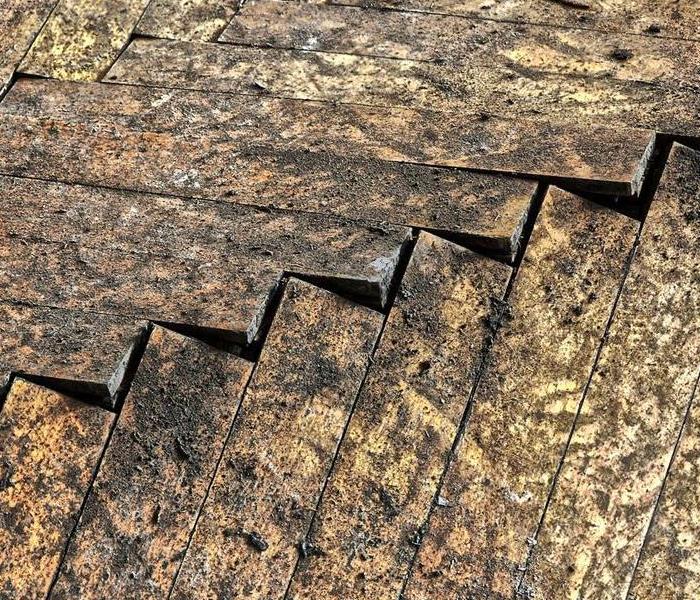 Wooden floorboards are seriously damaged by water.
Wooden floorboards are seriously damaged by water.
How Multiple Extractors Can Help Flooded NJ Properties
Effective water removal after a flood requires multiple extraction devices. These disasters can occur in both natural rising water levels and through the structural breaches that can plague homes and businesses after severe weather events. Considering the harsh Nor’easters we get in NJ, restoration teams should stay prepared to respond quickly with the equipment to help.
The need for flood removal in NJ residences is an immediate concern that follows these disasters and does not readily subside on its own. Many factors come into play when standing water exists. Choosing extraction equipment relates to the depth of the standing water, the materials exposed, the location of this damage, and the availability of power for the chosen equipment. Each of these factors can point our SERVPRO technicians to the appropriate extraction tools for the job.
In many cases, successfully removing all standing water from your property involves the use of more than one extracting tool or pump. Even in situations where we use powerful machines like the truck-mount or self-priming pumps to remove standing water, the intake hoses for these machines are not rated to work well when the depth of pooling water drops under two inches. Once this occurs and there is a noteworthy decrease in constant water draw, other units must pick up the remaining water.
Smaller and more portable units such as our wet-vacs with extraction wands can help to remove water once the overall depth drops below this critical two-inch margin. Eliminating as much of the standing water as feasible helps later drying with air movers and dehumidifiers to become more effective and efficient, so we remove as much pooling water and excessive moisture as possible with our light wands.
Flooding can be a devastating situation for many area homes after a severe weather event, but our SERVPRO of Hackensack/Little Ferry team can help. We have multiple extraction units to help rapidly dry your property and make it “Like it never even happened.”
Preparing your business for a disaster
2/27/2022 (Permalink)
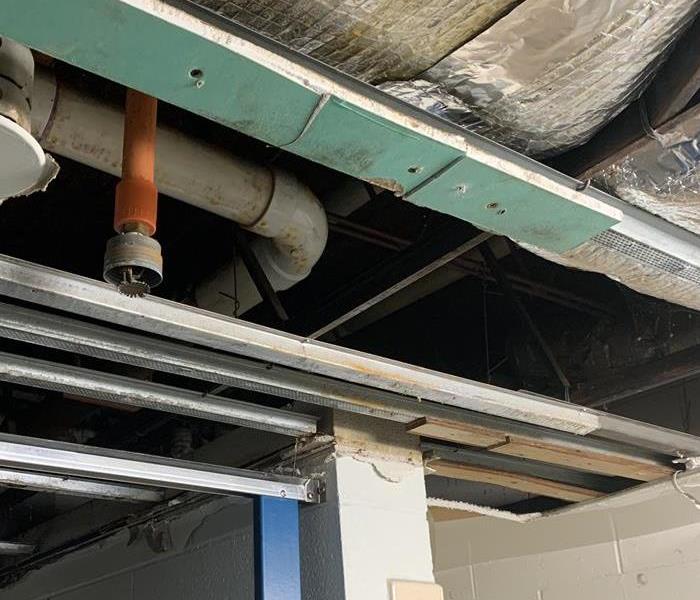 The damage was caused to one NJ business.
The damage was caused to one NJ business.
Disasters like water damage, fire damage, or flood, no matter how big or small, can never be predicted. But you CAN prepare for them!
The best way to reduce business interruption following a disaster is to plan for it NOW. Preparation is a key component for making it through any size disaster, no matter how big or small.
According to the latest industry research, 50% of all businesses never recover after a disaster. Of the businesses that do open, approximately 75% of those businesses had a plan in place.
One of our most effective tools in helping customers in the event of an emergency is the ERP our Emergency Ready Profile. This profile provides all the critical information needed in emergency situations and minimizes business interruption.
The main reason to have an ERP done for your facility or home is:
- It provides a concise Profile Document that contains only the critical information needed in the event of an emergency.
- It is a guide to help you get back into your building following a disaster.
- It is an identification of the line of command for authorizing work to begin.
- It provides facility details such as shut-off valve locations, priority areas, and priority contact information.
This invaluable service is offered at no cost to our customers and leaves them with peace of mind that their home, office, or school will be ready for whatever happens.
This service can also be done for residential properties, so homeowners can rest assured they have the information at hand when a disaster strikes.
Be prepared! Call SERVPRO of Hackensack/Little Ferry to schedule your Emergency Ready Profile and rest easy in knowing that we will be faster to your disaster!
Preparing your business for a disaster
2/8/2022 (Permalink)
 SERVPRO of Hackensack assisting a commercial customer on a Saturday.
SERVPRO of Hackensack assisting a commercial customer on a Saturday.
Disasters like water damage, fire damage or flood, no matter how big or small, can never be predicted. But you CAN prepare for them!
The best way to reduce business interruption following a disaster is to plan for it NOW. Preparation is a key component for making it through any size disaster, no matter how big or small.
According to the latest industry research, 50% of all businesses never recover after a disaster. Of the businesses that do open, approximately 75% of those businesses had a plan in place.
One of our most effective tools in helping customers in the event of an emergency is the ERP or Emergency Ready Profile. This profile provides all the critical information needed in emergency situations and minimizes business interruption.
The main reason to have an ERP done for your facility or home is:
- It provides a concise Profile Document that contains only the critical information needed in the event of an emergency.
- It is a guide to help you get back into your building following a disaster.
- It is an identification of the line of command for authorizing work to begin.
- It provides facility details such as shut-off valve locations, priority areas, and priority contact information.
This invaluable service is offered at no cost to our customers and leaves them with peace of mind that their home, office, or school will be ready for whatever happens.
This service can also be done for residential properties, so homeowners can rest assured they have the information at hand when a disaster strikes.
Be prepared! Call SERVPRO to schedule your Emergency Ready Profile and rest easy knowing that we will be faster to your disaster!
Proper Water Remediation
1/31/2022 (Permalink)
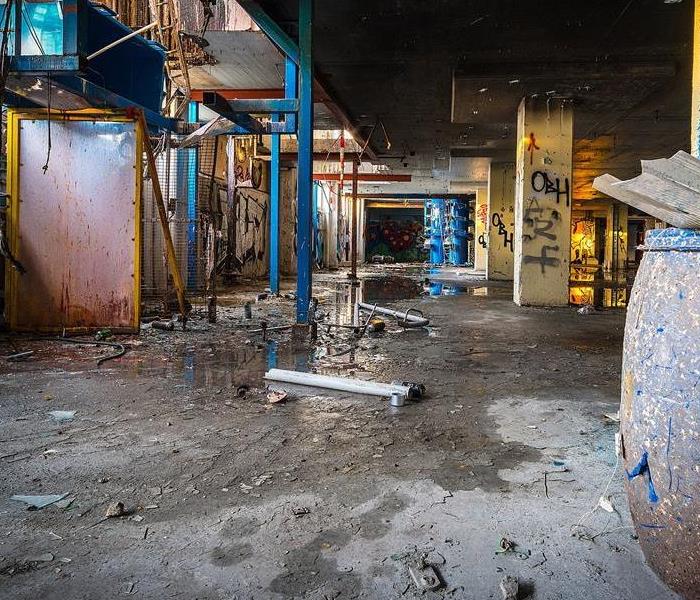 Water damage in a warehouse.
Water damage in a warehouse.
According to Wikipedia, wastewater is any water that has been affected by human use. But did you know that there are different grades of wastewater? Should your home be affected by water damage, it is imperative to act quickly to mitigate damage and prevent further damage such as mold growth.
CLEAN WATER
Floodwater that does not pose an immediate health threat is known as clean water. Clean water floods can result from malfunctioning appliances, toilet holding tanks, and melting snow and rainwater. Clean water home floods are generally safe for you to clean up yourself, but remember--time is an important factor. Standing clean water can become greywater if left untreated.
GREYWATER
Greywater refers to wastewater that is not contaminated with fecal matter. As far as household wastewater goes, greywater could include water from bathtubs and showers, appliances such as dishwashers, a weather event, an overflowing plumbing fixture or appliance or even a broken pipe.
When flooding occurs, it can saturate carpeting, furniture and drywall. If you experience a home flood with greywater, wear protective gear, and keep children and pets away from the flooded area. If the flood is extensive, such as several inches of water in the basement, it is advisable to hire professionals to safely clean up and decontaminate the area. Cleanup must begin as soon as possible as greywater can become blackwater if left untreated.
BLACKWATER
Blackwater is wastewater contaminated with human waste, floodwater, or water contaminated with chemicals.
Blackwater floods are the most dangerous and the most destructive and must be cleaned and mitigated immediately. Because of the unsanitary conditions of the water, items such as carpets, upholstery, and drywall are often unsalvageable. Contact with blackwater can cause illness in both humans and pets.
Having water damage in your home is never a pleasant experience, and oftentimes it is destructive, and disruptive - affecting multiple rooms, floors, levels – of a home, office, or multiple dwelling. Knowing whom to call and when could mean all the difference in keeping contamination and damage to a minimum.
Remember that you can call SERVPRO of Hackensack/Little Ferry twenty-four hours a day, 365 days a year. We will be there to survey and clean up your water damage quickly and get you back to your normal routine as quickly as possible.
Leaking Hot Water Heater?
1/31/2022 (Permalink)
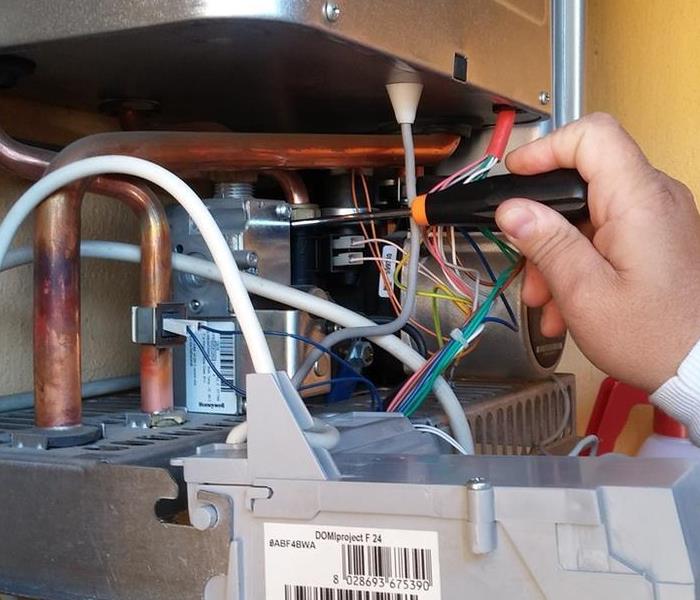 Performing maintenance on a hot water heater.
Performing maintenance on a hot water heater.
Sooner or later everyone will experience a leaking hot water heater. But this minor emergency doesn’t have to become a major disaster.
Here’s a list of steps you can take to minimize the damage from a leaking heater:
Confirm that it is, in fact, your water heater that’s leaking.
Sometimes looks can be deceiving. If you see a puddle of water under your hot water heater, it’s obvious why your first thought would be a heater leak. But that may, in fact, not be the problem.
If it’s a small puddle, your first step should be to clean up the water and inspect the heater. Do you see any wet fittings or other signs of leakage from the tank itself? Check your surroundings for other water sources? Maybe there’s a nearby window or pipe that is the actual source of the water you see. Don’t forget about the effect of gravity! If your floor slopes, the water may have traveled from a different source point to the place where it ultimately pooled.
Turn off the water.
If you do have a leaking water heater, the next recommended step is to turn off the water.
Your hot water heater should have its own shut-off valve.
If your valve is broken, you may need to shut off the water to your home. If you need assistance, reach out to your local expert professionals.
Cut the power.
Whether you have a gas or electrically powered water heater, your next step is to shut off the fuel source that powers your heater.
A gas tank should have its own dedicated shut-off gas valve. You want to make sure the gas is off so your heater will be safe to work with. If you have an electric tank, you can shut off the power at the breaker.
Try to determine the location and cause of the leak.
Now that the water and power are off, you will be in a better position to assess your situation and try to determine the location and course of your leak:
Check the pipes that connect to your heater for any loose fittings. This may just require quick tightening with a wrench.
- Check your pressure relief valve. If the temperature or pressure is too high, this could be causing valve leaks. Your water heater should be around 120 degrees Fahrenheit and the pressure shouldn’t be over 80 PSI.
- Check the drain valve to make sure it doesn’t need replacing.
- Check the bottom of the water heater itself -- it may be that the tank itself is cracked and needs to be replaced.
If you determine that it is your tank that is leaking and the leak is serious, you may want to drain the tank to minimize further water damage.
Hopefully, the leak from your hot water heater hasn’t caused too much water damage. But if you need professional assistance, the restoration pros at SERVPRO of Hackensack/Little Ferry are here to help. We’re equipped to handle any size water damage restoration needed for either residential or commercial buildings.
Winter Storm Prep for Businesses
1/31/2022 (Permalink)
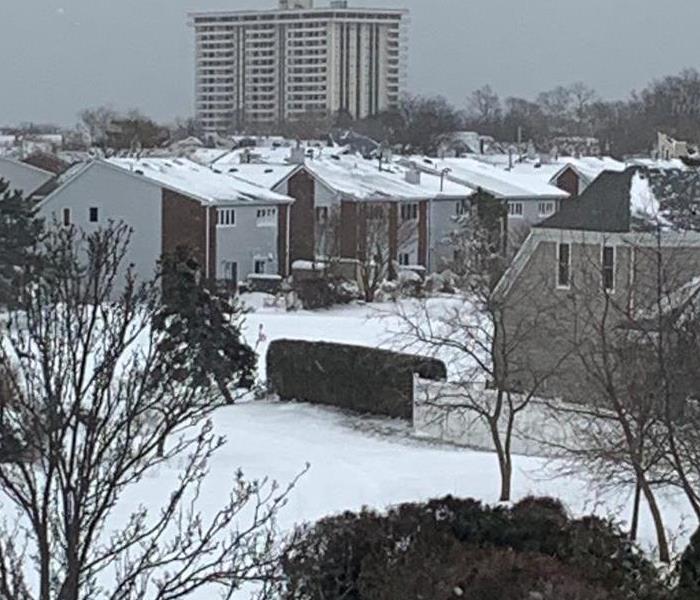 A winter storm hits NJ.
A winter storm hits NJ.
New Jersey is getting a significant storm that can batter us with wind, rain, snow, and flooding.
If you own a business that is in a high-risk area for flooding, these tips can help you minimize the damage you may be unfortunate enough to endure
Get Prepared
1. Store important documents and valuables in a location that will be dry and secure.
2. Check your gutters and spouts to ensure they won’t be clogged.
3. Make sure to have a working sump pump.
4. If possible, move any electronics or other costly items to a higher floor or at least try to raise them several feet off the floor to minimize any flood damage.
Safety First
1. Turn off electricity in any affected areas. Even if there’s a power outage, the power may be suddenly restored without notice and could cause a shock hazard.
2. Be cautious of any structural compromises or falling debris ff you choose to enter a damaged building.
3. Keep out of the floodwater as much as possible to reduce the risk of slip-and-fall hazards and bacterial contamination.
4. Be sure to wear protective clothing – including slip-resistant shoes, gloves, eye protection, and a mask – in order to minimize potential risks.
Clean-Up ASAP
When flooding occurs, the quicker you can start your cleaning and restoration efforts, the better your chances of minimizing long-term damage and costs.
Here at SERVPRO of Hackensack/Little Ferry, our expert technicians are available 24/7 to respond to any flooding emergency big or small. We have the advanced training, skills, and equipment necessary to clean and restore your business to its pre-flood condition as quickly as possible.
Smoke Damage Requires Professional Help
1/31/2022 (Permalink)
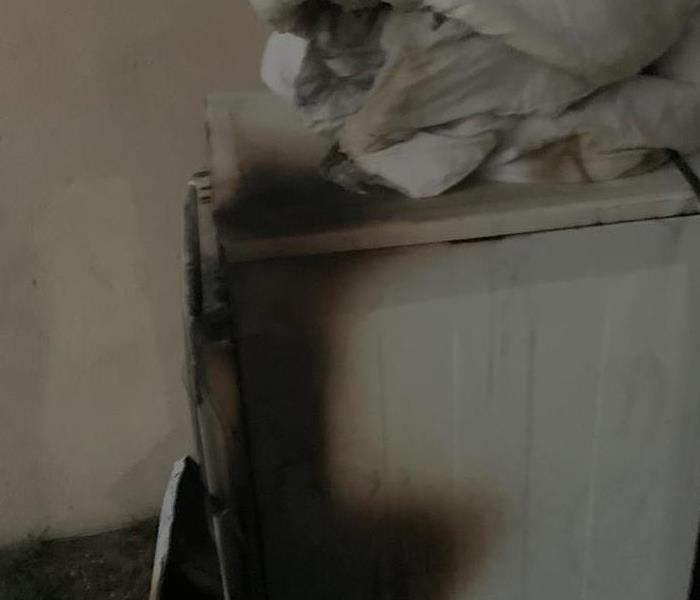 The aftermath of a dryer fire in NJ.
The aftermath of a dryer fire in NJ.
Smoke damage can make your home a dirty, smelling mess. Whether you’ve suffered a major fire catastrophe or had smoke damage accumulate from the presence of fire in your home, you want to start cleaning up smoke stains as soon as you can in order to prevent permanent damage.
Our team at SERVPRO of Hackensack/Little Ferry has seen our share of fire incidents as Professional Cleaning and Restoration Leaders in this community so, we know what smoke damage can do to a home.
Make Sure the Area is Safe
If your incident was a small kitchen grease fire, there is probably minimal risk. However, if the fire burned through a significant section of your home, you want to be sure the area you enter is structurally sound and cleared by officials before anyone can attempt to start fixing it.
Dispose of Everything that Can’t Be Salvaged
The first step of the cleaning process is to get rid of everything that can’t be saved.
Be especially wary of food that may have been contaminated, plastics that may have melted, or materials that are too stained to be cleaned.
Vacuum Up Debris
We have specialized equipment to clean up debris.
Soot is greasy, it is best to wait for a professional to clean soot-stained surfaces than make a bigger mess.
Clean up Odors
You can clean some fabric and upholstery yourself that may have avoided smoke stains may still have absorbed odors.
If you have fabrics that are dry clean only, be sure to take them to a dry cleaner that specializes in smoke removal or fire treatment.
For fabrics that can go in a washing machine, add a cup of white vinegar and a cup of baking soda to your regular load to clean the smoke damage. A mixture of white vinegar and baking soda can also be used to spot clean carpeting and upholstery.
Seal Surfaces
Even after a full cleaning, there may still be some lingering stains and odors. To mitigate this, we use a sealing primer.
We use specialized sealers for different surfaces. For example, on painted walls, we use a stain concealing primer followed by a topcoat of latex paint. For wooden surfaces, we use a sealer designed specifically for wood or particleboard.
If you need professional assistance in cleaning up after a fire incident, SERVPRO of Hackensack/Little Ferry is here to help. Our specialized technicians have the advanced training and equipment needed to clean and restore your property, helping you get your life and property back to normal ASAP.
NJ Deep Freeze of 2022
1/31/2022 (Permalink)
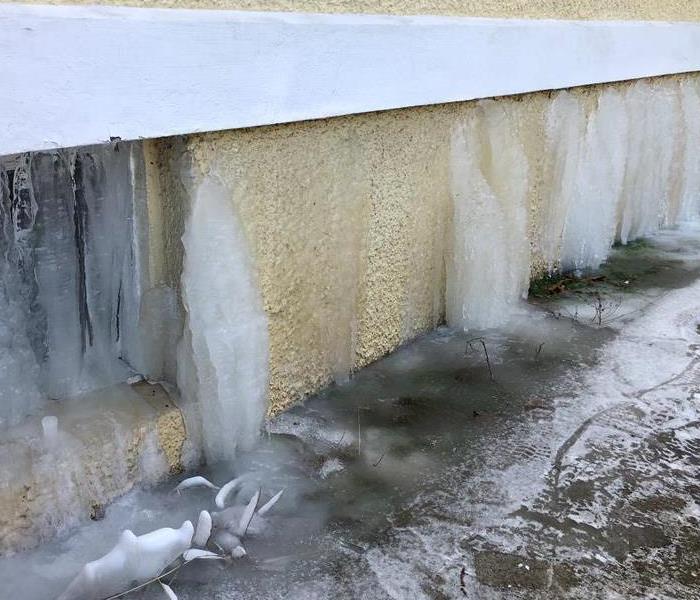 Water from a broken pipe inside exits this home causing icicles down the exterior wall.
Water from a broken pipe inside exits this home causing icicles down the exterior wall.
New Jersey is experiencing a deep freeze that is expected to continue for at least the next week. This has and will result in frozen and bursting water pipes in many homes, offices, and schools throughout the region.
SERVPRO has been on the scene, helping many homeowners and businesses by extracting water and drying basements, crawl spaces, floors, and sheetrock.
To avoid future frozen and broken pipes during long-time freezing temperatures, it is easy to take the following steps:
Outdoors:
- Wrap outside faucets
- Caulk around pipes where they enter the house
- Disconnect garden hoses
- Drain in-ground sprinkler systems
Indoors:
- Let a stream of water run if the temperatures dip below freezing
- Open cupboard and vanity doors in the kitchen or bathroom
- Make sure the thermostat is set to constant temperature
If, however, you do experience broken pipes, make sure you take quick action to have the water extracted and your home or business dried out properly. Call SERVPRO and we will make it “Like it never even happened.”
Water Damage Cleanup in Commercial Properties
1/31/2022 (Permalink)
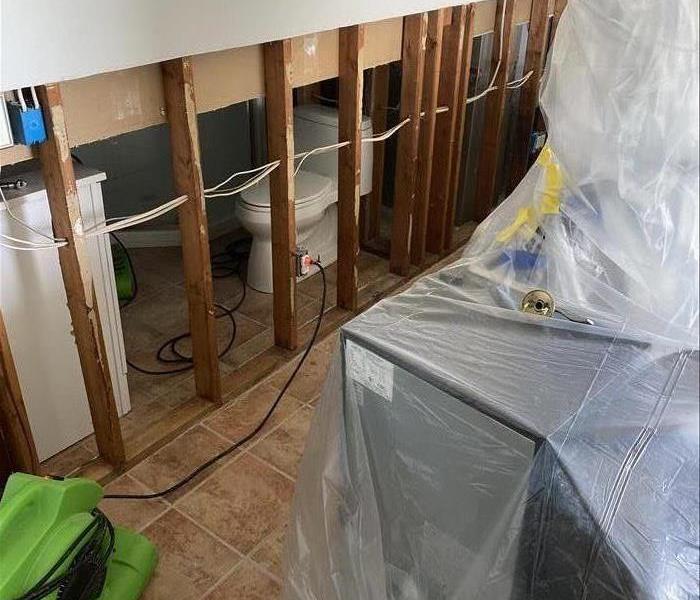 Expensive damage caused by a clogged HVAC system.
Expensive damage caused by a clogged HVAC system.
Commercial properties are often complex with numerous issues that require a knowledgeable and flexible response. Whether we’re dealing with a relatively small water cleanup scenario or a large-scale event, we work quickly to assess each unique situation and isolate the damaged area. In many instances, normal operations can continue in a temporary space while we restore your facility.
Restoring Commercial Properties Presents Unique Challenges
Our professionals are trained to be mindful of legal and environmental concerns and strive to fully restore the damaged area while working within your budgetary constraints. We understand that every hour spent cleaning up is an hour of lost revenue and productivity. So when an emergency situation arises in your business, give us a call and we’ll be there fast with the help you need.
About SERVPRO of Hackensack/Little Ferry
SERVPRO of Hackensack/Little Ferry specializes in the cleanup and restoration of commercial and residential property after a water damage event. Our staff is highly trained in property damage restoration. From initial and ongoing training at SERVPRO’s corporate training facility to regular IICRC-industry certification, rest assured our staff is equipped with the knowledge to restore your property.
Cleaning a Flooded Basement
1/31/2022 (Permalink)
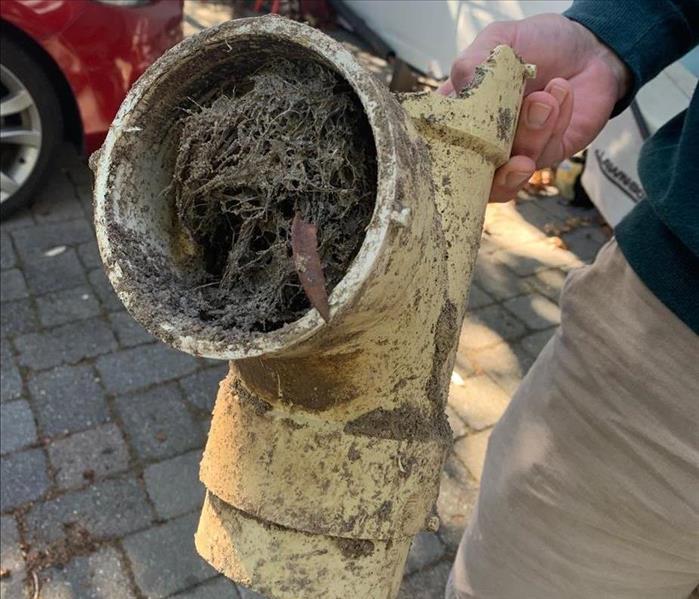 Tree roots penetrated this sewer line causing it to back up into the basement.
Tree roots penetrated this sewer line causing it to back up into the basement.
Groundwater flooding is basically water in your basement caused by seepage or flows through the walls or foundation floor.
According to State Farm Insurance, there are four common sources of water entering basements. Each source has its own specifics and requires its own course of action.
Surface water running down foundation walls.
If this is the first instance of water problems in your basement, the first thing to check for is surface water draining down next to the foundations. Water coming in at one location or only at the exterior foundation wall indicates surface water problems. Here are some things to look for once you get outside.
- Overflowing gutters: leaves
- Overflowing gutters: downspouts
- Downspout distance
- Pavement slope
- Sealant
- Landscape slope
- Irrigation
Groundwater in water-saturated soils is being pushed into the basement by hydrostatic pressure.
If no surface water sources are found, then the source of the water is likely subsurface groundwater under hydrostatic pressure. When the groundwater levels outside the basement rise above the level of the floor, the basement acts like a boat in a pond. If a boat is sitting in water, water will leak in through any open cracks or holes. It works the same way with a basement. Hydrostatic pressure can push water through hairline cracks.
Unfortunately, subsurface groundwater problems are more difficult and more expensive to fix than surface groundwater problems.
Storm sewer water from the municipal storm sewer system backing up into the home's existing perimeter foundation drain and leaking into the basement.
If you have an older house within town and the house has a basement with no sump pump, it is likely the perimeter foundation drain system connects directly into the city storm sewer system. If the level of the basement is below the street level, there is the potential of stormwater backing up in the city storm sewer system and being pushed into the perimeter foundation drain system. This can saturate the soils around the house at the basement level with stormwater under hydrostatic pressure, causing water to leak in.
- Underground springs
- Stormwater backing up
- Sewer water backing up
Sanitary sewer water from a clog in your home's sewer line. If there is a clog in the municipal sewer line, or the combined municipal storm/sanitary sewer system backing up into the home's drain system, it can cause sewer water to come up through sink drains and floor drains on lower levels.
Whatever the cause of water in your basement, remember it is important to have it dried out as soon as possible by a professional. SERVPRO of Eatontown/Long Branch is available 24/7 and will be able to get to your water damage quickly.
Training for Excellence
1/29/2022 (Permalink)
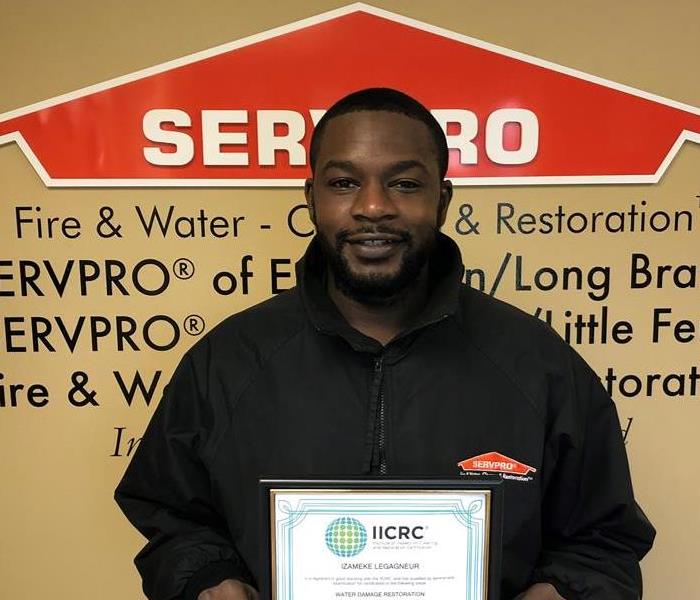 Meek holds his latest certification as a Water Damage Technician.
Meek holds his latest certification as a Water Damage Technician.
Congratulations to our technician, “Meek,” on completing his certification as a Water Damage Technician from the IICRC. At SERVPRO of Hackensack/Little Ferry, we believe in service excellence and that begins with having professionally trained team members. We don’t hire “laborers.” We employ “Technicians” and invest in their training to tackle even the most challenging jobs professionally. This particular certification from the Institute of Inspection Cleaning and Restoration Certification is the gold standard in the restoration industry. Our team members are constantly taking courses to stay current on the latest trends, techniques, and tools of the trade.
Take a look at our reviews and you will consistently see comments about our professionalism in action. We take pride in these skills and our ability to make someone’s mess, “Like it never even happened.”
Both Local and National
12/28/2021 (Permalink)
 Our van helped in Texas during a major disaster this past year.
Our van helped in Texas during a major disaster this past year.
What will you do when, not if, an emergency strikes?. It doesn’t matter how the disaster occurred, all that matters is can you find a local reputable restoration company that can restore your property to pre-disaster condition.
When that time comes, you’re going to be in a situation where you have to make a decision quickly to protect your property, and you will need to decide what company is going to get your business quickly and professionally handle your restoration.
Keep these points in mind when evaluating a partnership with a restoration company:
Are They Legitimate?
Keep in mind that not everyone who shows up after a disaster has the best of intentions. Unfortunately, major storms and disaster situations bring scammers to the area who may try to take advantage when you’re most at risk, deliver nothing, and then disappear.
SERVPRO has been in business for over 50 years. You don’t get that kind of longevity without satisfied customers. These include many of the largest companies in the country.
Can They Act Fast?
When disaster strikes, there’s no time to waste. You have got to reach someone right away so resources can be mobilized and your restoration can begin. Even a small delay can lead to more damage and costs.
That’s why we’re on call 24 hours a day to respond to your emergency situation.
Do They Have Access to National Resources?
SERVPRO of Hackensack/Little Ferry is locally owned and operated, which means there’s always a team right here in Bergen County ready to act. But if major storms come and bring a surge of activity, our local franchise is supported by a full, coast-to-coast network of SERVPRO franchises.
This means when trouble hits, we’ll be coordinating with other crews and powerful tools to make sure every local homeowner in need gets the service and attention they deserve.
When you call SERVPRO, you can rest easy knowing you’ve got the trusted leader in the restoration industry on the other end of the line. When disaster hits home, contact us to get our local experts and nationwide network on your side.
What makes a great team?
12/28/2021 (Permalink)
 Best Dressed contestants from the combined SERVPRO of Eatontown/Long Branch and SERVPRO of Hackensack/Little Ferry teams.
Best Dressed contestants from the combined SERVPRO of Eatontown/Long Branch and SERVPRO of Hackensack/Little Ferry teams.
What makes a great team? Many factors, of course, but having a passion for what you do, a belief that you are a part of something larger than yourself, and the comfort that you are valued and supported by those around you is critical. This week teams from SERVPRO of Hackensack/Little Ferry and SERVPRO of Eatontown/Long Branch got together for our annual holiday party hosted by owner, John Majeski. This year, technicians competed in the Best Dressed competition and had a blast cheering each other on. Having this comradery reminds me of the book FISH which talks about building morale even in the toughest of work environments and the technician’s role can be a very dirty and difficult job! Having this environment allows our teams to perform challenging work with pride and passion. Congratulations to Justice for winning this year’s contest!
Preventing Leaks in Commercial Buildings
12/28/2021 (Permalink)
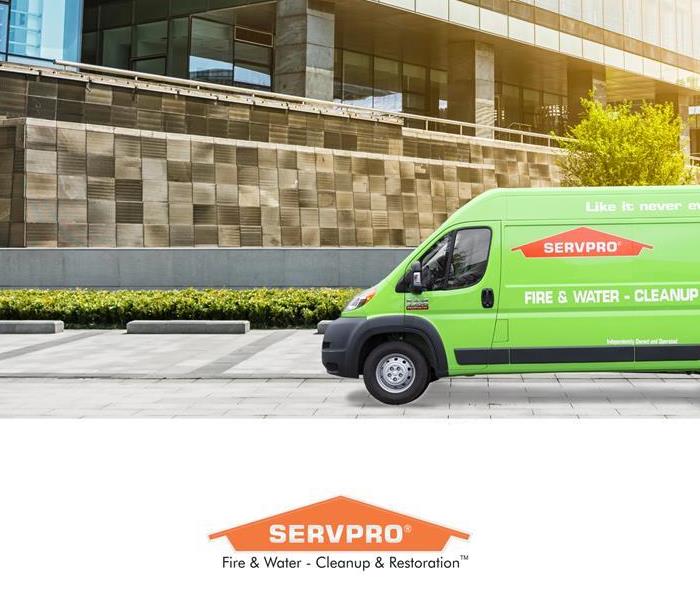 SERVPRO van at an office building.
SERVPRO van at an office building.
Most people pay attention to warning signs around their home in order to prevent damage but many do not take the same notice at their place of employment. Here are some things you can do as a commercial property owner/manager/employee that may save your business significant hardship.
Understanding your facility's water system can go a long way to preventing water damage. Practice preventive maintenance with an emphasis on the most common sources for water damage:
Toilet leaks: Whether it’s a broken wax seal or a clogged toilet, these have to be repaired quickly before more damage results. The tank has many moving parts, and these can wear out over time. Proper fixture maintenance in the bathroom can save you time and aggravation in the future. Periodically check around the toilet for signs of water. Feel the water supply line to make sure no slow leaks exist.
Ice maker supply line: Ice maker supply lines are common sources of water leaks. If the line is damaged, replace it. If it’s loose, secure it. Pests like mice love to chew on these hoses so do ignore signs of droppings, get an exterminator.
Foundation cracks: Foundation cracks are serious and should be repaired by a professional. They can allow water to seep into the basement which will lead to mold and significant property damage.
Poor ventilation: Proper attic/storage ventilation is important because it removes moisture from the attic that could condensate, drip, and cause mold growth.
Roots in drain lines: Older facilities have more problems with roots in the drain lines due to the types of materials that were used in construction. Septic systems utilize field lines, and they tend to attract tree roots due to the moisture in the ground.
Common drain issues: Facilities face many issues with drain systems, including slow drains, recurring clogs, a foul odor, or flooding from a backup. What is being washed down your drains, food, waste products, tampons? Slowing drains may be a sign of impending trouble.
Staying current on your facility maintenance is the best way to avoid a potential catastrophe!
If a water leak turns into a big problem in your business, you’ve got the best team in the industry on your side. Contact SERVPRO of Hackensack/Little Ferry today so we can get started.
Emergency Kits
12/28/2021 (Permalink)
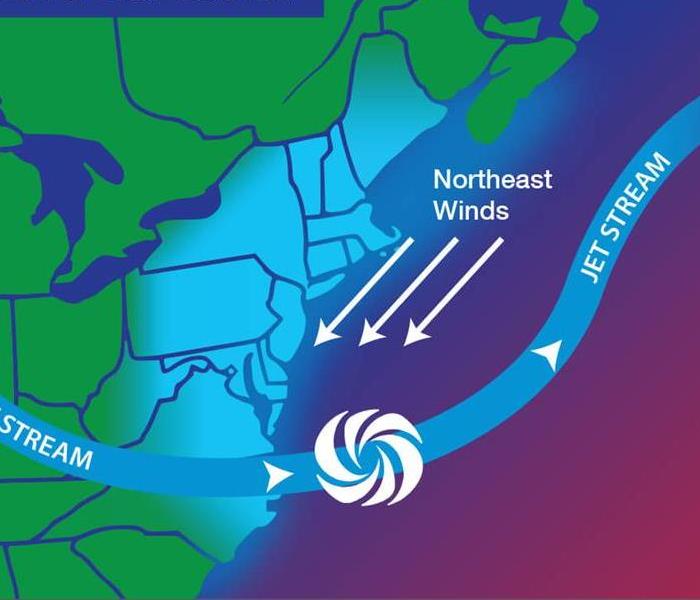 The typical path of a Nor'Easter storm.
The typical path of a Nor'Easter storm.
Cold weather, snow, ice, and storms can cause severe damage to your home or business. When these types of disasters strike, immediate action is necessary to prevent additional damage to your property. SERVPRO is always here to help and we want to give you tips to set up a basic emergency kit in case the unpredictable happens.
In a year filled with the unexpected, one thing that 2021 has shown us is, as the Boy Scout motto says, “Be Prepared.” Here are some basic items you should have in your Emergency Storm Kit:
- Water (one gallon per person per day for at least three days, for drinking and sanitation)
- Food (at least a three-day supply of non-perishable food)
- Battery-powered or hand-crank radio and an NOAA Weather Radio with tone alert
- Flashlight
- First aid kit
- Extra batteries
- Whistle (to signal for help)
- Dust mask (to help filter contaminated air)
- Plastic sheeting and duct tape (to shelter in place)
- Moist diaper wipes, garbage bags, and plastic ties (for personal sanitation)
- Pliers (to turn off utilities)
- Manual can opener (for food)
- Local maps
- Cell phone with chargers and a backup battery
Also, look at www.ready.gov for more information on emergency kits!
Certified: SERVPRO Cleaned
12/28/2021 (Permalink)
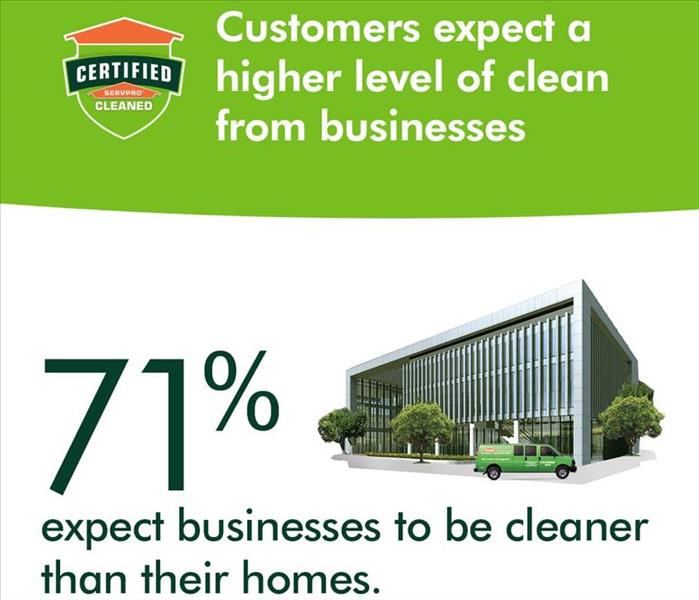 Infographic of SERVPRO Covid Research Findings
Infographic of SERVPRO Covid Research Findings
Government mandates or not, the expectations of visitors, customers, and employees who come into our establishments have evolved, and staying safe is a top concern. The global COVID-19 pandemic has changed what it means to be clean, and we’ve developed a program to help your business meet the new higher standard of clean that is now expected.
Certified: SERVPRO Cleaned is a defensive cleaning program we’re offering to businesses, schools, and commercial locations to address the current COVID-19 pandemic. This proactive viral pathogen cleaning program goes well beyond janitorial or carpet cleaning. By choosing Certified: SERVPRO Cleaned, you, your employees, your customers, and your community can rest assured that you’ve selected a higher cleaning standard – you are Certified: SERVPRO Cleaned.
Extensive training and specialized products
We stand on more than 50 years of experience and expertise to help your business become Certified: SERVPRO Cleaned. Beyond fire & water, SERVPRO professionals are trained and experienced in biohazard decontamination and chemical spills – always adhering to the cleaning and decontamination standards set by the Centers for Disease Control and Prevention and local authorities.
From formulating and creating our proprietary cleaning products, like SERVPROXIDE, at our headquarters in Gallatin, TN, to taking the utmost care while disinfecting, we will ensure you and your business are set up to inspire consumer confidence as the pandemic continues.
3 C’s – Consult, Clean, and Certify
When the stakes are this high, you want a partner who has developed an industry-leading, proprietary training program, cleaning solutions, and remediation processes over decades. We’ve cleaned up some of the most challenging biohazards imaginable. Certified: SERVPRO Cleaned reflects our unique experiences and capabilities. The program is grounded with our unique 3 C’s: Consult, Clean, and Certify.
Consult – Every business is different, which is why you’ll be assigned a Cleaning Protocol Consultant who understands your business and will create a cleaning program to meet your specific needs. This program will be developed based on your business type, size of space, amount of high-frequency touchpoints, foot traffic, and congestion points.
Clean – Based on your specific business needs, your location will undergo a thorough, deep clean, using an exclusive cleaning product, according to protocols set forth by the CDC. Our employees have years of experience, and we will go beyond the scope of work that regular janitorial staff performs. Cleanup procedures generally include cleaning of porous and non-porous surfaces, disinfecting of non-porous surfaces, cleaning and disinfecting of equipment, tools, and/or supplies used for the cleanup process, and disposal of hazardous materials. In the event of a suspected or confirmed COVID-19 event, we will be there cleaning within 24 hours to ensure you get back to business as quickly as possible.
Certify - Once your business location has been Certified: SERVPRO Cleaned, you will gain access to proprietary signage, digital emblems, and other collateral that communicates that you’ve selected a higher standard of clean available to help protect your employees and customers. And because we add the day, month, and year to that proprietary stamp of clean, your guests will know that not only did you choose Certified: SERVPRO Cleaned, but that your location is being cleaned regularly at this standard.
Call today for a Certified: SERVPRO Cleaned consultation
We’re ready to help – 24/7– until life is back to normal in the communities we all call home.
Fast response to a fire
10/29/2021 (Permalink)
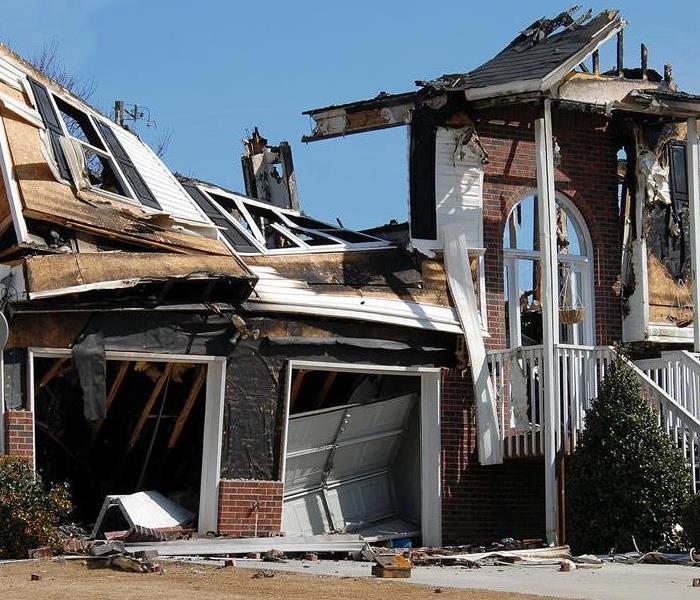 A home severely damaged by a fire.
A home severely damaged by a fire.
When a fire happens you expect a quick response from the fire department. But what happens once the fire is extinguished? The fire department does what they can to minimize damage to "exposure areas" but their responsibility ends once the fire is extinguished.
You will need a restoration company to intervene quickly to minimize damage. To that end, we respond as quickly as possible to be able to assist the owner in navigating the process. This sometimes leads to an awkward situation where owners are confused about why we are there and what they should do. I've personally had people react negatively as they perceive our quick response as a way to make a buck. While I understand this perception, and we are a business, it is our intention to assist the owner through every step of the process in order to minimize damage, provide assurances that things will be returned to normal, and ensure that important first steps are done correctly.
If you see us at a fire scene, please understand that our mission is to assist those affected in a variety of ways and without delay. Please help us to engage with the owner and allow us to use our expertise to be a resource to them. Thank you!
Key First Steps in Fire Damage Remediation
10/29/2021 (Permalink)
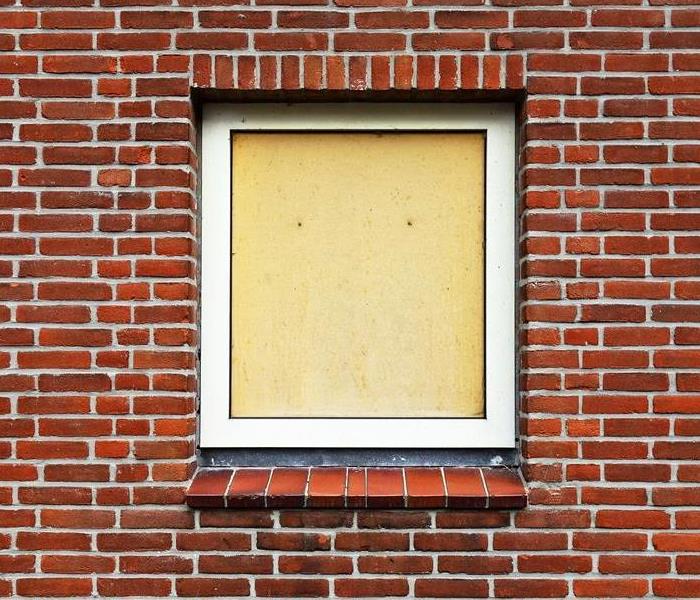 A boarded-up window.
A boarded-up window.
In a prior post, I spoke about our rapid response to a fire scene and our purpose for being there, often before the fire department leaves. Below I will touch upon some of the critical actions we take when we connect with the owner.
First, we provide assurance that we will be with them throughout the process. This includes facilitating communication between the owner and the insurance company as well as third-party adjusters. We use the same estimating software that is used by insurers to accurately document and detail what services are needed to reduce the possibility that claims will be questioned down the road.
Second, we look to secure the scene. Firefighters may have removed doors and are trained to "turn windows into doorways" as a way to provide both evacuation routes and ventilate the structure. quick board-up is needed to prevent additional damage and prevent unauthorized entry.
Third, we look to identify and remove belongings that need special attention and storage at our offsite facilities. This may include precious items, family heirlooms, and keepsakes.
Forth, we look to immediately begin extracting water to prevent further saturation and limit mold growth.
From here a detailed remediation plan is developed with consideration for the eventual reconstruction phase of the project. While we work with clients throughout the process, our early interventions are essential in limiting the overall cost and scope of the project.
SERVPRO Handles Commercial Jobs
10/29/2021 (Permalink)
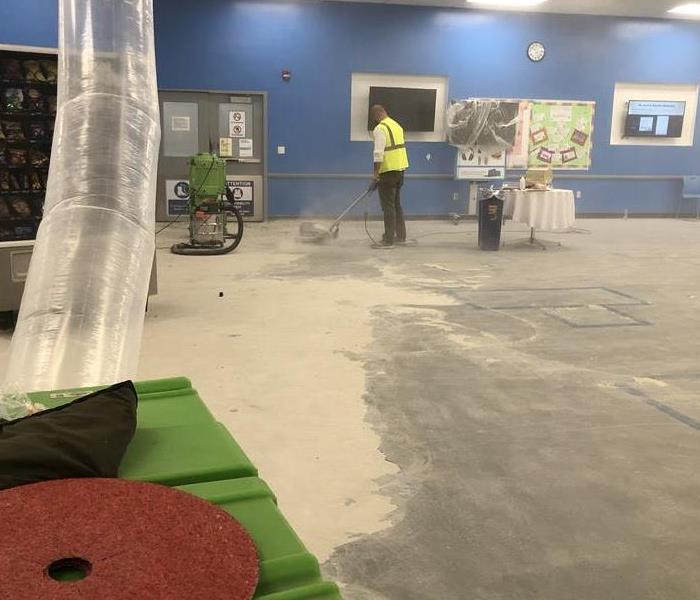 A special containment area for commercial demolition within an operating warehouse facility.
A special containment area for commercial demolition within an operating warehouse facility.
This picture was taken at a large distribution center for a well-known company. They could not afford to close the facility but needed to complete a messy demolition while protecting the unaffected areas. The existing floors needed to be scraped and the concrete sanded so a new floor could be installed. This is a very messy and dusty process that was beyond the scope of their flooring contractor.
SERVPRO of Hackensack/Little Ferry created a special containment zone with positive pressure ventilation to prevent the dust from entering the HVAC system and being spread throughout the rest of the building. Air filtration systems were used during the demolition to clean the air within the work zone. Once demolition was complete, the SERVPRO team cleaned all of the equipment and surfaces so that reconstruction and installation of the new floor could be completed.
Having the expertise, the right equipment, and the resources to handle a large commercial job is what makes SERVPRO of Hackensack/Little Ferry the ideal contractor for large commercial jobs.
Proper Water Remediation
10/29/2021 (Permalink)
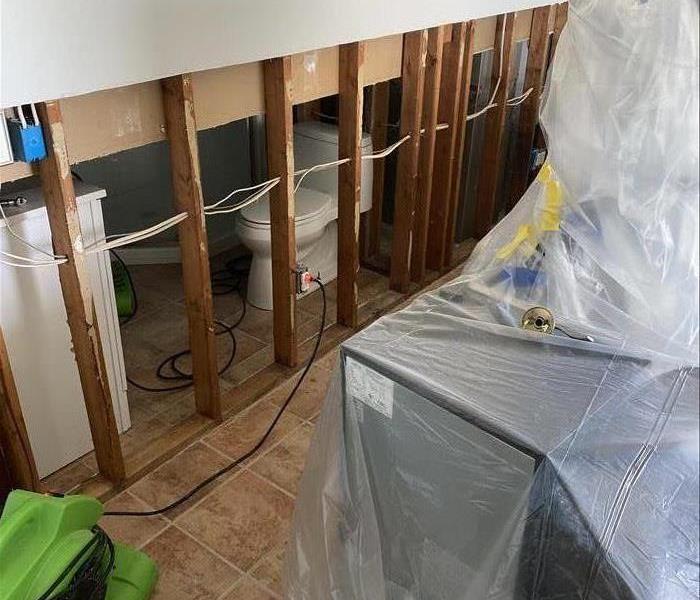 Significant damage caused by a backed-up HVAC system.
Significant damage caused by a backed-up HVAC system.
At SERVPRO of Hackensack/Little Ferry, our expert technician’s first job is to educate.
When a burst pipe or leaky roof damages your property, It is time to call SERVPRO. Our technicians take the time to explain in detail all aspects of the job prior to commencing services so you understand the issues that need to be addressed and the process/methods we will use to address the damage.
- The consequences of delaying or failing to “mitigate” the damage
- The steps we expect to complete while limiting the harm and moving towards SERVPRO’s ultimate goal of making it “Like it never even happened.”
What Is Water Mitigation and Why Does SERVPRO Address It Before Other Tasks?
Water mitigation is one or more strategies to halt ongoing water damage. Because water is incredibly corrosive, prompt mitigation is essential a wide range of water cleanup issues caused by damage like basement flooding or leaking roofs from storms. Mitigation in a water-damaged home can include:
- Shutting off water supply lines
- Pack-up and removal of soaked home contents
- Use of professional-grade wet vacuums to create a dry zone around the perimeter of water in carpeting
- Water removal services using pumps and or portable extractors
- The use of controlled demolition to release trapped water
What comes after Mitigation?
Water mitigation moves on to remediation and water damage repairs as the moisture diminishes. The goal of “restoration” is why SERVPRO’s customers reach out initially, but grasping that mitigation is part of a more extensive process helps residents allow the phases to follow in a logical and research-based progression.
Training, honesty, and integrity, plus top-of-the-line equipment are SERVPRO of Hackensack/Little Ferry fulfills our promise to return a water-damaged home to safe and sanitary conditions.
Managing an overflowing toilet
10/29/2021 (Permalink)
 Toilet paper roll animation
Toilet paper roll animation
We’ve all been there! Clogged pipes, leaky faucets, and overflowing toilets are all common enough problems that you shouldn't be too surprised when happening to you. The toilet overflow presents a messy challenge for homeowners because it introduces the possibility of sewer damage. If your toilet starts running over, consider following these basic steps.
- Stop the water. Your first priority should be to stop the water. Most toilets have a shut-off valve at the base. Check to see if your fixture has one. If not, you can stop the water by manually manipulating the float valve in the tank. If all else fails, you can turn off your home's water and turn on the faucet at the lowest point in your home until the water stops.
- Get some help. Once the initial onslaught of water has been stopped, you need to call in a water restoration expert to help you assess the damage. This professional can help you figure out why the toilet started to overflow. The team will also create a sewer damage cleanup plan to help you get your bathroom back to normal.
- Remove the water. Leaving standing water in any part of your home is unwise. The water damage team will likely remove the water as soon as they can. This helps reduce the secondary damage, such as mold growth and material contamination, that can happen as a result of a flooded toilet.
- Fix the toilet. Chances are your toilet overflowed for a reason. The most common reason is a clog. Work closely with a plumber to remove the blockage from the pipes.
Hazards of Storm Water Flooding
9/30/2021 (Permalink)
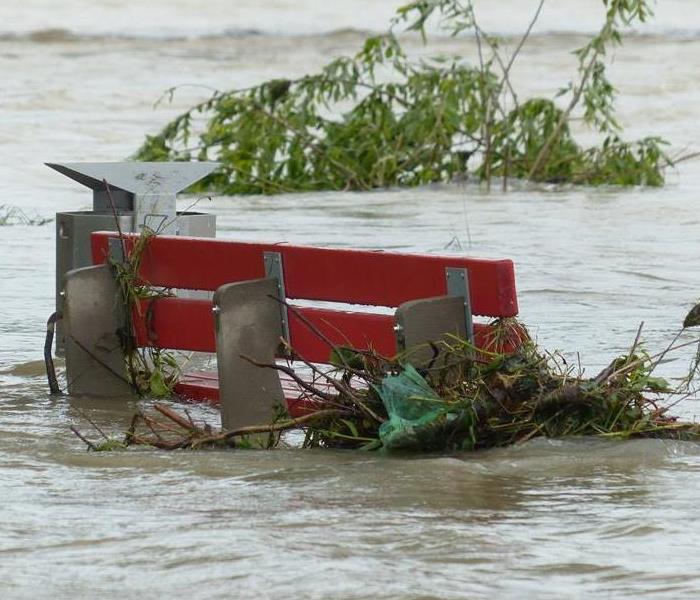 Park bench in flood water with debris pinned against it.
Park bench in flood water with debris pinned against it.
Almost a month after the remnants of Hurricane Ida hit NJ, many property owners are still dealing with the mess. We have been working 7 days a week to help as many people as possible. Our teams are bolstered by the support of multiple SERVPRO teams from out of state, and it is still not enough. Many homeowners have been tempted to handle the cleanup themselves but there are some serious considerations if you are going to do so.
First, make sure the area is safe. Downed wires and electrocution hazards need to be addressed before any work is done. If significant flooding has occurred, both the electrical service and gas should be shut off to prevent an explosion or electrocution. Sharp items such as broken glass must be removed to prevent puncture wounds and cuts which are highly prone to infection. Be aware of any displaced animals such as snakes. Always wear PPE such as rubber boots, gloves, and goggles.
Second, floodwater is contaminated. A river that has overflowed is carrying more than just the usual stream water. Flooding has washed contaminants downstream which may include:
- Human and livestock waste
- Household, medical, and industrial hazardous waste (chemical, biological, and radiological)
- Coal ash waste that can contain carcinogenic compounds such as arsenic, chromium, and mercury
- Other contaminants that can lead to illness
- Physical objects such as lumber, vehicles, and debris, or needles
- Wild or stray animals such as rodents and snakes
Third, exposure to contaminated floodwater can cause:
- Wound infections
- Skin rash
- Gastrointestinal illness
- Tetanus
If you experience any of these symptoms seek immediate medical attention.
For more information on the health concerns after a flood visit the CDC website at Floodwater After a Disaster or Emergency | CDC
SERVPRO Reconstruction Services
9/30/2021 (Permalink)
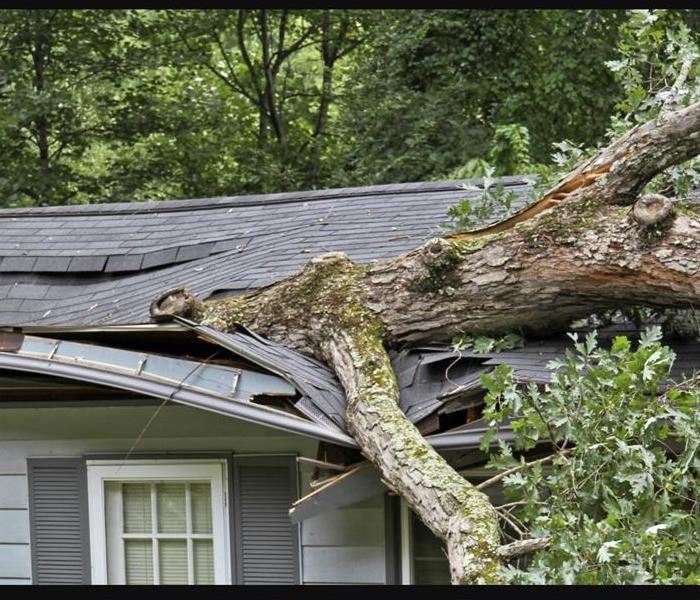 A large tree rests on a home
A large tree rests on a home
When major storms hit we are often called when trees have fallen on houses. This can be one of the scariest events customers face. In fact, my brother had a very large tree come through his bedroom ceiling and was almost struck by a large branch while sleeping. The damage caused usually involves both physical damage and significant water damage.
At SERVPRO of Hackensack/Little Ferry, we work 24-7 to provide an immediate response. The initial response often includes “board up” services to prevent further damage. This is typical with most jobs. The next step is removing the water to prevent mold via a number of extracting and drying technologies but we don’t stop there.
SERVPRO also offers reconstruction services. Under the supervision of our licensed general contractor, our teams remove the damaged material and reconstruct the area to restore the area to its original condition. This ability makes us a 1-stop shop and ensures a quicker process and streamlined coordination with your homeowner’s insurance.
Proper Water Remediation
9/30/2021 (Permalink)
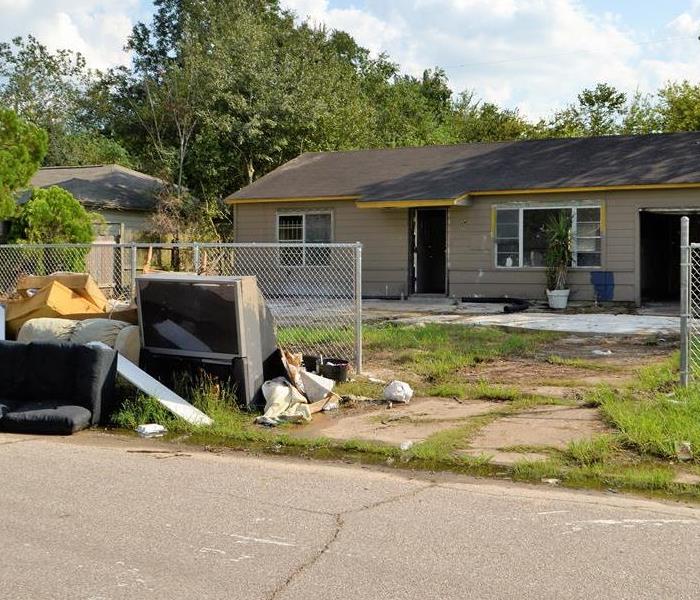 A home damaged by water in a storm
A home damaged by water in a storm
Even small water damages have the potential to cause serious structural and indoor air quality issues over time.
The key to avoiding costly future restoration is to handle every water problem as a real threat to your property. The proper equipment makes a huge difference in reducing the damage expense during a water loss. When time matters most, technology and equipment can be counted on.
Here are a few tools used by SERVPRO of Hackensack/Little Ferry to properly mitigate a loss;
Moisture Sensors- used to detect moisture in carpets, baseboards, and walls.
Moisture Meters- used to determine the actual moisture content of various materials. The meter provides accurate readings to monitor the drying process.
Thermo Hygrometers- measures temperature and relative humidity to calculate and create an environment most conducive to drying. When handling a contaminated loss (CAT 2 or 3), it is not only important to dry the structure, but disinfect and deodorize.
Ultra Low-Volume (ULV) Foggers- used to atomize liquid deodorizing agents, producing a fine mist that can easily penetrate the site where odor-causing residues may accumulate. It can also be used to inject fungicides and disinfectants into wall cavities and other hard-to-reach areas.
Thermal Foggers- dispenses solvent-based products by creating a dense fog that consists of tiny particles of deodorant solution that attach to and neutralize odor-causing particles.
The bottom line... ALWAYS treat water damage seriously. Call in a professional team like SERVPRO of Hackensack/Little Ferry. We will work for you to restore your property and your life to make it "Like it never even happened."
Faster To Any Size Disaster
7/27/2021 (Permalink)
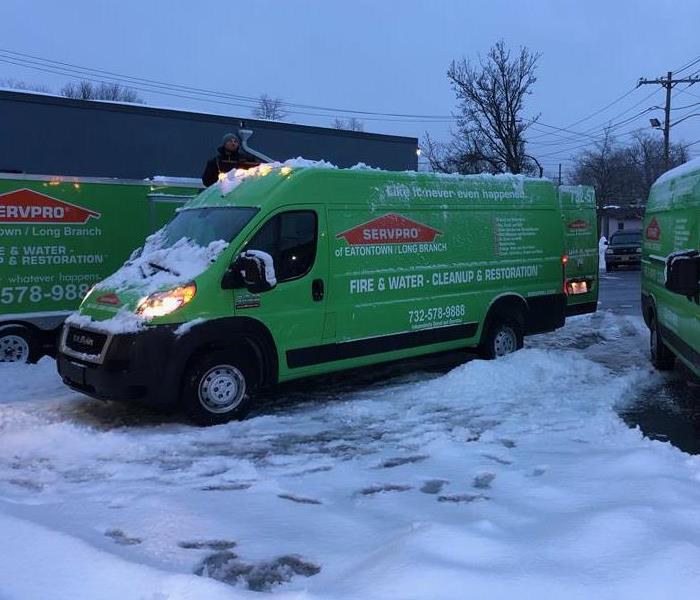 The SERVPRO team departing for a job on a cold winter morning.
The SERVPRO team departing for a job on a cold winter morning.
When disaster strikes, timing is critical. A quick response limits damage and saves money. In many cleaning and restoration situations, immediate action is needed. Owner John Majeski and his team of highly trained technicians are available in your immediate area 24/7, meaning an immediate response day or night that will help to minimize your damage, cleaning, and restoration costs. Water is particularly invasive, quickly spreading throughout your property and being absorbed into floors, walls, furniture, etc. SERVPRO of Hackensack/Little Ferry can arrive quickly and start the restoration almost immediately, whether it be water, fire, or mold.
Water Damage Timeline:
Within Minutes
- Water quickly spreads throughout your property, saturating everything in its path.
- Water is absorbed into walls, floors, upholstery, and belongings.
- Furniture finishes may bleed, causing permanent staining on carpets.
- Photographs, books, and other paper goods start to swell and warp.
Hours 1 - 24:
- Drywall begins to swell and break down.
- Metal surfaces begin to tarnish.
- Furniture begins to swell and crack.
- Dyes and inks from cloth and paper goods spread and stain.
- A musty odor appears.
48 Hours to 1 Week:
- Mold and mildew may grow and spread.
- Doors, windows, and studs swell and warp.
- Metal begins to rust and corrode.
- Furniture warps and shows signs of mold.
- Paint begins to blister.
- Wood flooring swells and warps.
- Serious biohazard contamination is possible.
More Than 1 Week:
- Restoration time and cost increase dramatically; replacing contaminated materials and structural rebuilding may be extensive.
- Structural safety, mold growth, and biohazard contaminants pose serious risks to occupants.
Here come the Hurricanes
7/7/2021 (Permalink)
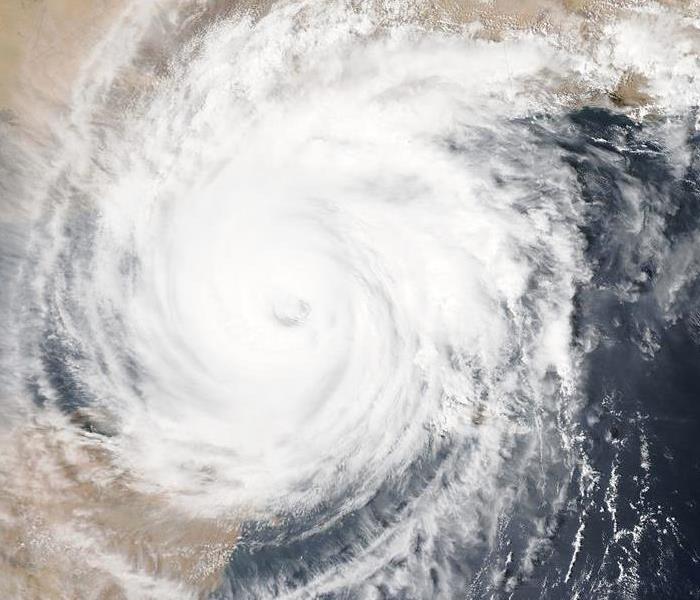 A satellite photo of a hurricane from space.
A satellite photo of a hurricane from space.
The east coast hurricane season has officially started and runs from June 1 to November 30th. So far there have already been 5 named hurricanes in the Atlantic this season.
Here is a brief list of things you should be considering NOW in order to be prepared.
- Make sure your flood insurance is active. Many people let these policies lapse to save money or as an oversight.
- Make sure both your home and business are secured as much as possible. This may include storm shutters, clearing gutters/downspouts to direct water away from the structure, and checking the roof for damage.
- If you have a generator make sure it is operable. If it hasn’t been serviced recently you should check the oil, make sure you have adequate fresh fuel, and run the generator periodically.
- Develop a business continuity plan. This should include emergency communication plans for employees and customers, facility remediation contacts, and contingency work plans.
- If you are in an evacuation zone determine where you will go should the need arise.
- Download the SERVPRO Emergency Ready Plan app which allows you to store and share emergency contacts, critical facility information, and document current conditions. For more information and to access the app click HERE.
Finally, you can register with SERVPRO to be added to our list of contacts so we have your basic information on file in the event you suffer a loss. If you would like assistance in preparing your readiness plan please contact us for a free consultation and have a great summer!
Professionally Remediating Sewer Leaks is Routine at SERVPRO
6/21/2021 (Permalink)
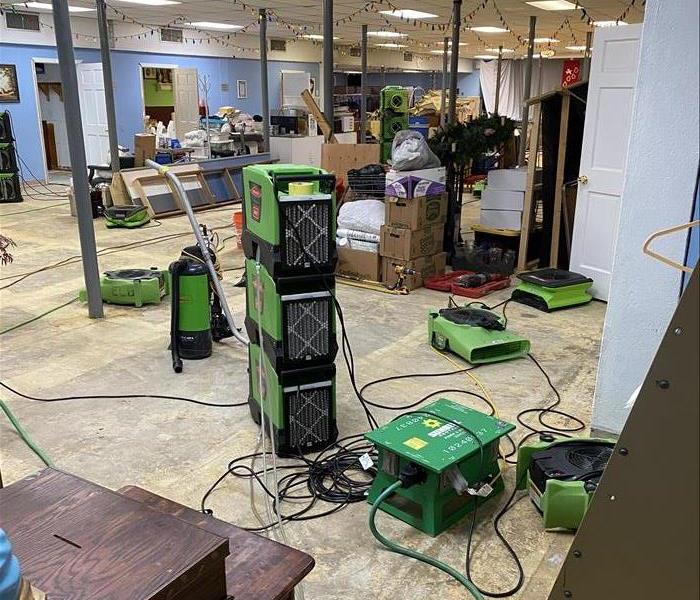 A recent sewage clean-up job by SERVPRO of Hackensack/Little Ferry in Hackensack, NJ.
A recent sewage clean-up job by SERVPRO of Hackensack/Little Ferry in Hackensack, NJ.
Water from sewer system backups should be considered very dangerous. The water is grossly unsanitary and may contain bacteria and viruses that could cause serious illness. Special training and equipment is necessary to safely clean this type of contamination.
There are three major types of contaminated water. SERVPRO of Hackensack / Little Ferry will inspect that contaminated water to determine the type of water and then plan the appropriate response to safely restore your home or business.
The three types of contaminated water:
Category 1: "Clean Water"
This is water from a clean source, such as a broken clean water supply line or faucet. If left untreated, category 1 water can quickly degrade into category 2 or 3 water depending upon such factors as time, temperature, and contact with contaminants.
Category 2: "Gray Water"
This water has a significant level of contamination that could cause discomfort or illness if ingested. Sources for category 2 water may include washing machine overflow; toilet overflow with some urine, but no feces; or dishwasher overflow.
Category 3: "Black Water"
This water is grossly unsanitary and could cause severe illness or death if ingested, and any contact should be avoided. Sources for category 3 water could include flooding from rivers or streams, water from beyond the toilet trap, water from the toilet bowl with feces, or standing water that has begun to support microbial growth.
Sewage Backup or Toilet Overflow? Call Us Today – (201) 330-4193
We've Performed at MSG!
6/1/2021 (Permalink)
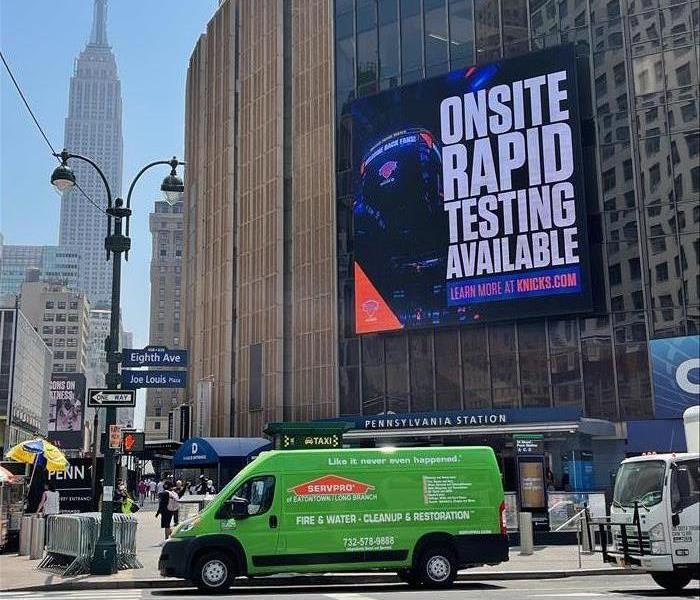 SERVPRO Van Parked Outside MSG
SERVPRO Van Parked Outside MSG
At SERVPRO we have the pleasure of serving businesses both large and small. Disasters come in all shapes and sizes including leaks, fires, floods, commercial cleaning, and COVID-19 cleanings. We've been honored to help local food pantries, high-end restaurants, and everything in between.
We take great pride in performing our commercial services with the utmost speed and attention to detail. Our focus is to be as inconspicuous and limit business interruptions for our customers. This may include services on an emergency basis or scheduled work after hours. Our initial consultation with the business owner/manager is always focused on limiting our impact on the business.
Some of our prior clients include the following categories:
- Small Office Buildings
- Large Office/High-Rise Office Buildings
- Apartment Buildings
- Restaurants
- Hotel/Motels
- Small Retail Stores
- Large Retail/Big-Box Stores
- High-Rise Residential
- Manufacturing & Industrial
- Government/Military
If your business needs commercial cleaning services there is no job too big or too small for the professionals at SERVPRO!
Storm water damage process
6/1/2021 (Permalink)
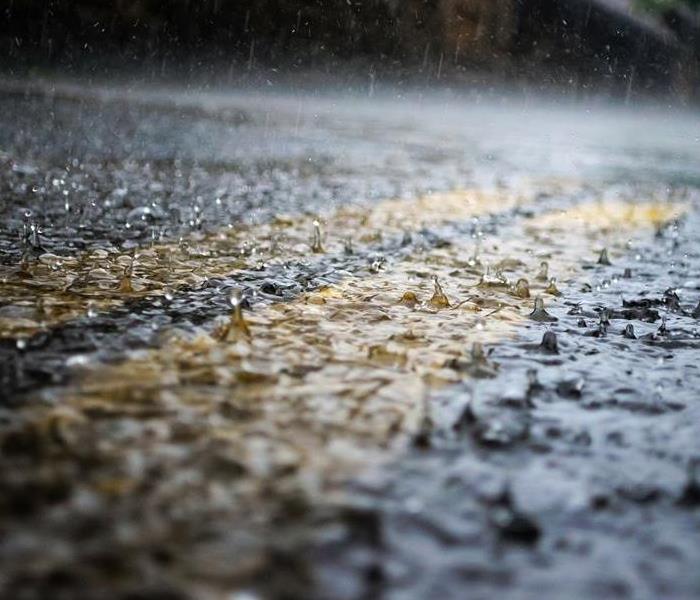 Rain water on a flooded road
Rain water on a flooded road
If your home or commercial property has water damage from storms, SERVPRO of Hackensack/Little Ferry has the expertise, experience, and equipment to properly restore your property. We have the most professional team in North Jersey. At SERVPRO of Hackensack Little Ferry, we have the experience plus the scientific approach to water removal and cleanup to properly dry and restore your property. Every water damage is different and needs to be addressed as such, however, the general process is the same.
Step 1 - Emergency Contact
Step 2 - Inspection and Water Damage Assessment
Step 3 - Water Removal / Water Extraction
Step 4 - Drying and Dehumidification
Step 5 - Cleaning and Sanitizing
Step 6 – Restoration
At SERVPRO Hackensack Little Ferry we take every job very seriously. Restoration is the process of making your home or business back to pre-water condition. We understand that any water loss is stressful. Our technicians will treat you and your family with great care and empathy. We are always here to help, please contact us at 201-330-4193 for any questions or to schedule a free estimate.
Sewage Clean Up Services
5/30/2021 (Permalink)
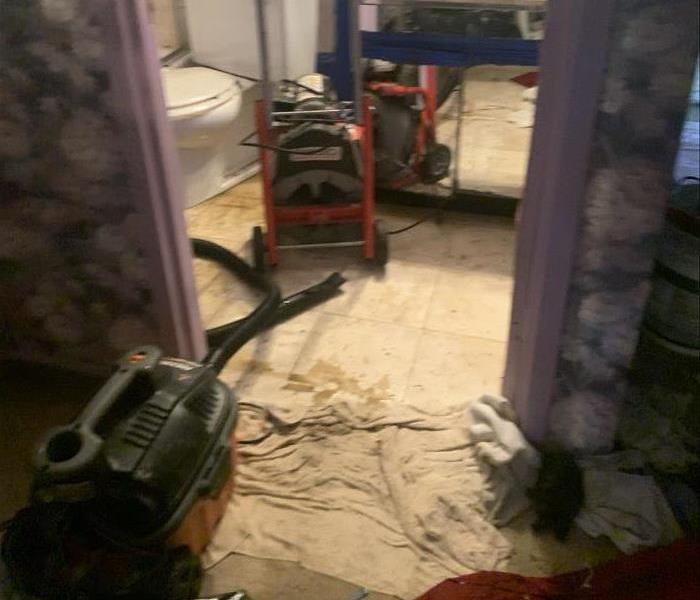 Image of a recent SERVPRO of Hackensack/Little Ferry sewage clean up in Hackensack, NJ.
Image of a recent SERVPRO of Hackensack/Little Ferry sewage clean up in Hackensack, NJ.
Sewage leaks in your home or business can happen for a variety of reasons. I found out the hard way that when a toddler flushes a plastic hammer down the toilet it may get past the toilet itself but can get lodged in the pipe further down the system causing a block. This blockage caused a bathtub full of water to come shooting up through the first-floor toilet (lowest point) when it could not exit my home just as Superstorm Sandy was hitting.
All sewage leaks should be considered extremely hazardous to your health. Besides the obvious foul smell and disgusting nature of the material, sewage can harbor a variety of harmful bacteria that can cause illness for but humans and pets.
At SERVPRO, our technicians are trained to deal with these incidents and have the proper equipment to do it safely. Depending on the type of material that is contaminated a variety of equipment and techniques may be used. For example, soft porous material will need to be extracted to remove the contamination prior to sanitization. This is far more complicated than a tile or linoleum floor.
When (not if) you have a sewage mess, call the experts at SERVPRO!
Wet Memorial Day Weekend
5/28/2021 (Permalink)
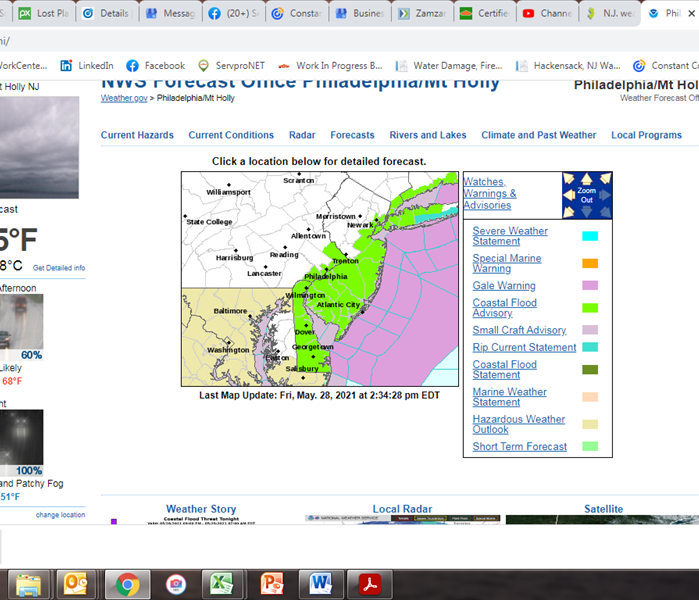 It is going to be a wet Memorial Day weekend!
It is going to be a wet Memorial Day weekend!
It is going to be a very wet Memorial Day Weekend. Hopefully, we will catch a break on Monday and be able to get out to honor our veterans. In the meantime, take a moment to prepare for significant rain and possible flooding. The National Weather Service is forecasting a couple of inches of rain across NJ with the potential for flooding along the coast, rivers, and low-lying areas.
As the first heavy rains of the season approaches, here are some quick tips to check and prevent water damage:
- Check your gutters and downspouts – if you have had any new landscaping or mulch installed check to make sure the water will flow freely away from the structure
- Check your basement sump pump to make sure it is operational
- Make sure items are on shelves or otherwise raised off of basement/ flood prone floors
- Make sure the patio furniture you just put out is secured
- Turn off the gas line to your grill
If you experience any water damage rest assured that SERVPRO will be ready to respond and provide assistance 24/7/365.
Mold is Everywhere
5/27/2021 (Permalink)
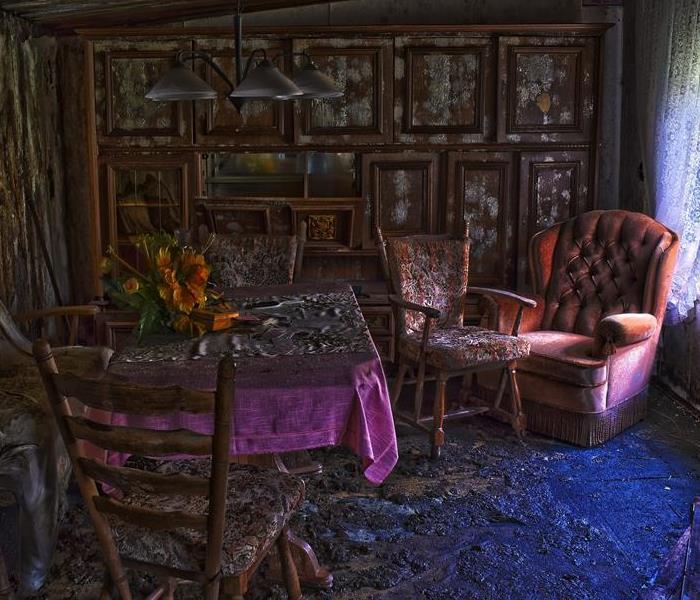 Living room covered in mold.
Living room covered in mold.
Did you know that mold is everywhere, both outside and inside your home? The spores are constantly floating around and cause little adverse issues until they find a nice moist place to grow. This is where small leaks in roofs, pipes, basements, windows, etc. can create a serious problem for both health and property.
Places where mold often appears include:
- areas where leaks occur, especially behind walls and concealed by sheetrock
- where flooding has occurred
- areas that routinely get wet (where is your dog's bowl?)
- windows where condensation builds up
- places where the air does not circulate well
- wet cellulose materials are most supportive of mold growth.
Molds produce spores, which spread by floating in the air. Mold spores are present in all indoor environments. There is no way to prevent spores, and they can persist in conditions where mold itself cannot grow.
Mold spores thrive in environments that are moist and warm, so when they land on a damp spot, they begin to grow.
Molds can grow on a variety of different surfaces, including fabric, paper, wood, glass, and plastic. As they grow, they may digest the material they are growing on.
Molds are classified in three different ways:
Allergenic: Molds that cause and produce health effects.
Pathogenic: Molds that cause health effects in those suffering from an acute illness.
Toxigenic: Molds that produce toxic substances that can lead to health effects. This is sometimes referred to as “toxic mold.”
PROFESSIONAL MOLD REMOVAL
Getting rid of mold is a very complex undertaking. Not only is mold difficult to identify, but it’s also dangerous to be around. SERVPRO uses mold remediation equipment and techniques that protect both you and our team. Our remediation strategy is specifically designed to address the damage that has already occurred and prevent the problem from recurring.
Not sure if there is an issue?:
SERVPRO intentionally does not do mold testing to prevent any potential conflict of interest. Often times the mold is obvious to our technicians. If there is uncertainty, we can recommend a reputable testing company that can help. Based on their findings we will develop a plan to address the remediation.
Call us today for more information.
Prevent a Dryer Fire
4/28/2021 (Permalink)
 Burnt material behind a dryer that fortunately did not create a larger fire.
Burnt material behind a dryer that fortunately did not create a larger fire.
Dryer fires are a serious issue that causes thousands of fires in the US each year. Clogged vents can easily cause the lint buildup to ignite and quickly spread to the surrounding areas. The homeowner in the attached photo was extremely lucky that the buildup behind the dryer ignited but the fire did not spread to the surrounding material causing a structure fire.
Dirty or clogged dryer vents and ductwork reduce your dryer’s performance and efficiency. However, the buildup of heat, dryer lint, and dust can lead to a fire hazard. It is recommended that dryer ducts and vents be cleaned annually to keep your units running efficiently and safely.
If you have not cleaned your ducts/vents recently, and especially if you are experiencing any of the following warning signs, call SERVPRO today.
Warning signs:
- laundry taking longer to dry
- the clothes dryer becoming hotter to the touch
- a burning smell becoming noticeable in the laundry room.
Call SERVPRO today!
Spring Flooding
4/25/2021 (Permalink)
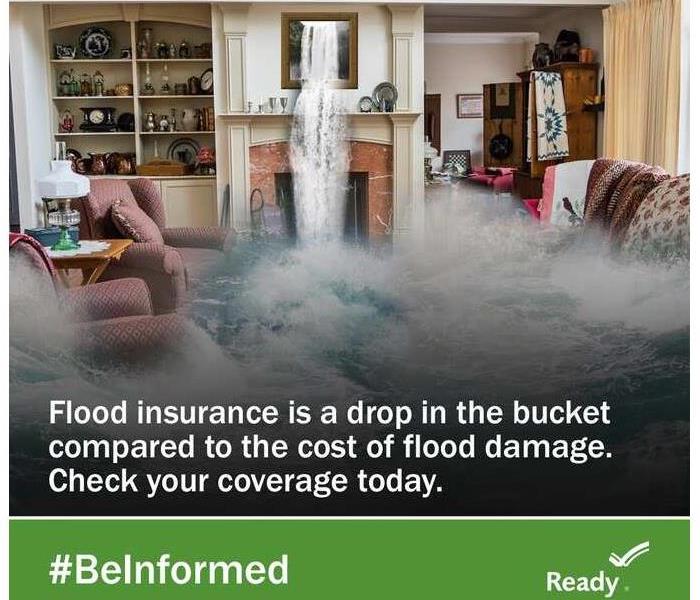 The importance of flood insurance.
The importance of flood insurance.
Although flooding can happen at any time, Spring flooding is common as frequent storms leave the ground soaked and streams are often at their highest levels of the year. Here are some tips for both families and businesses.
First, take advantage of a free App called the SERVPRO Emergency Ready Plan (ERP). To learn more about this app and how it can prepare your business and minimize business interruptions click HERE for a brief video. This app is also extremely useful for homeowners in preparing for a variety of disasters.
- Make a family emergency communication plan and include pets.
- Have emergency supplies in place at home, at work, and in the car.
- Flood insurance takes 30 days to take effect, so purchase now to protect your family!
- Listen to local officials by radio, TV or social media.
- Evacuate when advised by authorities or if you are in a flood or flash flood prone area.
- If you are on high ground above flooded areas, being prepared to stay where you are may be the best protection.
- Don't let your business end up in a dumpster. Make a Flood Safety plan today.
- Charge mobile devices. Locate flashlights & radio. Tell friends/family your location in case of power loss.
- Heavy rain to areas that have been experiencing drought can cause flash flooding.
If you do need to venture out during or immediately after a flood, follow these rules:
- Don’t drive or walk through flood waters
- Water moving at just 5 miles per hour can lift and displace manhole covers leaving unseen dangers
- As little as 12 inches of moving floodwater can be enough to float and carry away a small vehicle.
- 6 inches of moving water can knock an adult off their feet. STAY AWAY from moving water!
- Driving thru 6 inches of standing water can cause vehicles to lose control & stall. Avoid flooded roads.
- Be aware of areas where waters have receded. Roads may have weakened & could collapse under the weight of a vehicle.
Personal Property
- 30: The number of days it takes for flood insurance to begin. Don’t wait until it’s too late!
- Only flood insurance will cover the damage from floods. Speak with your insurance agent to learn more.
- A few inches of water in a 1,000-square foot home could cost more than $10,000 in repairs & replacement of personal possessions
- Prepare for a flood today by reviewing your property & flood insurance policies.
- Snap some pictures of your property & do an inventory. This will be handy if flood waters damage your property. Again, consider using the SERVPRO Ready Plan App.
- Flood waters can damage important papers. Store critical docs in a waterproof container or electronically.
- Before a flood: reduce potential property damage by elevating utilities & installing sewer backflow valves.
- Prepare before a flood by installing a water alarm in your basement.
After a Flood
- Watch your step! Flood waters often hide sharp and dangerous debris like broken glass and metal!
- Wear the appropriate protective clothing and gear like boots, gloves and safety glasses when it comes to moving debris!
- Hands off! Stay away from electrical utility equipment after a storm or if it is wet to prevent being electrocuted!
- Flooded homes are hazards! Get a professional to check for loose wires, mold and hidden damage before re-entering!
- Avoid walking in floodwater. It can be contaminated with oil, gasoline, or sewage.
- Use generators or other gas powered machinery only outdoors and away from windows.
SERVPRO Emergency Response Plan for Business
3/31/2021 (Permalink)
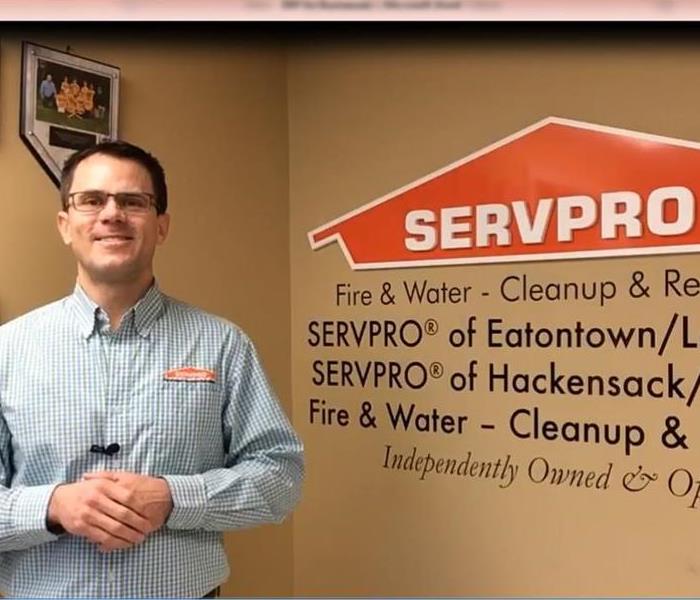 John Majeski explaining the SERVPRO Emergency Response Plan for businesses
John Majeski explaining the SERVPRO Emergency Response Plan for businesses
Are you prepared for a disaster?
As many of 50% of businesses may never recover following a disaster. Of the businesses that survive, the overwhelming majority of them had a preparedness plan in place. By developing a SERVPRO Emergency Ready Profile for your business, you minimize business interruption by having an immediate plan of action. Knowing what to do and what to expect in advance is the key to timely mitigation and can help minimize how water and fire damage can affect your business.
The SERVPRO Emergency Ready Plan is a proactive approach that provides the critical information needed to begin mitigation and recovery services. It is designed to serve as a quick reference of important building and contact information.
The SERVPRO Emergency Ready Profile is:
- No cost assessment of your facility
- An app on your phone that contains critical information needed in the event of an emergency
- A guide to help you get back into your building following a disaster
- Critical facility details such as shut-off valve locations, priority areas and priority contact information
Learn more by watching THIS 1-minute clip by John Majeski, owner of SERVPRO of Eatontown/Long Branch and SERVPRO of Hackensack/Little Ferry.
Contact us today for a free consultation on steps to safeguard your business.
Gas Safety - Part 1
3/31/2021 (Permalink)
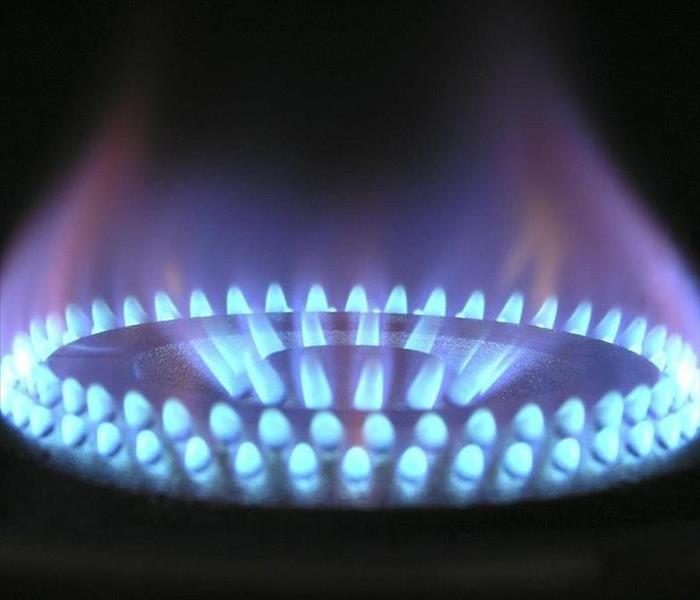 A Gas Burner Burning
A Gas Burner Burning
This month marks the anniversary of the 1994 Durham Woods gas pipeline explosion in Edison, NJ. This sudden explosion of a 36-inch gas pipeline was caused by minor damage from a backhoe years earlier that slowly deteriorated the pipe until it ruptured causing a ball of flame and mushroom cloud so large that one pilot flying into Newark Airport reported it as a nuclear blast.
Fortunately, these incidents are very rare. However, more mundane gas (propane or Natural gas) incidents are very common and are easily managed if you know what to do. First, call 911. This article is not intended to teach you what to do as an alternative to calling for professional assistance. The fire department and gas companies are very willing to come and help. Beyond their level of training, they have specialized tools that you won’t find in your toolbox.
Tips to prevent a gas fire/incident:
- Make sure all appliances that use Gas including furnaces, ovens, dryers, fireplaces, grills, etc. each have shut off valves that are easily accessible and functional.
- Download the SERVPRO Emergency Response Plan App and document the location of valves so you can easily share the info with friends/neighbors/first responders if you are not home.
- Have gas appliances serviced annually. Consider a service plan from PSE&G or NJNG which are a great value.
Gas Safety - Part 2
3/31/2021 (Permalink)
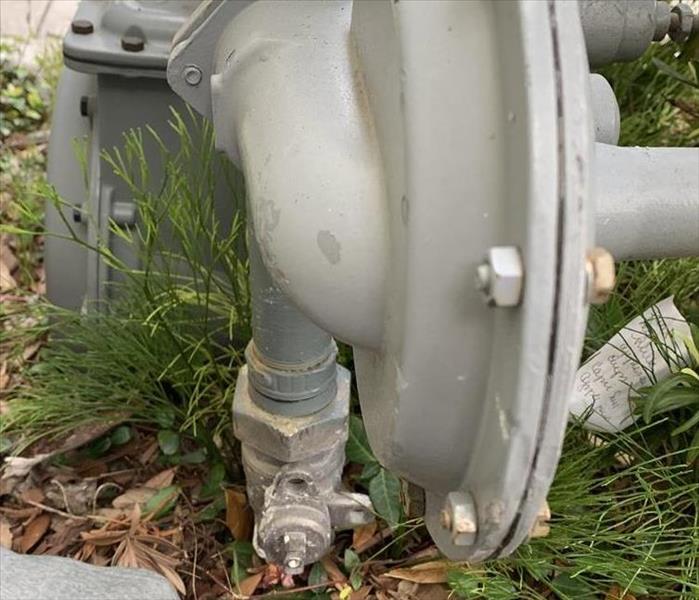 This shut off valve is located just before the regulator (the saucer-like disk).
This shut off valve is located just before the regulator (the saucer-like disk).
Natural Gas is non-toxic. It is also naturally odorless but a chemical called mercaptan is added to give it the distinct rotten eggs smell. If you smell gas in your home, call 911. You should leave the house and wait for first responders at this point. But, if you are like me and feel the leak is minor and want to address it here are some tips.
- Don’t turn on any lights or create any ignition sources.
- If the leak is coming from an appliance such as a stove or clothes dryer, see if there is a shut off valve to the unit and turn the valve handle so it is perpendicular to the pipe.
- If the leak is stopped and you want to ventilate the structure remember that natural gas is lighter than air and will float to upper floors while propane is heavier than air and will flow downstairs.
- If the leak is significant and not able to be stopped at a remote valve, the main gas line can be turned off where it enters the house. Typically a pipe comes out of the ground and runs through a regulator and meter before entering the house. There is usually a valve on the pipe before it reaches the regulator (the disk-like piece). This will turn off all of the gas to your home but will require a plumber to resume service.
- Use caution when digging. You can call 811 and have the utility companies mark their connections for free. Gas lines are plastic and can be punctured with a good shot from a spade shovel. These lines are only required to be a foot below ground and usually go straight from the gas connection to the street.
If the possible source is not obvious wait for the first responders. They have meters to test the overall gas levels in the building as well as “sniffers” that can pinpoint the exact location of the leak. They will attempt to isolate the leak and minimize the impact on your home/business until your plumber can make the repair.
High Tech Documentation of Commercial Losses
2/26/2021 (Permalink)
 Sample Matterport Image
Sample Matterport Image
Documenting a loss is critical in order to facilitate quick remediation, assure a smooth claims process with the insurance provider, and create a comprehensive plan. One of the ways SERVPRO provides superior service is through the use of a specialized 3D mapping system called Matterport. Think of it as a 3D home tour on steroids.
With this system there is no need for hundreds of photos, written statements, measurements, and repeat visits. This system also assists insurance adjusters who want to limit field time due to COVID-19 exposure. In fact, the system provides the ability to do a virtual walk-through which includes the ability to measure and tag areas of interest. This drastically improves the assessment time and the claim processing time.
However, the best way to prepare for a loss is with accurate documentation of the property’s current contents and condition. SERVPRO can complete a scan of your property to document your assets which will reduce potential discrepancies and disputes with insurance carriers.
To learn more and get a free estimate, call us today!
SERVPRO Storm Teams
2/26/2021 (Permalink)
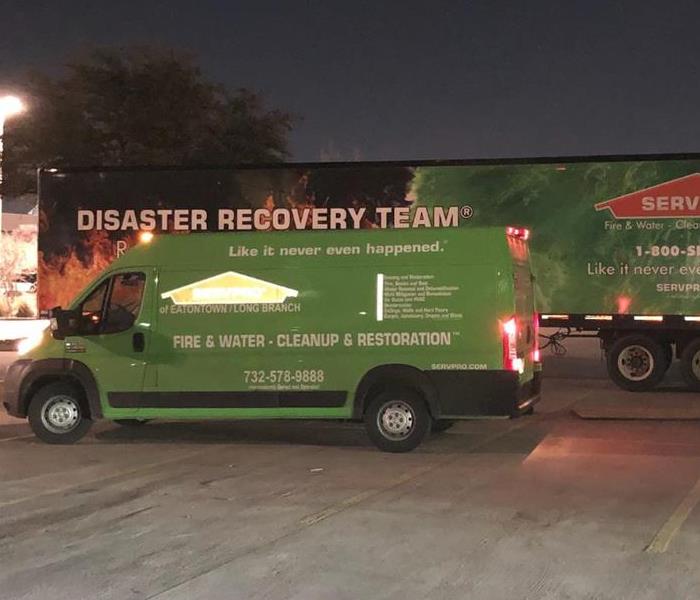 SERVPRO of Eatontown/Long Branch operating in Texas.
SERVPRO of Eatontown/Long Branch operating in Texas.
SERVPRO Storm Response Teams coordinate large scale responses, such as the recent deep freeze in Texas. This is a scalable organization similar to first responder’s modular Incident Command System. For the current disaster in Texas and other states, there are two storm response teams coordinating 1,000+ SERVPRO teams. Both SERVPRO of Eatontown/Long Branch and SERVPRO of Hackensack/Little Ferry are proud to have teams currently operating in Texas.
This requires specialized training for leaders in large scale incident management, logistics, planning, and communications. Responding teams need to understand how they will be asked to integrate into the larger organization and what protocols will be required.
Franchises who participate in Storm Response Teams are proactively trained in many areas including travel requirements and equipment needs, operating in storm damaged areas safely, FEMA expectations, budgeting, and regulatory considerations between states.
Participation in these teams is voluntary and represents a high level of commitment to technical expertise and constant preparedness. It is not only the commitment of the organization but the personal commitment of each team member who volunteers. They answer the call knowing this means leaving home for several weeks in a row to help someone in need. We are thankful to all of our team members who have answered the call!
Is Your Smoke Detector Working?
2/25/2021 (Permalink)
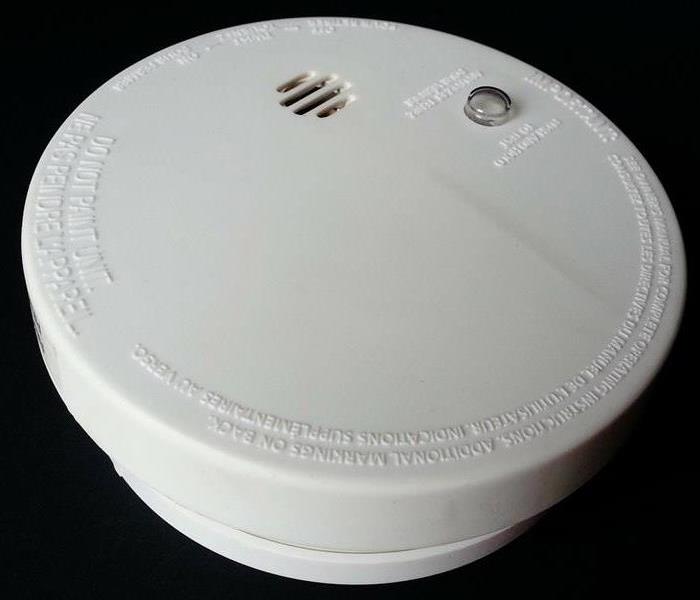 A typical smoke detector
A typical smoke detector
Are your smoke detectors working correctly? In many homes and businesses the answer is no. Often the problem is that they are perceived as a hassle and there are too many false alarms. The information below will help you troubleshoot your system because the simple fact is that smoke detectors save lives and prevent property damage.
All too often the answer for property owners is to disable the system to avoid the nuisance alarms. The batteries are removed, the system is disabled, or the devices are removed entirely. This is usually undetected, especially in private homes where fire officials do not perform regular inspections and have limited enforcement powers.
There are 3 basic types of systems but the tips below are largely the same for each. Single station units are the ones you buy at the hardware store and screw to the ceiling.
Hardwired/interconnected may look the same but they activate as a group ensuring that all areas of the home get the message. These first 2 types only notify the occupants. Monitored systems may be wired or wireless but they notify the fire department when activated.
The smoke detectors themselves are typically one of 2 types: Ionization or photoelectric. Ionization units use a small amount of radioactive material that detects invisible particles created by the fire using electrical currents. They are more expense so most people have photoelectric units. Photoelectric units use a beam of light which is deflected by smoke particles to activate.
The main problem is that other “stuff” can enter the chamber, block the light, and set off an alarm. This includes dust and bugs. The most common unwanted cause of activation is a contractor sanding near the unit. This is easily identifiable but a little spider passing through often makes the owner think the device malfunctioned.
To prevent issues follow these tips:
- Cover the detector when working nearby, especially sanding
- Put a monitored alarm system on test if you are doing something that may activate the system
- Change your batteries each time you change the clocks
- Use a vacuum to clean the unit periodically
- Units have a manufacture date on the back of them and they expire after 7-10 years depending on the brand. Replace them when needed.
Whatever you do, don’t disable these important systems. The fire department would much rather respond and find a minor issue than fight a significant fire because your system was disabled. Your local fire department is most likely offering a complementary home safety survey which can answer any questions you have along with other helpful advice.
Continuous Reinvestment
1/29/2021 (Permalink)
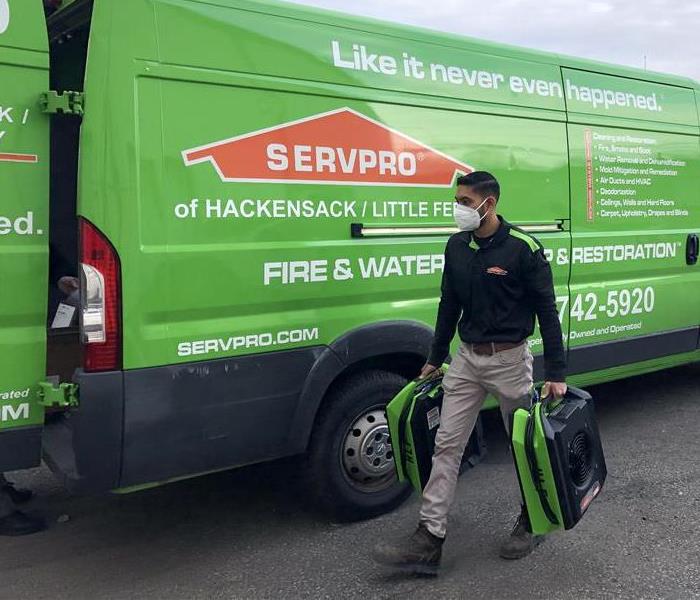 Team member loading equipment
Team member loading equipment
At SERVPRO of Hackensack/Little Ferry we are constantly reinvesting in our people and equipment. Like the Boy Scout motto says, "Be Prepared."
Unlike most companies, we do not have the luxury of reviewing plans, determining the scope of work, and investing in the right tools and equipment in preparation for a job. It is normal for most builders, contractors, and tradesman to have several days or weeks to prepare for a job. Our turnaround time from receiving the call to beginning a job is measured in minutes, not weeks.
To be prepared we need the proper tools for all types of jobs on hand, well maintained, organized, and ready to load. Our team does an amazing job or pre-planning and preparation. Our dedicated warehouse team performs preventative maintenance, monitors inventory of equipment and chemicals, and orders additional supplies.
Grab the Fire Extinguisher
1/28/2021 (Permalink)
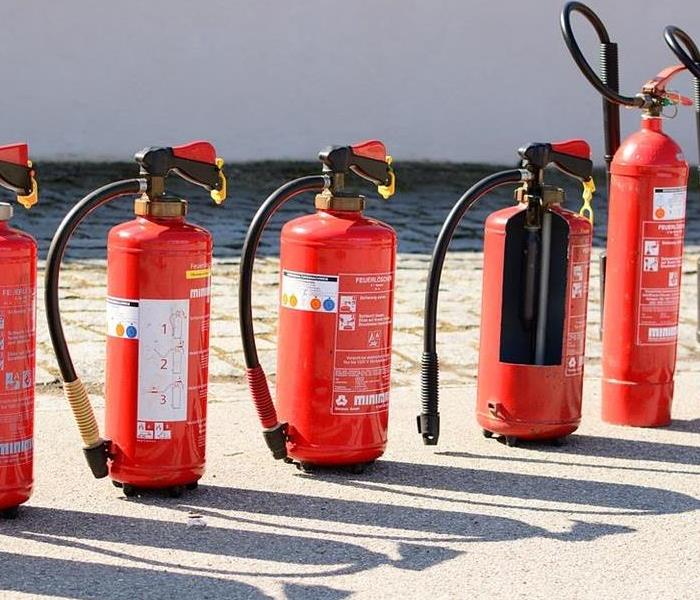 Several Types of Fire Extinguishers
Several Types of Fire Extinguishers
One of the most obvious things you can do to limit fire damage is to extinguish the fire quickly. However, some of the most common causes of residential fires are Cooking (48%), Heating appliances (14%), and Electrical malfunctions (14%), and these are not safely or effectively extinguished with water.
I am a firefighter and last night we had a call at 4AM caused by an electrical outlet which was sparking and catching the wall on fire. These calls are very routine. As a homeowner, you do not want to spray water on an electrical outlet due to the risk of electrical shock. YOU NEED TO HAVE A FIRE EXTINGUISHER IN YOUR HOME!
Fire extinguishers come in a variety of types based on the classification of fire they are designed to extinguish. For home use you should have a class ABC extinguisher which means is can extinguish class A fires (solid materials like wood), class B fires (liquids like gasoline or oil), and class C fires (electrical equipment).
Most towns require at least 1 extinguisher under the kitchen sink in order to obtain a certificate of occupancy to sell a home but these tend to disappear over time. Personally, I keep one under the sink, one on the wall in the laundry room, and one in the garage. At least maintain the class ABC extinguisher under your kitchen sink at a minimum.
If you do experience a fire, call the professionals at SERVPRO to help restore your home, “Like it never even happened.”
Have You Had Water Damage in Your Home?
1/28/2021 (Permalink)
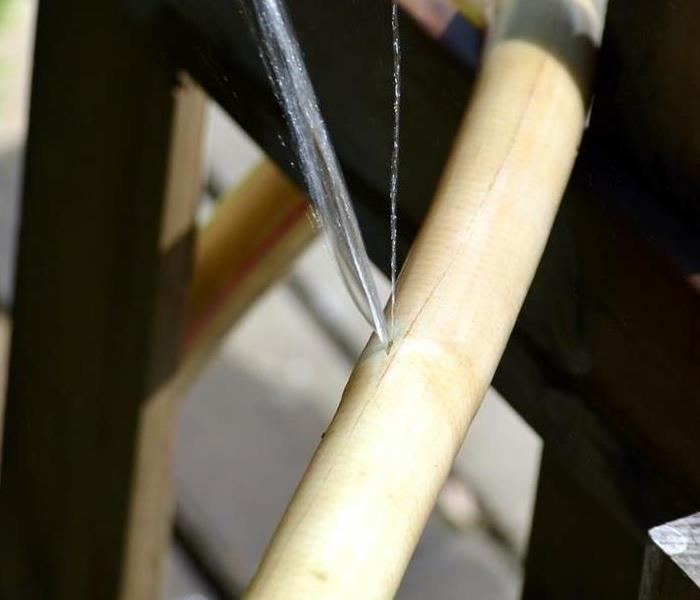 Water Spraying from a Leaking Hose
Water Spraying from a Leaking Hose
Have you had water damage in your home? On average, homes experience water damage once every 11 years. This damage is caused by a variety of sources, most of which can be mitigated through periodic monitoring and maintenance. Here are some tips to help you find some of the routine causes.
Gutters
- Make sure the gutters are not clogged by leaves and debris. This will cause standing water that can freeze and cause ice dams. For more information on ice dams click on this related blog Ice Dams
- Downspouts need to be extended far enough away from the house to prevent water from entering the basement
Plumbing
- Look for leaks under your refrigerator. Not only does removing dirt help improve the unit’s efficiency but the water supply line to the ice maker can come loose and cause a leak that is hidden due to its location. As a side note, I experienced a leak here about a year ago due to a mouse chewing on the supply line.
- Washing machines often have very old and degrading supply lines. Is yours appear worn you should consider a new set which are easy to install. Look for the ones that have a metal mesh around them for added reinforcement
- Dishwashers also have water supply lines and can have issues similar to ones noted in the refrigerator section.
Sinks
- As above, check the supply lines for leaks.
- Check the drain, especially the S-trap under the sink to make sure it hasn’t wiggled loose after being bumped by items stored in this space
Humidifiers
- One last time, check the supply lines. These units should be turned on in the fall and off in the spring at the closest valve to limit the risk of leaking during the warm weather.
If you experience water damage, call the experts at SERVPRO of Hackensack/Little Ferry at 201-441-1345.
Hidden Dangers of Power Outages
1/28/2021 (Permalink)
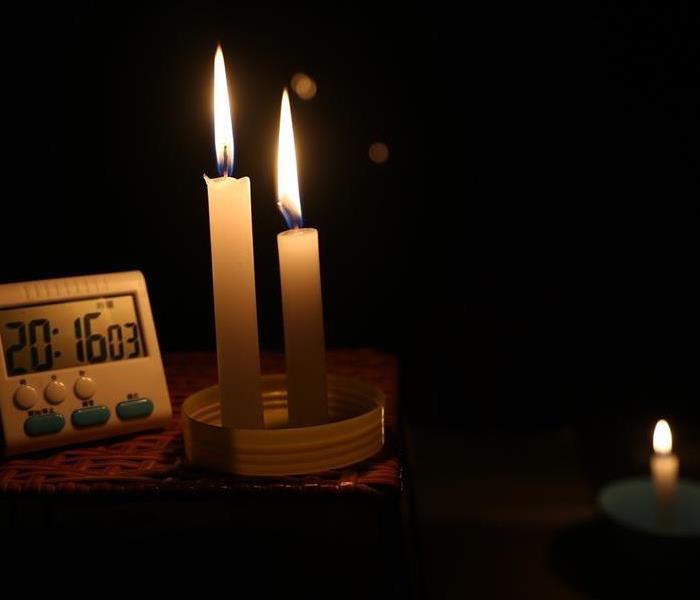 Candles on a Night Stand
Candles on a Night Stand
When the power goes out it can be very annoying, especially if you have no internet. But, there are more serious concerns that you should be considering to protect your home. Without power several critical systems in your home are going to be offline. Here are some items to consider:
Sump Pumps: these pumps are located in the basement and prevent water from entering from the ground. Without power the pump will not operate and water could enter from the sump pump pit.
Heating units: even gas powered heating units need electricity to run the blowers/fans that push the air through ducts and around the home. Without heat the pipes are susceptible to freezing and rupturing. If the temperature outside is below freezing consider turning the faucets on just a little bit to keep water moving in the pipes. This not only introduces warmer water from underground pipes but the movement of the water helps prevent freezing.
Freezers: If you haven’t thawed your freezer in a while you may have significant ice buildup that will begin to melt and cause water to puddle at the freezer door. You are better off putting a baking tray under the door rather than opening the door and trying to manually remove the ice. Opening the door will cause the cold air to escape and will lead to more rapid thawing/spoiling of food if power is not restored quickly.
Of course a back-up generator is your best bet for restoring power quickly but these can be costly, especially built in units. If you do have a generator (portable or built-in) make sure it is wired to provide power to the critical systems above.
If you do experience storm damage, call the experts at SERVPRO!
Storm Surge Flooded Floors
1/28/2021 (Permalink)
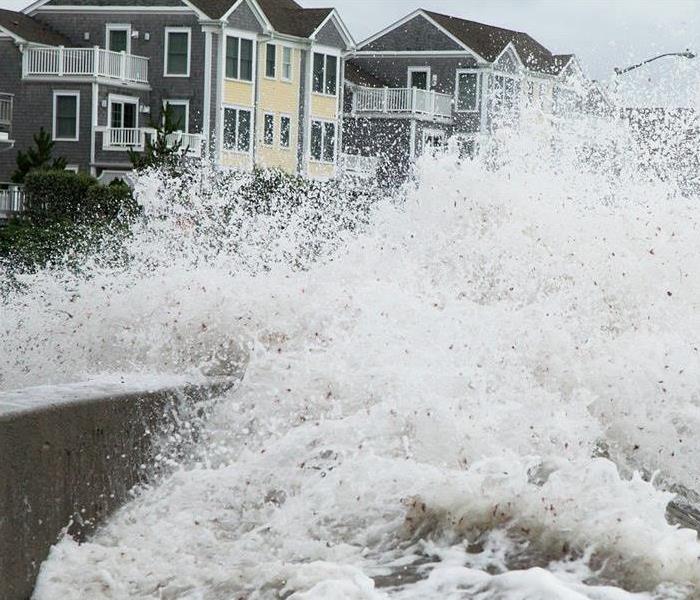 Storm surge flooded floors
Storm surge flooded floors
Storm surges can be dramatic and cause significant damage but with the proper tools and training it doesn’t have to mean a total renovation. The only good thing about storm surges is that the waters often recede as quickly as they rush in. Hardwood flooring that is properly protected with polyurethane can withstand water penetration if remediation happens quickly. At SERVPRO we have the right equipment and training to often save hardwood floors instead of removing them. Here are three techniques we use.
First, our injecti-dry panel system is one way to extract the moisture. Our technicians use plastic sheeting to create a containment area and install dehumidifiers to regulate the moisture levels. The panels are installed with special methods to reduce additional damage. We then use moisture measuring meters to monitor the changing moisture levels all the way to the sub-floor.
Second, we may utilize a heat drying system which heats the material to approximately 100 degrees. Heat ducts are installed to remove the humid air and infrared monitors are used to monitor the drying process.
Finally, a Desiccant Dehumidifier may be used to introduce outside air which is passed through a dehumidifier before being introduced to the material. Again, moisture monitoring equipment is used to measure the progress and reduce moisture at a controlled rate.
If you experience flooded floors call us to see if one of our methods can be used to save the material before you begin removing any material.
Storm Front Coming
1/27/2021 (Permalink)
Prepare for the next Arctic Blast coming this Friday. The high temperature on Friday will be in the low 20’s with a low near 15 degrees. Is your home ready to withstand the blast?
Here is a simple checklist of items you can do to prepare for the cold:
- Have your HVAC system checked if you have not already done so. An HVAC system failure in freezing temperatures is not only an uncomfortable inconvenience but could lead to frozen and ruptured pipes.
- Clean your chimneys to remove soot build up and prevent a possible clog. Smoke blowing back into your home can make a real mess.
- Test your smoke and CO2 alarms to make sure they are working and have charged batteries.
- Make sure all outside plumbing including hoses, lawn sprinklers. and pool equipment is off and pipes are drained.
If you experience storm related damage call SERVPRO at the number above.
COVID Market Research for Businesses
1/27/2021 (Permalink)
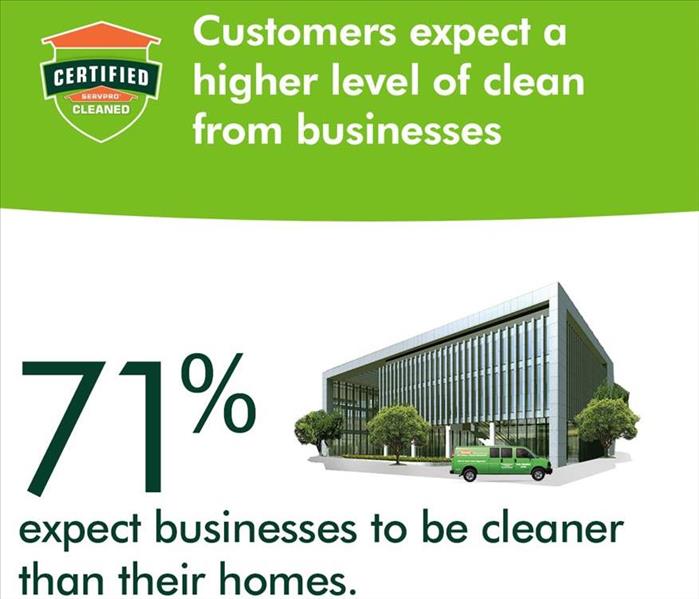 COVID Research Findings Graphic
COVID Research Findings Graphic
According to a study by Message Factors, Inc., a market research firm, businesses are being held to a high standard for COVID-19 cleanliness.
- Consumers expect your business to be cleaner than their home.(71% expect businesses to have higher cleanliness standards than respondents do in their own homes.)
- Ifyou aren’t clean, your business will suffer great damage to its reputation. (76% say the way a business addresses cleanliness during COVID is a good indicator of how well that business is run in general.)
- This is the start of a new era for cleanliness and businesses.(73% say they are going to be more attuned to cleanliness once COVID is over.)
- Customer concerns about COVID are not going away any time soon.(68% are constantly thinking about avoiding COVID exposure when out in public.)
- All else being equal(product, price, service, convenience) customers trust businesses that are professionally cleaned over ones that self-clean. (64% are more likely to choose to shop at the store that has a decal stating the store has been professionally cleaned.)
- Surface cleaning remains a significant concern. (59% are worried about COVID exposure from touching surfaces that have not been sufficiently cleaned.)
If you are interested in having your business professionally cleaned and certified, call SERVPRO!
What Type of Water Is It?
1/27/2021 (Permalink)
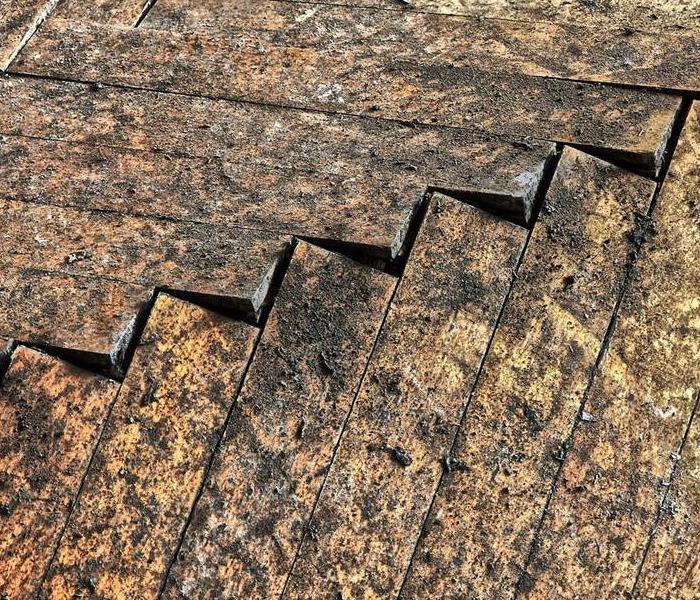 Boards after water damage
Boards after water damage
What type of water is it? No, sparkling or tap are not options when it comes to water damage. There are 3 classifications of water when it comes to flooding: Clear, Gray, or Black. These are not exact terms but designed to give an indication of the level of contamination within each.
Clear Water originates from water pipes such as water mains or plumbing in your home. It is always essential to remove the water as quickly as possible but clear water is the easiest because there are reduced safety procedures involved.
Gray Water is water which may have contamination. Therefore, a moderate degree of care and safety precautions are warranted. This water may come from storm damage or flood damage from more natural sources.
Black Water is the most serious and dangerous. SERVPRO technicians are trained in handling this material, along with many other biohazards. Typical sources may include septic tanks or waste water pipes that have ruptured. This type of water causes the most dangerous due to the microbial parts it contains and the accompanying health effects of exposure. Don’t tackle these situations yourself. Call the experts at SERVPRO!
Ice Dams
1/23/2021 (Permalink)
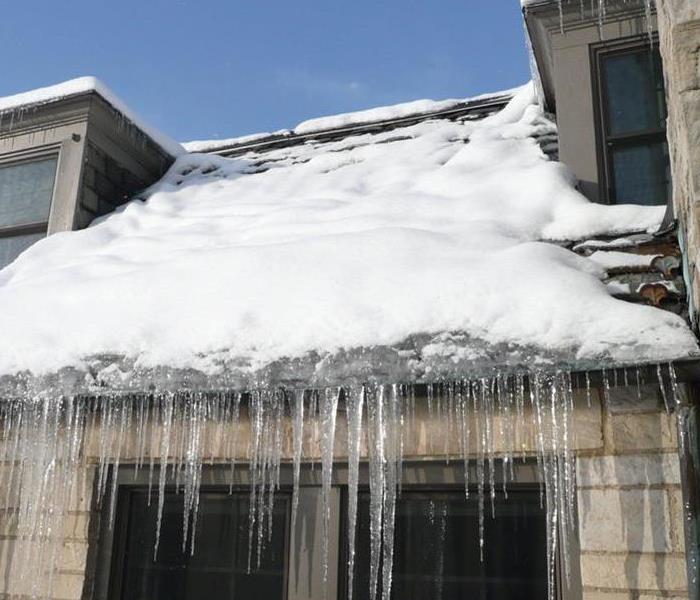 Ice Dam on a Roof
Ice Dam on a Roof
It looks like we have a winter storm moving into NJ this week. At SERVPRO this means we will likely receive calls for water leaking through the ceiling. The most common cause during winter storms is Ice Dams.
Ice dams form when the snow melts, runs down your roof and refreezes near the edge or in a valley. This only occurs when the roof has colder and warmer spots which allow the water to melt and then refreeze. Where the water refreezes it masses and creates a ‘dam” which pushes the water back up the roof. This water pushing/flowing against the usual force of gravity helps it to find openings to penetrate the roof and ceiling below.
Typically, heat escapes through ceilings into the attic and warms the wood and shingles directly above it. Although the outdoor temperature is below freezing, the snow melts over the warmed section of roof. Ideally, you should not see the snow melting on the roof if the temperature is below freezing. This means sufficient heat is escaping from your home’s living spaces to provide enough warmth to melt the snow. You should also not see uneven melting as evidenced by bare shingles next to patches of snow. The melted areas show where the strongest heat loss is occurring.
If you see these warning signs on your roof you should take steps to prevent an ice dam from occurring. The overall strategy is to keep the roof cold which also makes your home more energy efficient and comfortable. Three steps to consider are:
- Look for openings which may be causing heat loss such as gaps around pipes and air ducts which can easily be filled with spray foam.
- Make sure the attic floor is properly insulated with insulation rated at R-40 or higher. Look for areas where insulation has been removed or pushed aside such as bathroom exhaust fans or other modifications.
- Make sure your roof is properly ventilated, based on the type of roof you have.
A technician from SERVPRO can perform an inspection for you using a thermal imaging camera to view and photograph areas where heat is escaping. This needs to be done on a cold day.
If these measures don’t work you might consider installing a heating coil in the affected area with a thermostatic switch which turns on the heating coils when the temperature drops below freezing. For worst case scenarios, safely remove the snow and ice manually with a shovel and/or broom until a long term solution can be found.
Proper Soot Remediation
1/21/2021 (Permalink)
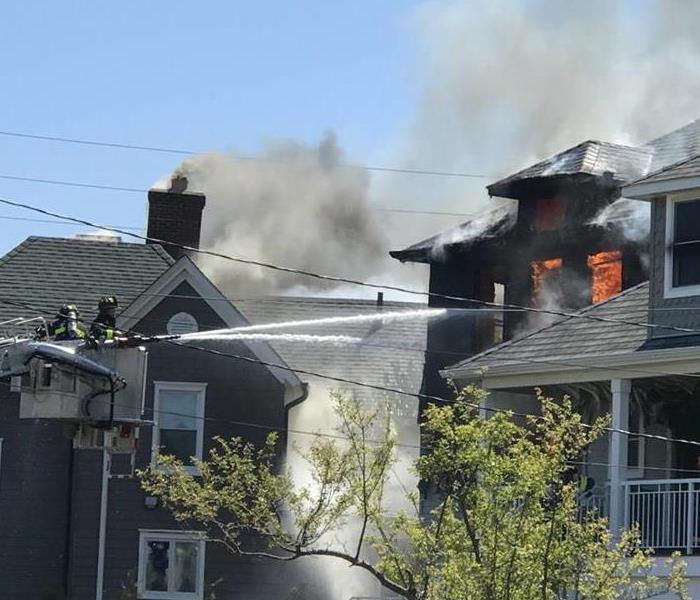 Smoke Coming From a Burning Home
Smoke Coming From a Burning Home
The possible health effects of a fire can last long after the flames are extinguished. In fact, decontamination of soot and environmental exposures is the “hottest” topic in the fire service today. The nasty chemicals caused by fire can linger for long periods of time on surfaces and in belongings. Make sure these items are professionally cleaned.
Soot is made of tiny particles created by incomplete combustion, technically called pyrolysis. (Fun fact: solids and liquids can’t burn. Heat at the surface of these materials is converting them to gasses which burn.) Even the basic wood used in framing (Douglas Fur) causes 75 different chemicals including poisons such as hydrogen cyanide and phosgene. These particles linger in the form of soot leaving a dangerous smelly mess.
During a fire, soot spreads to the whole house, attaching to surfaces. The acidic properties of soot can further damage your home and indoor air quality if the soot is not removed immediately.
Soot can inhabit your home even without a fire. Candles can lead to soot buildup, fireplaces can release soot as well if not ventilated properly, and furnaces are also a source of soot contamination when they produce a puff back (reference our blog on puff backs at What is a Puff Back?)
To avoid the health risks of soot exposure after a home fire, make sure that all soot-affected areas are properly cleaned and sanitized.
When cleaning soot, wearing safety equipment to protect the lungs, skin, and eyes is essential in reducing soot exposure. Specialized techniques such as air scrubbing are also needed to restore indoor air quality following a fire.
A dust mask and a household cleaner are not enough to clean up soot! Removing soot requires professional tools, knowledge, and expertise. Certified experts at SERVPRO can properly clean soot and odors from your entire home to ensure it is safe to inhabit.
If you are concerned about these exposures in your home, call us today for a consultation at 201-330-4193.
You Will Thank Me One Day
1/20/2021 (Permalink)
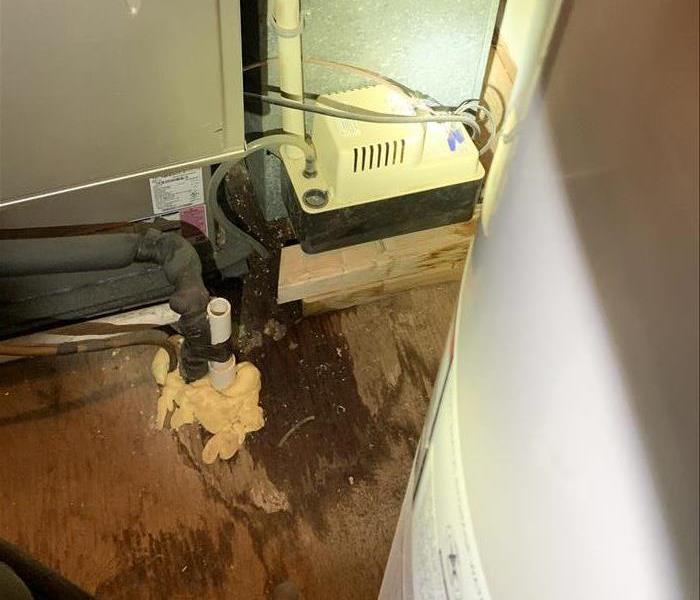 Water pooling from a leaking furnace exhaust
Water pooling from a leaking furnace exhaust
How often do you check the mechanical closet/spaces in your home? If you’re like me, you are proud of yourself if you remember to change the air filter even once a year. Like many issues that arise with home ownership, an ounce of prevention is worth a pound of cure.
I recently went into my mechanical closet to get a folding chair and noticed water on the floor. “Where did that come from,” I wondered. It wasn’t the hot water heater or near any plumbing. It was next to the furnace (see image). While the amount of water was fairly minimal, it would certainly result in a deterioration of the plywood flooring and create a breeding ground for mold.
I had my HVAC contractor come and the cause was a tiny hole in the exhaust flu. When the weather turned cold the moisture in the exhaust condensed and ran back down the flu, leaking out onto the floor. I paid $99 for the service call to have it repaired.
The lesson: check your mechanical areas periodically to look for signs of water, mold, or other mechanical issues that could result in more significant issues if not addressed. You will thank me one day…
It's Just Water
1/18/2021 (Permalink)
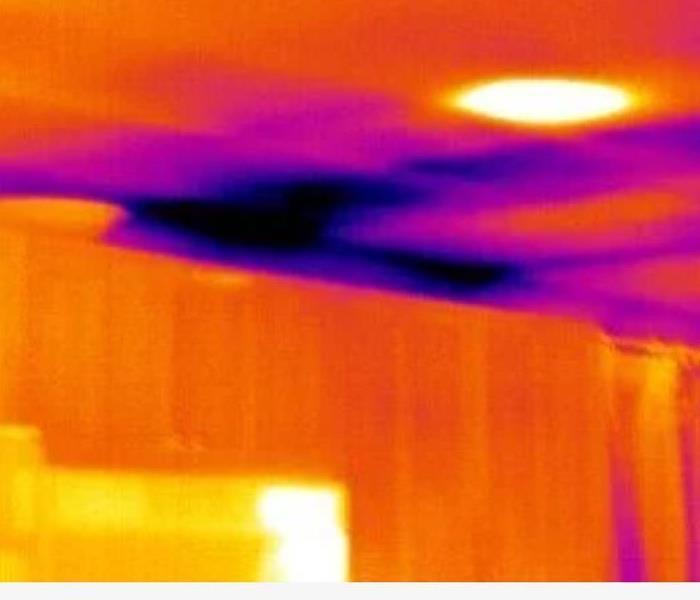 Water damage visible when viewed through a Thermal Imaging Camera
Water damage visible when viewed through a Thermal Imaging Camera
It’s just water, but it makes a huge mess! Even a small leak can create a massive amount of damage and pose serious health concerns for the long term. It is important that those cleaning up water damage have the proper training and equipment. This is not a job for your typical general contractor!
The cosmetic aspects of a remediation project are fairly obvious to identify but what about what you can’t see? Water saturated insulation, flooring, and sheetrock can be a breeding ground for harmful mold that may not become apparent for a long time. This growth may also cause health issues including respiratory and auto-immune issues.
One way SERVPRO uses technology to assess the extent of water damage is with a Thermal Imaging Camera (TIC). This roughly $2,000 piece of equipment uses varying colors to show heat changes, making dampness visible. A local handyman or general contractor will not have this type of technology.
Wet areas in the building material do not warm and cool the same way adjacent dry areas do and this makes them visible when looking through a TIC. The photo shown here is from recent water damage at a local school here in NJ. To the naked eye the area shown appeared to be undamaged. However, when viewed as a thermal image the pattern of water soaking into the material from the flooded floor above becomes apparent. Had this area not been removed and replaced it could have created mold issue for the staff and students.
All About the People
1/15/2021 (Permalink)
 Owner John Majeski
Owner John Majeski
Isn’t it always about the people? When you hire someone to do a job, any job, satisfaction always comes down to the people doing the work. At SERVPRO of Eatontown/Long Branch and SERVPRO of Hackensack/Little Falls we have the best.
Training is important so our leaders and project managers maintain the highest levels of certification from The Institute of Inspection Cleaning and Restoration Certification (IICRC). However, training is not just an event. Our entire team receives ongoing weekly continuing education. This training is supported by SERVPRO’s industry leading training group.
Beyond training there needs to be accountability. All of our employees receive a criminal background check before hire and our project managers are hands on in managing the job site.
Insurance is also essential. God forbid something goes wrong, how do you know you will be protected? SERVPRO maintains all of the necessary insurance at levels that exceeds the industry recommendations. This includes Liability protection and Worker’s Compensation Insurance.
What does this all mean? Satisfied customers, as our online reviews can attest!
Don't Ruin Your Vacation
1/13/2021 (Permalink)
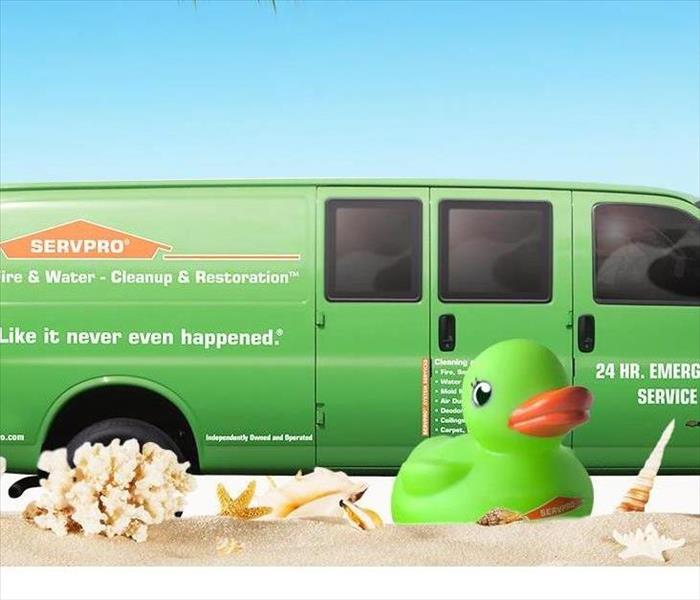 Oh, I'd like to be that van!
Oh, I'd like to be that van!
Are you looking forward to going on vacation again? Our family’s “Spring Break Trip” looks like it is going to be cancelled due to Covid, so my wife (Happy Birthday!) wants to take a road trip to FL. I love vacation but I always have that voice in the back of my head wondering if I set the alarm, locked the doors, and did my wife unplug the hair straightener (yes honey, I love you, and it’s your birthday, but this is a legitimate concern). But, what else am I forgetting? What about Water damage?
Before you leave, it is important safeguard your home from possible water damage. Here are some easy steps to protect your home and prevent vacation from being cut short due to a disaster.
Take a proactive look before you leave
Check for leaks in your plumbing, focusing on the pipes and connection you can see inside your house. The weakest points are places where hoses connect to taps or household appliances. Check under sinks for signs of leakage and rust and around water heaters, dishwashers, furnaces, and washing machines
Turn off the Water Supply
Shut off the water supply to the home and the hot water heater itself. Not only are hot water heaters a major culprit of water damage but there is no need to keep 75 gallons of water piping hot while you are away. Even a small leak, from a toilet supply line for example, can cause a massive amount of damage if not detected quickly (See our Facebook post from 12/4 at Simple toilet leak - NJ).You may also choose to, additionally, shut off the valves at your toilets, appliances, washers, and dishwashers.
Santa Came Early
12/29/2020 (Permalink)
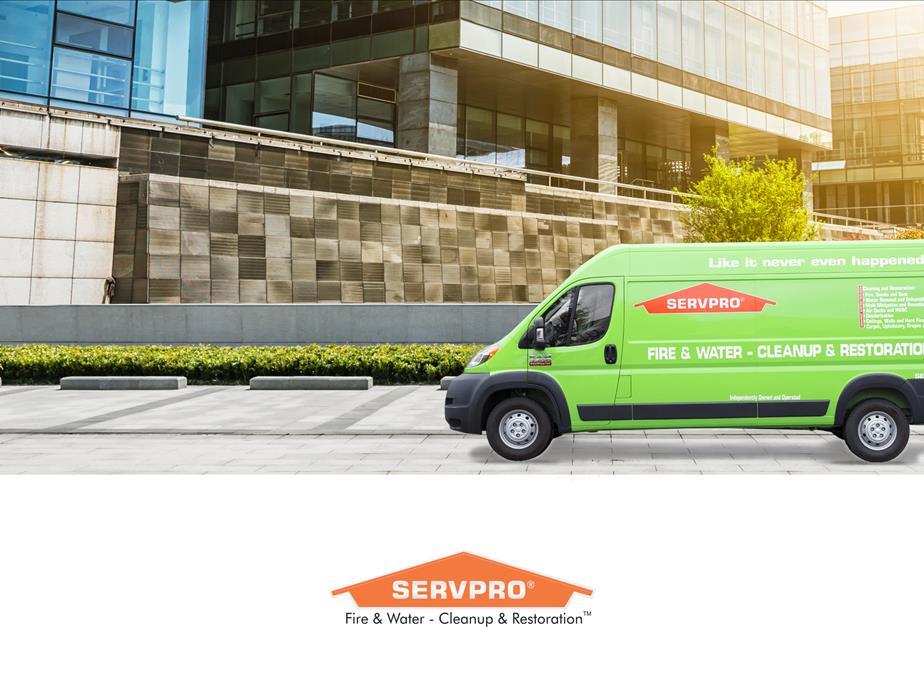 SERVPRO Commercial Services
SERVPRO Commercial Services
Commercial restoration requires a significant capacity. Due to the size and complexity of a large-scale commercial disaster, the demands on resources, manpower, expertise, and equipment can be extreme. Many restoration companies are not equipped to scale-up from residential clean ups to tough commercial operations. The decision to prepare for these types of jobs needs to be made well before disaster strikes.
Required pre-planning and investments:
- Equipment: the right tools for the job need to be ready in advance. This means a significant investment in purchasing, maintaining, and warehousing an adequate quantity of each type of equipment needed. While our owner, John, likes finding reasons to wear his Christmas suit the real message to the team is we are ready!
- Manpower: Any restoration company needs to have a variable staffing pool including full-time, part-time, per diem, and contract workers. But, in commercial jobs the level of expertise needed is hire and this labor pool needs to be trained and ready to go when the time occurs.
- Expertise: Our leaders and project managers maintain the highest levels of certification from The Institute of Inspection Cleaning and Restoration Certification (IICRC).
Even with the best preparation, large scale disasters like Super Storm Sandy here in NJ can cause a need for a large scale disaster response. SERVPRO coordinates a nationwide network of 1,700 franchises along with corporate-deployed resources to ensure that our clients receive the service they require in even the worst of times.
Check out the video of what Santa delivered at Santa Came Early
To talk about SERVPRO can help you pre-plan for a commercial disaster please call
SERVPRO of Hackensack/Little Ferry at 201-330-4193
What is a Puffback?
12/26/2020 (Permalink)
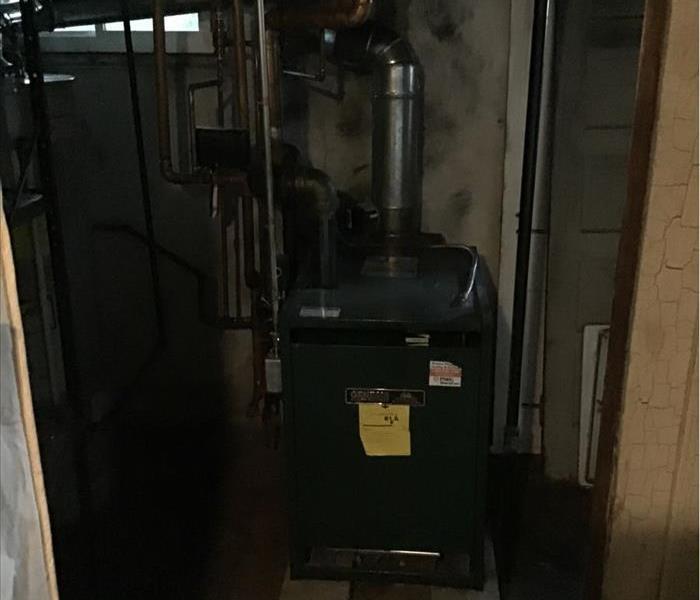 Furnace after puffback
Furnace after puffback
Do you stay up at night worried about Puffbacks? Yeah, I didn’t think so but this quick read could save you a big headache. Many people don’t even know what a puffback is but they are fairly common.
A puffback is an explosion of unburned fuel vapors inside your furnace, boiler, or hot water heater. The explosion does not pose a serious safety issue but can cause a huge mess of soot and ash that gets blown into your property. Puffbacks can happen in both natural gas and oil fueled furnaces but are more common in oil furnaces due to the need for more routine maintenance.
Fortunately regular maintenance can help prevent a puffback:
- Don’t keep pressing the reset if your furnace is not working properly or staying lit. Schedule a service call with your HVAC contractor.
- Have your heating system serviced annually including a check for clogged burners.
- Look for visible oil leaks/dripping around the oil supply piping.
- Make sure the flue vent is securely connected. Small puffbacks over time loosen this connection.
- Check the exhaust flue and chimney for obstructions.
- Dirty ignition electrodes don’t generate enough of a spark to burn all of the fuel causing excess fuel to puddle in the combustion chamber causing corrosion.
Should you experience a puffback, the SERVPRO team has the tools and training needed to restore your property. Specialized tools for this job include proprietary chemicals to remove soot, eliminate odors, and prevent stains. Our technicians are highly trained in property damage restoration. From initial and ongoing training at SERVPRO’s Corporate Training Facility to regular IICRC industry certifications, rest assured our staff is equipped with the knowledge to restore your property. Our training program includes the following:
IICRC Training
Employee Certification Training
Initial Franchise Training
e-Learnings
Continuing Education Classes
Call SERVPRO of Hackensack/Little Ferry at 201-330-4193
Fun fact: I am a volunteer firefighter and while writing this blog I received an alarm for a smoke condition in a local bank. After our investigation the likely cause was determined to be a puffback in the natural gas heating system. The bank’s HVAC contractor is enroute for a service call.
Commercial Water Damage Concerns due to COVID-19
12/26/2020 (Permalink)
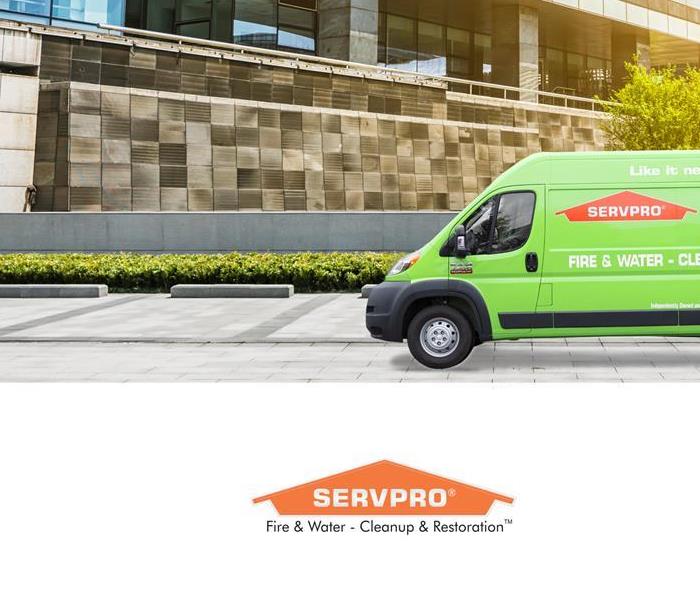 SERVPRO Cleans Commercial Buildings
SERVPRO Cleans Commercial Buildings
With many offices and commercial spaces vacant, or minimally staffed due to Covid, water damage has become more common and more severe. There are several reasons for this increase but many can be prevented with a few simple steps. Here is a list of causes and some steps to prevent a disaster.
- Broken pipes due to freezing – With less staff working, water is not flowing as regularly and pipes are more prone to freezing. Consider shutting off/draining water pipes to areas that are not being used.
- Stagnant water – water sitting in pipes can become rusty and foul. Run the water/flush toilets daily which keeps water fresh. This also helps to keep water in the drain’s “S-trap” which prevents sewer gases from coming into the property.
- Undetected leaks – slow leaks that go undetected can lead to significant mold issues. Major leaks can cause catastrophic damage if they are allowed to flood the structure undetected. Assign a team member to walk the property regularly looking for potential leaks, especially new markings in ceiling sheet rock or tiles.
- Deferred maintenance – While the facility may not be getting it’s typical wear and tear, regular maintenance is still needed on essential systems like boilers, furnaces, and alarm systems.
Should a loss occur call SERVPRO of Hackensack/Little Ferry at 201-330-4193.
Tis the Season to Prepare for Nor'Easters
12/10/2020 (Permalink)
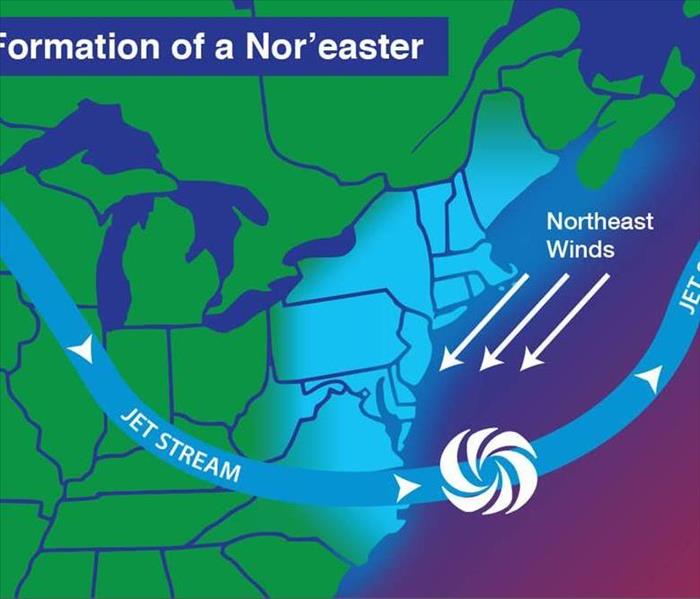 Photo courtesy of NOAA
Photo courtesy of NOAA
As a Nor'easter or Coastal Storm Approaches
- Listen to a National Oceanic and Atmospheric Administration (NOAA) Weather Radio or to a local news station for the latest information.
- Follow instructions given by public safety officials. Many towns have email or phone distribution systems for emergency messages. Make sure you are on the list.
- Review your family emergency plan.
- If you live or work in a flood zone, hurricane evacuation zone, or an area that is prone to flooding be ready to evacuate. This requires an understanding of which roads experience flooding most often so you can have an alternate route in mind.
- If you are not in an area prone to flooding and plan on riding out the storm at home, gather adequate supplies in case you lose power and water for several days and are unable to leave.
- Prepare for power outages by charging cell phones and electronics (and portable cell phone chargers if you have them) and setting your refrigerator and freezer to their coldest settings. If you use electricity to get well water, fill your bathtub with water to use for flushing toilets. Gather adequate supplies in case you lose power and water for several days and are unable to leave.
- Keep your car’s gas tank full. Pumps at gas stations may not work during a power outage.
- Prepare your home.
- Secure or bring in outdoor objects (patio furniture, children's toys, trash cans, etc.) that could be swept away or damaged during strong winds or flooding. This includes grills! Despite their size and weight, strong winds can knock over grills causing gas lines to be severed. Fire departments across Bergen County, NJ responded to numerous calls for ruptured grill supply lines during our last storm.
- Clear clogged rain gutters to allow water to flow away from your home.
- If damaging winds are expected, cover all of your windows. If you don’t have storm shutters, board up windows with 5/8” exterior grade or marine plywood.
- Go Tapeless! Taping windows wastes preparation time, it does not stop windows from breaking or make cleanup easier. In fact, taping windows may create larger shards of glass that can cause serious injuries.
- Turn off propane tanks if you are not using them.
- Prepare for flooding by elevating items in your basement, checking your sump pump, unplugging sensitive electronic equipment, clearing nearby catch basins, and parking vehicles in areas not prone to flooding.
- If instructed, turn off your gas and electricity at the main switch or valve.
- If you have a boat, remove it from the water. If you cannot, prepare your boat for the storm to reduce damage.
- If the nor’easter or coastal storm is a winter storm, learn how to prepare with our Winter Storm Safety Tips.
For more information visit this great site created by the State of Massachusetts”
https://www.mass.gov/info-details/noreaster-coastal-storm-safety-tips#:~:text=a%20power%20outage.-,Prepare%20your%20home.,flow%20away%20from%20your%20home.
Covid-19 Cleaning by SERVPRO
12/5/2020 (Permalink)
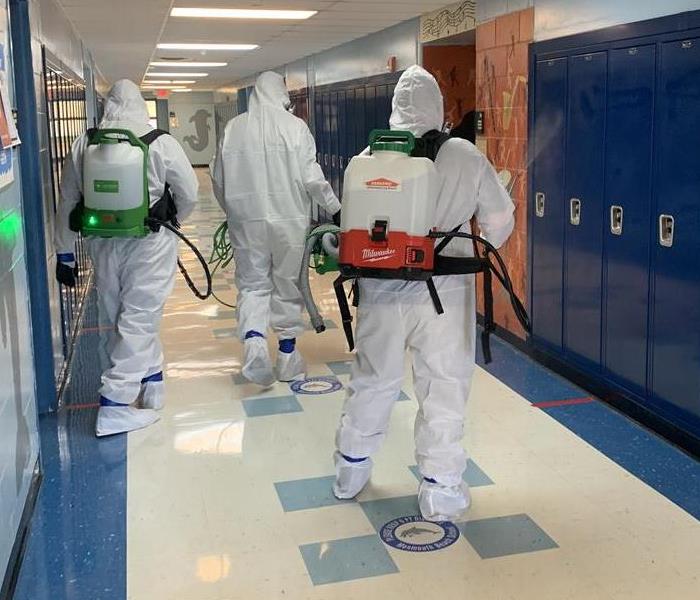 Cleaning a Local School
Cleaning a Local School
SERVPRO is Here to Help during this time of need
During this unprecedented time caused by the global pandemic of coronavirus, this is a reminder to our customers that we are specialists in cleaning services, and we adhere to the highest cleaning and sanitation standards. SERVPRO of Hackensack/Little Ferry has been busy cleaning facilities or all types including nursing homes, schools, restaurants, and government offices.
Specialized Training
We are prepared to clean and disinfect your home or business, according to protocols set forth by the Centers for Disease Control and Prevention. We have years of experience in dealing with biological contaminants, and we will go beyond the scope of work that regular janitorial staff perform on a daily basis.
The CDC encourages cleaning of high-touch surfaces such as counters, tabletops, doorknobs, light switches, bathroom fixtures, toilets, phones, keyboards, tablets and tables. Other spaces mentioned in the CDC’s guidance for commercial spaces include:
- Kitchen/Food Areas
- Bathrooms
- Schools/Classrooms
- Offices
- Retail Spaces
- Water Fountains
- Shelving/Racks
- Sales Counters
- Carpets and Rugs
- Stair Handrails
- Elevator Cars
- Playground Equipment
- Fitness Equipment
Specialized Products
The CDC recommends usage of a labeled hospital-grade disinfectant with claims against similar pathogens to the coronavirus. Multiple products in the SERVPRO product line carry the EPA-approved emerging pathogens claims. While there is currently no product tested against this particular strain of the coronavirus, we are following all guidelines as provided by the CDC and local authorities.
Call Today for a Proactive Cleaning
If your home or business needs deep cleaning services, call the experts today – SERVPRO of Hackensack/Little Ferry, 201-330-4193
Sources:
https://www.cdc.gov/coronavirus/2019-ncov/hcp/guidance-prevent-spread.html?CDC_AA_refVal=https%3A%2F%2Fwww.cdc.gov%2Fcoronavirus%2F2019-ncov%2Fguidance-prevent-spread.html
https://www.cdc.gov/coronavirus/2019-ncov/specific-groups/guidance-business-response.html
Why does SERVPRO Use Ultrasonic Cleaning during Mold and Water Removal?
10/29/2020 (Permalink)
 Hackensack homeowners can trust that their home and belongings are in good hands with our experienced SERVPRO technicians.
Hackensack homeowners can trust that their home and belongings are in good hands with our experienced SERVPRO technicians.
Hackensack Homeowners need Gentle and Effective Cleaning after Mold and Water Removal.
It is an unfortunate fact of life that plumbing leaks, storms, and even broken appliances can damage your Hackensack home. Water can move quickly through a property, soaking into any porous material from the carpet to your favorite armchair and even into drywall. And once water is present, it does not take long for fungal growth to begin (as little as 48 hours.)
When you need mold and water removal in your Hackensack home, you might worry about all the items that need cleaning afterward. Water quickly seeps into personal belongings, and mold can grow on many surfaces. Luckily, SERVPRO is on hand to help.
What is ultrasonic cleaning?
Ultrasonic cleaning uses bubbles to clean. The unit contains a basin filled with an ultrasonic cleaning solution. We place the items inside, and the machine creates ultrasonic frequencies to agitate the solution and make tiny bubbles. The bubbles burst against the surface of any items placed in the tank, pushing away dirt, grime, or in this case, mold.
We usually place items in the ultrasonic unit for five minutes, up to twenty, depending on how soiled they are.
Why does SERVPRO use it?
Ultrasonic cleaning has many advantages:
- Gets into hard to reach nooks and crannies
- Gentle enough to leave items undamaged
- Only requires one technician to operate the machine
- A fast and efficient cleaning process
What can we use ultrasonic cleaning on?
You would be surprised at the number of things we can clean with the ultrasonic unit:
- Window blinds – from Venetian to plastic, and including fabric blinds and drapes
- Keepsakes – many toys, stuffed toys, and knick-knacks are suitable for ultrasonic cleaning
- Dishware, cutlery, and kitchen utensils
- Rugs and scatter cushions
We have portable units that fit on the countertop, and some of our facilities include large units that are big enough for automotive parts!
We cannot use the machine on items that are susceptible to water damage, but ultrasonic cleaning is an excellent choice for most other things.
For help ridding your home of mold and excess water, call SERVPRO of Hackensack / Little Ferry at (201) 742-5920.
Do Small Home Fires in Little Ferry Need Professional Restoration Services?
10/24/2020 (Permalink)
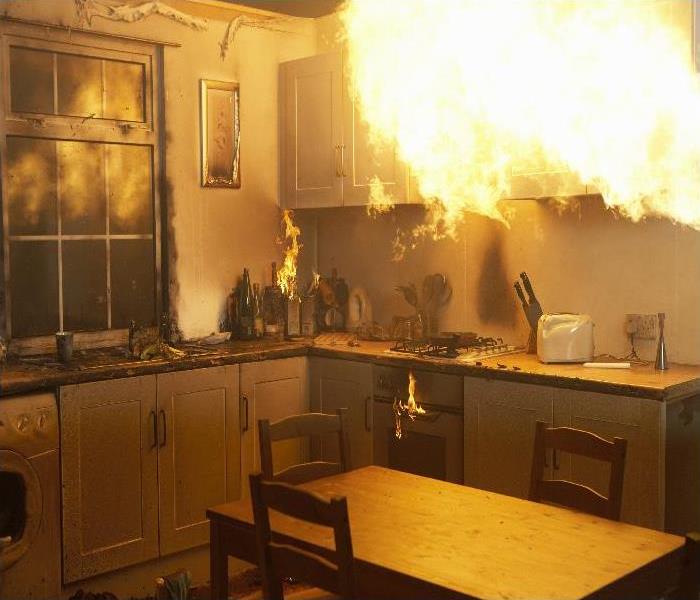 SERVPRO of Hackensack / Little Ferry at (201) 742-5920 stands ready 24/7 to support local properties with fire damage.
SERVPRO of Hackensack / Little Ferry at (201) 742-5920 stands ready 24/7 to support local properties with fire damage.
Soot and smoke damage can spread throughout your Little Ferry home quickly, so bringing in SERVPRO to halt the issue should be priority number one
When a small exterior fire or a kitchen blaze that did minimal damage in a Little Ferry home occurs, the first impulse many homeowners have is to clean up the mess and replace the siding or sheetrock that received charring. However, in many cases, this works against the property owner because the fire odor remains as the soot and smoke residues did not get adequately removed. Some of the main issues with soot remaining in the home are:
• Soot particles can exist smaller than the eye can see and produce pungent odors anywhere they are in the home
• This particulate can get spread through the ductwork and foot traffic in the home
• Soot can be a potential skin and respiratory irritant for some people
• If not removed quickly, soot can pit and mar chrome and metal fixtures
What is the Best Method to Remove Fire Damage?
When SERVPRO techs clean up and restore Little Ferry homes with fire damage, the equipment and applications used depend on the type of smoke damage left behind; there is no single "best method." Dry smoke does not cling to surfaces in the same manner as wet smoke residues apply themselves, requiring the use of solvent-based cleaning agents to release its grip.
Also, care needs to get taken to match the cleaning solution to the type of surface or material getting cleaned to ensure the agent chosen will not harm the article getting cleaned. That is why the SERVPRO techs give detailed attention to testing fibers and learning the manufacturing components of items before cleaning, so it gets done right for the best outcome.
SERVPRO of Hackensack / Little Ferry at (201) 742-5920 stands ready 24/7 to support local properties with fire damage. The technicians have the training and advanced tools to make the damage to your home, “Like it never even happened.”
Are There Different Types of Water Removers for Damaged Homes?
10/7/2020 (Permalink)
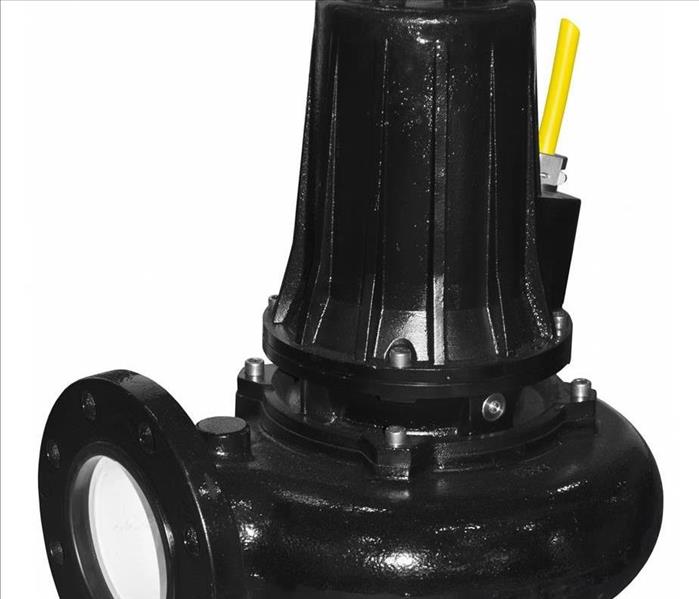 SERVPRO Provides Advanced Water Removal Equipment to Mitigate Damage to Hackensack Area Properties
SERVPRO Provides Advanced Water Removal Equipment to Mitigate Damage to Hackensack Area Properties
Our SERVPRO team utilizes a full inventory of restoration and recovery tools to help your water-damaged Hackensack home.
Meeting the needs of a water-damaged Hackensack property means understanding the changes from one site to the next. A pipe burst from freezing temperatures requires different tools and approaches than a leaking fixture underneath a sink. We have a comprehensive inventory of recovery tools to help.
Because water damage in Hackensack homes can be so destructive when not thoroughly addressed, we rely on multiple types of tools to manage various aspects of this restoration. Among the most pressing of these is removing standing water and trapped water in structural elements throughout the property, as this can lead to damaging situations like microbial growth and deterioration. Some of the different extractors that our professionals use include:
- Electric Submersible Pump – Electric pumps are among the most common option for our restorers, offering quiet and continuous operation. Typically deployed with standing water depths of two inches or more.
- Self-Priming Trash Pump – When solids and small bits of debris are a possibility in the water, these powerful pumps can help manage the standing water threats.
- Light Wands – Attachments for wet vacuums are necessary for water removal, as many of the impacted areas are not highly accessible.
- Weighted Extractors – Stand on units use our technicians' weight to force moisture to the surface of carpeted floors for extraction. Drying in place is a key element to salvaging wet carpets.
What Tools Get Used for Thorough Drying?
Drying is ultimately one of the most necessary elements of any water restoration project. While air movers and dehumidifiers remain the foundational blocks of this phase, we can also use special tools like positive and negative pressure systems, floor mat drying systems, and portable heaters.
Water restoration does not have to be overwhelming for homeowners. Our SERVPRO of Hackensack / Little Ferry team is standing by 24/7 to help when you call (201) 614-2600.
Why SERVPRO is the Best Restoration Company In Your Area
6/25/2020 (Permalink)
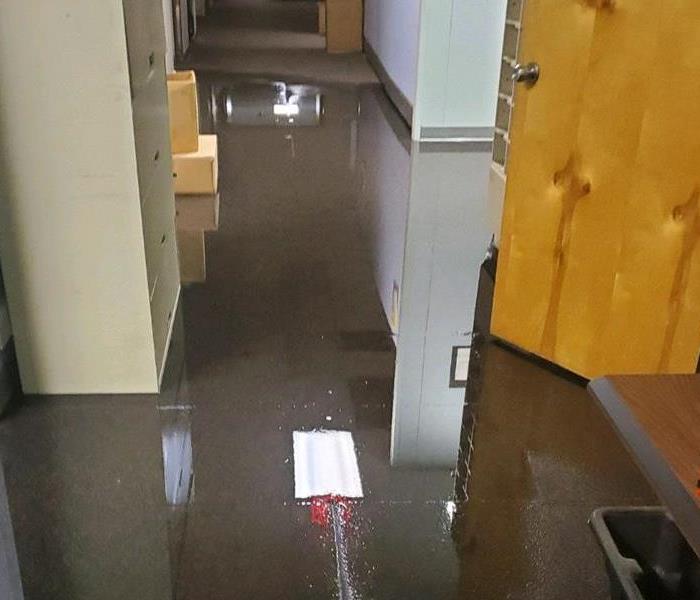 Water Damage
Water Damage
Disasters are by definition: "a sudden event, such as an accident or a natural catastrophe, that causes great damage."
Nobody can predict when a water heater will burst, a pipe will break, or your stove will catch fire while you’re cooking.
But SERVPRO of Hackensack/Little Ferry is always available, twenty-four hours a day, seven days a week. We are always ready to be there when you call, being "faster to any disaster."
Within minutes water will quickly spread, saturating everything in its path.
Fire and smoke are especially destructive, leaving physical damage, smoke and soot and lingering odor settling in air ducts, furniture, clothes, and crevices. In many instances property will also suffer from water damage from firefighting efforts.
In either case, The longer an area remains unmitigated, restoration time and cost increase dramatically; replacing contaminated materials and structural rebuilding may be extensive. That is why SERVPRO is ALWAYS available, we can get to the scene the faster.
As part of a national chain of over 1,700 independently owned and operated franchises, SERVPRO of Hackensack/Little Ferry is held to a high standard of customer service. Creating happy customers is our overall goal.
SERVPRO of Hackensack/Little Ferry - 24 Hour Emergency Water Damage Service
5/22/2020 (Permalink)
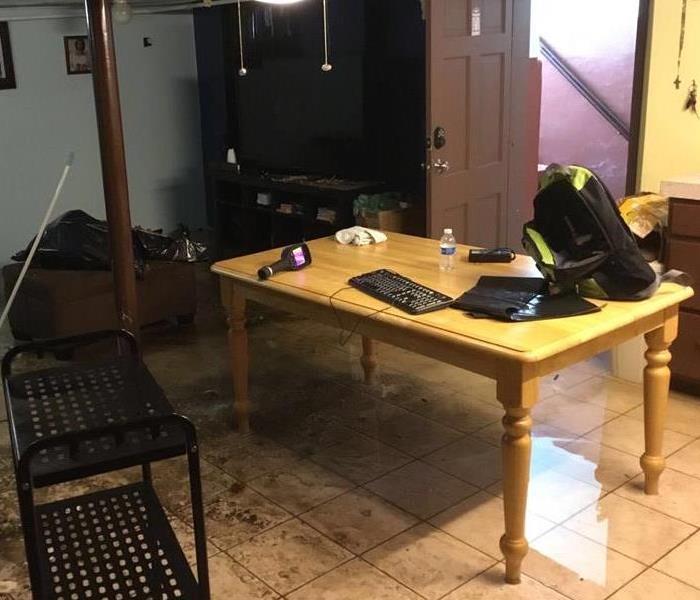 Water damage in a customer's home.
Water damage in a customer's home.
SERVPRO of Hackensack/Little Ferry is available 24 hours a day for water emergencies, large or small. When you are dealing with water damage, immediate action is crucial. A delay of just a few hours can greatly increase the severity of the water damage.
We Answer the Phone Ready to Help
Call Today - 201-742-5920
We understand that when you call us, you may be feeling confused, stressed, and vulnerable. You need an expert to guide you through this crisis. SERVPRO of Hackensack/Little Ferry has the specific water damage training and experience to help you through this tough time. We specialize in water damage restoration—in fact, it's the cornerstone of our business.
What to Expect
When you call, we will ask several questions regarding your water damage emergency. These questions will help us determine what equipment and resources to bring, including how many trained SERVPRO Professionals may be needed.
Our SERVPRO Representative will ask several questions:
· Your name and contact information
· Your insurance information (if applicable)
· The street address of the water-damaged home or business
· When did the flooding or water damage occur?
· What caused the water damage (if known)?
· Is there electricity available (on-site)?
About SERVPRO of Hackensack/Little Ferry
SERVPRO of Hackensack/Little Ferry specializes in the cleanup and restoration of residential and commercial property after a fire, smoke or water damage event. Our staff is highly trained in property damage restoration. From initial and ongoing training at SERVPRO’s corporate training facility to regular IICRC-industry certification, rest assured our staff is equipped with the knowledge to restore your property.
Restoring Your Commercial Property After A Water Damage
5/22/2020 (Permalink)
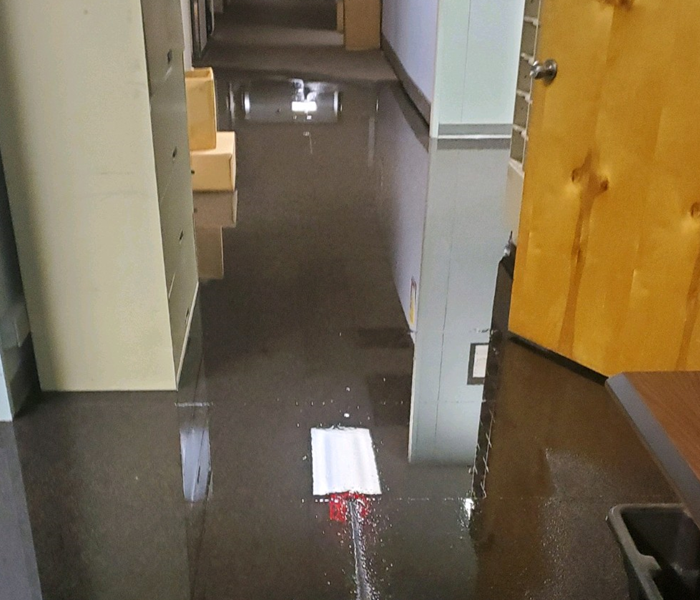 A Commercial Water Damage.
A Commercial Water Damage.
Commercial properties are often complex with numerous issues that require a knowledgeable and flexible response. Whether we’re dealing with a relatively small water cleanup scenario or a large scale event, we work quickly to assess each unique situation and isolate the damaged area. In many instances, normal operations can continue in a temporary space while we restore your facility.
Restoring Commercial Properties Presents Unique Challenges
Our professionals are trained to be mindful of legal and environmental concerns and strive to fully restore the damaged area while working within your budgetary constraints. We understand that every hour spent cleaning up is an hour of lost revenue and productivity. So when an emergency situation arises in your business, give us a call and we’ll be there fast with the help you need.
About SERVPRO of Hackensack/Little Ferry
SERVPRO of Hackensack/Little Ferry specializes in the cleanup and restoration of commercial and residential property after a water damage event. Our staff is highly trained in property damage restoration. From initial and ongoing training at SERVPRO’s corporate training facility to regular IICRC-industry certification, rest assured our staff is equipped with the knowledge to restore your property.
Be Prepared for Storm Conditions
5/22/2020 (Permalink)
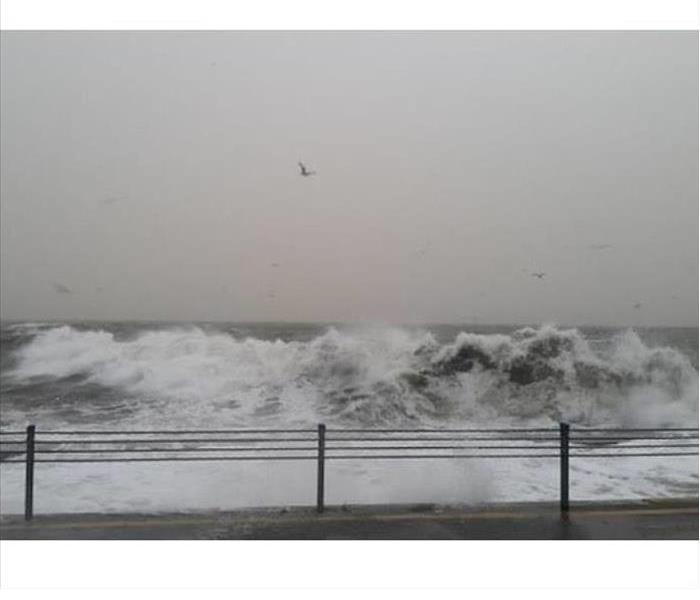 Be prepared for storm conditions
Be prepared for storm conditions
The peak potential time for hurricanes here in New Jersey runs from mid-August through the end of October. Hurricane Sandy is still on people’s minds, and each season is unpredictable as to the amount and severity of possible storms. Here at the Jersey Shore it’s especially important to be prepared for anything.
In order to protect your home, here are 5 tips that can help you prepare for and ride out a storm:
Keep Doors and Windows Protected Against Rain, High Winds, and Flying Debris
Heavy rains can cause flooding in your home. And, high winds can hurl objects at speeds so fast they can act like bullets. In other words: make sure to protect your windows and doors.
And don’t forget your garage door! Make sure your garage door is installed to be weather-proof or brace an existing door to keep it from giving way.
Remove Items from Your Yard
The more you can minimize any loose, large objects near your house, the better you can protect yourself from flying debris. Remember to secure any patio furniture or garden sculptures. Even better, try to bring everything you can indoors for the duration of the storm.
Keeping your trees pruned and removing any dead branches well before the storm begins will make a big difference in high winds.
Keep Gutters Clear So Water Can Flow
It’s a good idea to regularly clean out your gutters and downspouts and make sure nothing blocks flowing rain water or melting snow throughout the year. But, is especially important to make sure nothing is blocking your water flow before a major storm.
If the heavy rains can’t flow down and away, they could end up pooling on your roof and leaking into your attic, creating significant and costly damage to your home. So, make sure to conduct a visual inspection of your gutter and downspouts to ensure rain will flow away from your roof and home.
Make Sure You Have a Working Sump Pump and Emergency Generator
One way to ensure your basement or crawl space will stay dry during any potential flooding is to install a sump pump system. Also having an emergency generator on hand can be useful for any power loss you may experience during a major storm. You may consider installing a whole-house system, but even a small generator can keep the essentials going and help you withstand the worst of the storm’s after-effects.
Stock Up on Basic Supplies
It’s a good idea to keep on hand at least a three-day supply of basic necessities. This includes drinking water, food that doesn’t need refrigeration, a first aid kit, any prescriptions or other necessary medications, and personal hygiene items. You’ll probably also want a supply of batteries, a flashlight, and candles, just in case you end up with no electricity.
Some additional items recommended by FEMA include:
- Copies of important family documents in a waterproof container
- Sleeping bags and warm blankets
- Change of clothing
- Paper towels and plastic utensils, plates, and cups
- Books and games to pass the time.
If your home does sustain significant storm damage, it is a good idea to enlist the help of trained storm damage specialists as soon as you can. A fast response can limit the extent of the damage and significantly reduce your overall costs. Remember SERVPRO of Hackensack/Little Ferry is THE only restoration company who can handle storms like Sandy - we can rely on many of our SERVPRO franchises throughout the country to come and help.
Flash Floods a Real Spring Concern
4/9/2020 (Permalink)
The Hackensack area has had its share of flooding problems, mostly due to its proximity to the Meadowlands and several major rivers. Durng heavy spring rains, flash floods can be a real threat to the area. Flash floods can be devastating and dangerous, and oftentimes there is no warning.
Causes of Flash Floods
Flash floods typically happen when there’s a sudden storm, and the ground soil can’t absorb all the water that’s quickly streaming in.
The most common causes of flash flooding include:
- Rain for an extended time (e.g. during a tropical storm or hurricane)
- Sudden heavy rain in a short time span
- Dam failures
- Rapid thawing of snow build-up
- Overflow in man-made sewers and storm drains
It’s important to understand the difference between a flood warning and a flood watch:
- Flood Warning – a flood is expected within 30 minutes to an hour
- Flood Watch – the conditions are right for a flood, and you should continually check to see if a Flood Warning develops
If a flood warning is issued, you probably won’t have much time to take action, so it’s important to be prepared and know what to do:
- Pay attention to instructions from local authorities – there may be a mandatory evacuation or a recommended evacuation to designated shelters or areas.
- Protect your home – if there is no need to evacuate, be sure to secure your home by closing all windows and doors and staying up high away from possible flooding.
- Pay attention to water sources – if you find yourself near any bodies of water, from oceans to rivers to lakes to streams, keep a close eye on water levels and be prepared to leave if necessary. Storm drains or drainage ditches could also cause problems.
- Avoid driving and walking through flooded areas – many flood-related deaths are the result of people who are trapped in the cars or swept away by the flood waters.
Flash Flood Cleanup
Make sure to remove all the water and dry the affected area as quickly as possible. Whether you hire professional cleanup and restoration services or can manage the cleanup work yourself, the process typically involves the following steps:
- Removing all standing water
- Properly disposing damaged materials
- Quick-as-possible drying and dehumidifying
- Cleaning and disinfecting
- Rebuilding and restoring
After a flash flood, it’s important to dry the affected area as soon as possible in order to minimize the extent of the water damage. This is why many people turn to experts like SERVPRO of Hackensack/Little Ferry, as we guarantee fast, thorough cleanups with our expertly trained technicians and advanced professional-grade equipment. We’ll even help you work with your insurance.
Basics of Smoke Damage
4/6/2020 (Permalink)
Smoke damage from a fire, no matter how large or small, can be devastating. Oftentimes smoke damage can be long lasting, which is why it is so important to take care of it immediately.
Behavior of Smoke
A fire loss can be very complex because of the unique behavior of smoke. SERVPRO of Hackensack/Little Ferry undergo extensive fire restoration training and certification, and understand the behavior of smoke.
- Hot smoke migrates to cooler areas.
- Smoke migrates to upper levels of a structure.
- Smoke flows around plumbing systems, using holes around pipes to go from floor to floor.
This enables us to take care of smoke throughout the entire home or office.
Knowing how smoke penetrates and lingers is only one part of being able to mitigate smoke damage. Knowing what types of smoke will greatly affect the restoration process as well.
Types of Smoke
- Wet smoke- Plastics and Synthetics
- Low heat, smoldering, pungent odor, sticky, smeary. Smoke webs are more difficult to clean.
- Dry smoke- Paper and Wood
- Fast burning, high temperatures, dry. Powdery, non-smeary residues. Heat rises therefore the smoke rises.
- Protein Fire Residue- Produced by evaporation of material rather than from a fire.
- Virtually invisible, discolors paints and varnishes, extreme pungent odor.
- Fuel Oil Soot- Furnace Puff Backs
- While “puff backs” can create havoc for property owners, SERVPRO professionals can, in most cases, restore the contents and structure quickly.
Other smoke related services we offer are:
Content Cleaning
- Smoke and soot residues and deposits can cause permanent damage to contents and may result in periodically resurfacing odors if not properly deodorized.
- All salvageable contents in affected areas will be professionally cleaned and deodorized to preloss condition when possible. This includes area rugs, furniture, draperies, upholstery, electronics, clothing, photos, kitchen items, bedding and much more.
Deodorization
- SERVPRO provides specialized services
that rid structures of offensive odors left by fire or smoke damage. We do not merely cover up lingering odors with a fragrance, we seek out the sources of the odor and remove them. - Proper deodorization is vital as odors may appear to be gone, only to reappear months later under different conditions, including when humidity levels rise.
It is important to understand why calling us in the event of a fire, no matter how large or small. The professionals at SERVPRO Hackensack/Little Ferry will help get you back to your lives and jobs as soon as possible.
We Are Cleaning Experts
3/24/2020 (Permalink)
SERVPRO is Here to Help during this time of need
During this unprecedented time caused by the global pandemic of coronavirus, this is a reminder to our customers that we are specialists in cleaning services, and we adhere to the highest cleaning and sanitation standards.
Specialized Training
We are prepared to clean and disinfect your home or business, according to protocols set forth by the Centers for Disease Control and Prevention. We have years of experience in dealing with biological contaminants, and we will go beyond the scope of work that regular janitorial staff perform on a daily basis.
The CDC encourages cleaning of high-touch surfaces such as counters, tabletops, doorknobs, light switches, bathroom fixtures, toilets, phones, keyboards, tablets and tables. Other spaces mentioned in the CDC’s guidance for commercial spaces include:
- Kitchen/Food Areas
- Bathrooms
- Schools/Classrooms
- Offices
- Retail Spaces
- Water Fountains
- Shelving/Racks
- Sales Counters
- Carpets and Rugs
- Stair Handrails
- Elevator Cars
- Playground Equipment
- Fitness Equipment
Specialized Products
The CDC recommends usage of a labeled hospital-grade disinfectant with claims against similar pathogens to the coronavirus. Multiple products in the SERVPRO product line carry the EPA-approved emerging pathogens claims. While there is currently no product tested against this particular strain of the coronavirus, we are following all guidelines as provided by the CDC and local authorities.
Call us today for an estimate or proactive cleaning today.
Sources:
https://www.cdc.gov/coronavirus/2019-ncov/hcp/guidance-prevent-spread.html?CDC_AA_refVal=https%3A%2F%2Fwww.cdc.gov%2Fcoronavirus%2F2019-ncov%2Fguidance-prevent-spread.html
https://www.cdc.gov/coronavirus/2019-ncov/specific-groups/guidance-business-response.html
What to Dispose (and What to Keep) After Fire Damage
3/4/2020 (Permalink)
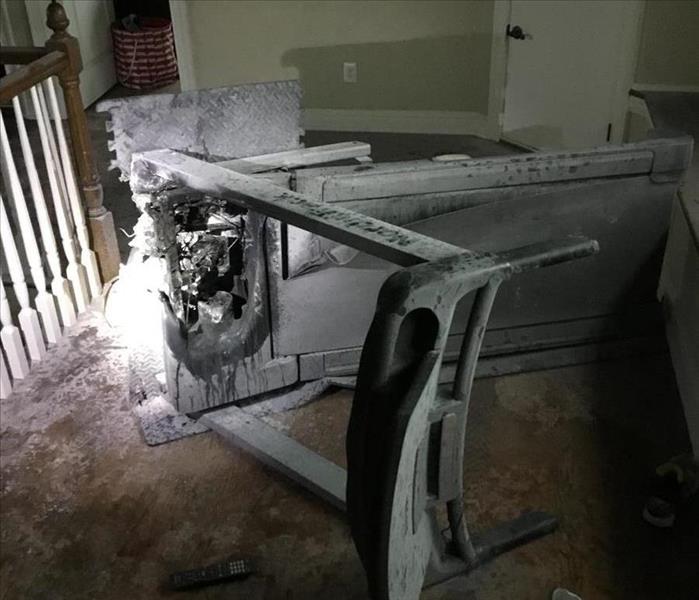 Damaged electronics such as a treadmill pictured above is an example of something that should be desposed after a fire.
Damaged electronics such as a treadmill pictured above is an example of something that should be desposed after a fire.
Fires can be devastating to a home or business, potentially damaging everything in their wake.
If your home or business suffers a fire, you should definitely throw out anything that has been melted, burned, or otherwise visibly damaged by the flames, heat, and/or smoke.
However, sometimes, it’s difficult to tell what can be salvaged and what should simply be tossed. Here is a quick guide to help you start to make decisions as you cleanup from a fire.
Four items you should definitely throw away:
Food Exposed to Fire and Heat
- Any foods that come contact with the flames, smoke, high heat, or firefighting substances (especially if the packaging was already opened).
- Foods stored in the refrigerator or freezer if the temperatures reached higher than 40 degrees Fahrenheit for longer than 2 hours.
- If smoke, soot, or fire entered the refrigerator/freezer, just stay on the safe side and toss everything.
Fabrics
- Any clothing, bedding, carpeting or other fabric that has sustained major burning should just be disposed.
- Anything charred or significantly burned.
Mattresses
Mattresses that have been stained or burned by fire should just be disposed as they may now be structurally unsafe and/or carry contaminants.
Medicine and Cosmetics
- If prescription medicines have been affected by a fire, you should contact your doctor immediately.
- It’s best to replace them as you don’t want to risk becoming sicker from potential contamination.
Three examples of items that can often be salvaged after a fire.
Hardwood
Luckily, hardwood floors can often be saved, unless there is extreme burning or charring.
You can often use an oil soap made especially for wood to clean off stains, and then sand and refinish your hardwood to restore it.
Glass
Glass, if it doesn’t melt, is often resilient to fires.
If your glass is simply stained, try cleaning it with white vinegar or dish soap. You can also try to soak it in vinegar and baking soda.
Metal
Metal may stain, but often can withstand the heat and flames.
To clean mental, use vinegar or dish soap and then try to gently sand and paint the metal.
Note: never try to keep items that may be melted, charred, or rendered structurally unsafe.
If you need help trying to salvage and/or restore your property and belongings after a fire, our team of experts here at SERVPRO Hackensack / Little Ferry is close by and ready to help! Whatever the size of your fire damage, we have the know-how, training, and tools to help you deal with it and move forward.
5 of the Most Important Winter Fire Safety Tips You Need to Know
2/26/2020 (Permalink)
These are the days of the year when we expect temperatures to remain chilly if not freezing, and it’s common for use multiple heating sources to keep your house warm. Unfortunately, that means it’s also a time when there’s a greater risk of fire damage.
Too many homes suffer from fire damage that could have been prevented with just a little foresight and planning. In order to help you keep your family safe from fire during the cold weather days, here are 5 of the most important Winter Fire Safety Tips you should act on:
Check Your Smoke Alarms
Ideally, you would have checked your smoke alarm batteries when the clocks changed. But now is the season when it might actually make a difference, so make sure that your batteries are good for the Winter.
Also, there should be smoke alarms in every bedroom plus the kitchen and laundry room at bare minimum. Make sure you have enough smoke alarms strategically placed all around your home.
Inspect Your Chimney
If you use a fireplace, you should know that they can produce creosote, which is a flammable substance.
If your family likes to light fires in the fireplace, you should get an annual chimney inspection to ensure there are no fire hazards. And remember to use dry, seasoned wood.
Always Use a Screen for Your Fireplace
Whether you prefer a metal screen or a screen of tempered glass, you want to make sure to protect against any sparks that might otherwise stray from the fireplace.
Even with a screen in place, be sure to keep curious children and pets safely away from the fireplace. Also, any potentially flammable fabrics or materials should be kept at least three feet away from a lit fire.
Maintain Your Furnace
Typically, it’s a good idea to invest in an annual inspection from a professional. They can check your system for the signs of wear and tear or potential damage that could lead to furnace problems.
Use Candles and Space Heaters with Caution
Make sure they are placed securely where they won’t get knocked over, as well as safe out of the reach of young children and pets.
And don’t forget to blow them out when you leave the room!
Similarly, with space heaters, you want to make sure to keep sufficient clear space around them (typically at least 3 feet all the way around) to prevent a potential fire hazard. Make sure the fire heater you use has an automatic shut-off switch so that its internal mechanisms won’t overheat. Make sure to turn it off before you go to sleep or move to a different room.
Here at SERVPRO of Hackensack/Little Ferry, we have a strong track record of protecting the people and properties of this community from the trauma of fire damage. We’re known not only for our reliability and expertise as a professional restoration and cleaning services provider, but people love us for our friendly customer service too.
Disaster Emergency? SERVPRO is Available 24/7
2/7/2020 (Permalink)
If you're a believer in Murphy's Law, then it is inevitable that a disaster will strike at 5:00 p.m. on a Friday, or over the weekend when the office is closed.
Because water and fire losses are so unpredictable, SERVPRO of Hackensack/Little Ferry is ALWAYS available, twenty-four hours a day, seven days a week.
Within minutes, water will quickly spread, saturating everything in its path. Water is absorbed into walls, floors, upholstery, and belongings. Within the first 24 hours drywall begins to swell and break down, metal surfaces begin to tarnish and furniture begins to swell and crack. The earlier SERVPRO can get to the scene, the faster water can be extracted from the area and the important step of drying and mitigation can begin.
Fire and smoke is especially destructive. Not only does the structure suffer physical damage, smoke and soot can creep into tiny spaces and settle there, leaving a lingering odor and settling in air ducts, furniture, clothes, and crevices. In many instances property will also suffer from water damage from firefighting efforts.
Immediate response can mean all the difference.
If you wait too long, there is the possibility of the appearance of mold and mildew, wood flooring begins to swell and warp or metal and paint being affected. The longer an area remains unmitigated, restoration time and cost increase dramatically; replacing contaminated materials and structural rebuilding may be extensive.
It also means that you will get your business back up and running much sooner the faster you call SERVPRO in.
So remember that SERVPRO of Hackensack/Little Feryy is available day or night, we are always on call, and we’re always here to help.
SERVPRO Can Help You Need to Remove Water from Your Basement
1/21/2020 (Permalink)
It’s the time of year for winter storms, which means it’s one of the prime seasons to deal with water damage. Many homeowners realize too late that basements can be one of the most common places for water damage to occur
Here at SERVPRO of Hackensack / Little Ferry we’re experts in repairing and restoring the effects of water damage. If you suddenly get hit with water damage to your basement, it’s important to know you should act quickly as possible and minimize the extent of the damage.
Before SERVPRO gets to your home and begins the restoration, there are a few things you can do before we get there.
Identify and Fix the Water Problem
The first step is to figure out and stop the source of the water. Whether it’s a burst frozen pipe or a sump pump that’s stopped working, you want to fix the problem ASAP.
One exception would be any groundwater flooding that is weather related. If you can prevent more water from seeping in, that’s great – but you may not be able to deal with that problem right away, in which case you should call for professional assistance and prioritize starting to remove as much water from the basement as you can.
Extract the Water
The quicker you can remove water from the basement, the more likely you will be able to salvage more. A wet/dry vac is often useful to quickly remove large quantities of water. If nothing else, start grabbing buckets and mops to bail out as much water as you can.
Remove Damaged Items and Materials
Unfortunately, no matter how quickly you start getting rid of the water, chances are there will be some items that are already damaged beyond repair. For example: paper goods, carpeting, carpet padding, other fabrics, and insulation often can’t survive severe water damage.
Once SERVPRO arrives, we will continue to extract whatever water remains and take care of your wet and damaged contents.
Depending on how long the water sits, and how much water there was, some drywall may need to be removed.
Dry
SERVPRO will have commercial fans and dehumidifiers to efficiently speed up the drying process. Still, it may take up to 1-3 days (or more) for everything to dry out properly.
Clean
Once everything is dry, SERVPRO will disinfect everything that’s been affected in the basement to prevent contamination from mold and bacteria.
Restore
The extent of the restoration may vary depending on the extent of the damage and may be eligible for coverage from your insurance.
If you need help dealing with water damage to your basement, our expert technicians here at SERVPRO Hackensack / Little Ferry are available to help anytime 24/7. We can help you with removing water, disposing damaged items, drying, disinfecting, and any restoration necessary to return your basement to its original condition.
Why You Should Call SERVPRO to Clean After a Fire
1/18/2020 (Permalink)
Smoke damage from a fire, no matter how large or small, can be devastating. Oftentimes smoke damage can be long lasting because the odor soaks into every surface including walls, furniture, window treatments, flooring, and wall studs.
Behavior of Smoke
A fire loss can be very complex because of the unique behavior of smoke. SERVPRO Franchise Professionals undergo extensive fire restoration training and certification, and understand the behavior of smoke.
- Hot smoke migrates to cooler areas.
- Smoke migrates to upper levels of a structure.
- Smoke flows around plumbing systems, using holes around pipes to go from floor to floor.
Knowing how smoke penetrates and lingers is only one part of being able to mitigate smoke damage. Knowing what types of smoke will greatly affect the restoration process as well. Often it looks as though you could wipe clean soot from surfaces - only to find out it smears and makes a bigger mess.
Different types of material will burn and create different types of smoke:
- Wet smoke- Plastics and Synthetics
- Dry smoke- Paper and Wood
- Protein Fire Residue- Produced by evaporation of material rather than from a fire.
- Fuel Oil Soot- Furnace Puff Backs
Because we are experts in dealing with fires, we know how to clean it professionally and completely. It is important to understand why you need to call us in the event of a fire, no matter how large or small. The professionals at SERVPRO of Hackensack/Little Ferry will help get you back to your lives and jobs as soon as possible, making it “Like it never even happened.”
How to Clean Up the Water Damage After a Burst Pipe
1/16/2020 (Permalink)
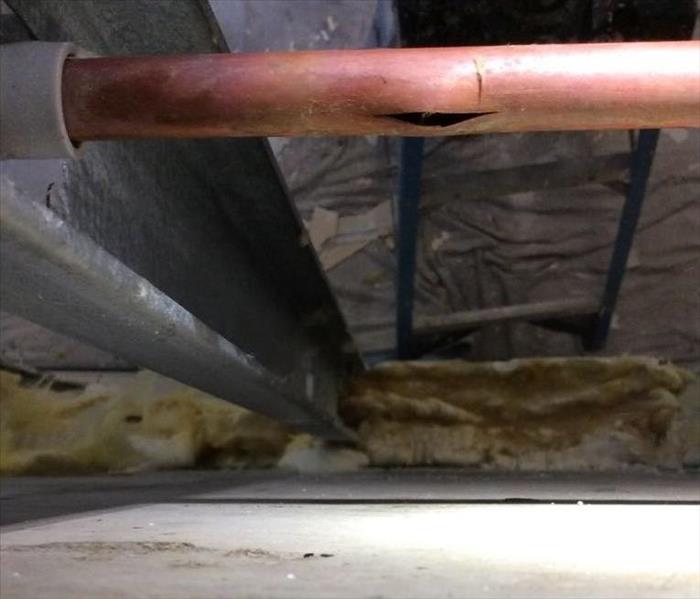 A frozen pipe like this one can send gallons of water into your home, ruining floors, walls, ceilings, and possessions.
A frozen pipe like this one can send gallons of water into your home, ruining floors, walls, ceilings, and possessions.
A burst water pipe can be disastrous. You could end up with a flooded floor and severe water damage to your costly possessions and property. It can be overwhelming.
Here at SERVPRO Hackensack / Little Ferry, we know how important it is to act fast when you’re dealing with a burst pipe. Unfortunately, the cold weather season is when burst frozen pipes are most common. So, we want to make sure you’ll be prepared.
Here’s what needs to be done to effectively clean up the water damage:
Shut Off the Water
Once your pipe bursts, water will flow continuously until you shut off the water supply. To do this, locate and turn off the main shutoff valve, typically located in a basement or utility room.
Repair the Pipe and Restore the Damage
Remove Damaged Items
Usually a plumber will come and take care of repairing the damaged pipe. This needs to be done before any restoration work can begin.
Your next step is to remove any wet and damaged items from the area. If there are any wet items you want to try to salvage, try to start drying them as quickly as possible. Damaged items should be disposed in order to prevent mold growth and contamination.
It’s also a good idea to move any additional furniture and/or any important personal items away from the affected area, just in case.
Remove Water
Extract the standing water from the area as quickly as you can.
You can start with a wet-dry vac, just be sure to keep emptying the storage tank so that it won’t overflow. SERVPRO has professional-grade equipment that will extract even what a wet-dry vac can't.
Pro tip: NEVER use a vacuum cleaner, as they are not meant to deal with water and could pose an electrical hazard.
Dry
Once as much water is removed as possible, the drying process is begun by using both fans and dehumidifiers.
SERVPRO uses commercial-grade fans, as these will dry out the area faster, which is important in order to minimize the total damage.
Pro tip: if a carpeted area got flooded, make sure to lift the carpeting off the sub-flooring in order to speed up the drying process. Unfortunately, your carpet padding will unlikely be salvageable, but at least it’s relatively inexpensive and simple to replace.
Fire Damage Hazards: What You Need to Know About Smoke and Soot Health Risks
1/15/2020 (Permalink)
If your home or commercial building has been the victim fire damage, some of the most significant health risks you need to consider come from smoke and soot. While it’s obvious that smoke and soot stains need to be cleaned up after a fire, too few people stop to consider the potential health risks.
As leading experts in fire damage restoration in this community, our team at SERVPRO of Hackensack/Little Ferry wants to make sure everyone knows the hazards – and precautionary measures – just in case your home or business is ever damaged by fire.
Here’s what you need to know about the health risks of smoke and soot:
Why Smoke and Soot Are Dangerous
Our homes and commercial building are made up of a variety of materials. While these materials are generally safe under normal conditions, a fire can cause their chemical components to change, many times releasing potentially harmful chemical compounds into the air.
In the form of smoke and soot, dangerous chemicals can quickly spread and affect the far reaches of your property. These chemicals are hazardous to inhale during a fire, and can still be hazardous days or even weeks later.
Common Toxins in Smoke and Soot
Three of the most dangerous chemical compounds after a fire are carbon monoxide, hydrogen sulfide, and hydrogen chloride:
- Carbon Monoxide – carbon is a common component of various building materials, and when carbon burns it can release carbon monoxide into the air.
- Hydrogen Sulfide – some types of building materials, for example those containing oil or coal, can release hydrogen sulfide gas into the air when burned. Exposure to this gas can irritate your respiratory system and even lead to pulmonary edema.
- Hydrogen Chloride – PVC materials when burned are known to release hydrogen chloride among other hazardous chemicals. In a gas state, hydrochloric acid can burn the mucous membranes of your lungs. In a liquid state, it can burn skin and cause permanent blindness if it comes in contact with your eyes.
Symptoms of Smoke and Soot Exposure
The most common symptoms of exposure to soot and smoke are:
- irritated eyes, lungs, and noses.
- congestion, shortness of breath, or other respiratory problems.
- headaches nausea, disorientation, and balance problems.
- skin rashes or burns if you come in direct contact with certain sooty materials.
How to Prevent Smoke and Soot Health Risks
The best way you can limit the health risks associated with soot and smoke is to make sure your fire damaged property is properly and thoroughly cleaned.
The proper clean-up process after fire damage includes sanitizing the area as well as cleaning the ducts of your heating and cooling systems.
If you’re interested to learn more about professional cleanup and restoration after a fire, SERVPRO of Hackensack/Little Ferry will be happy to answer any questions you have.
SERVPRO Is Your Trusted Partner When It Comes to Cleaning Up Biohazards at Your Business
1/13/2020 (Permalink)
When accidents happen at your business or commercial property, the effects can be severe. When the accident involves biohazards, you have to be extra cautious to make sure everything is cleaned up and restored properly.
A biohazard is defined as “a biological agent or condition that is a hazard to humans or the environment.” Some biohazards include pathogens such as MRSA or hepatitis that are known to be highly infectious. Because of the health risks, you should never attempt to cleanup biohazards on your own.
Our expert professionals have the specialized training and equipment that is necessary to properly cleanup biohazards and prevent the risk of further contamination.
While every situation is different, there are several steps that are common to most biohazard cleanups. So that you know what to expect if you’re in need of biohazard cleanup assistance at your business or commercial property, here’s a step-by-step guide:
Assessment and Establishing Safety Protocols
The process typically begins with an assessment in which we determine the extent of the risk and damage and decide on the appropriate cleanup response.
Before beginning any cleanup, you must establish proper safety protocols. Sometimes an area might need to be quarantined with bio-tape and plastic sheeting. It’s important to follow the right safety measures to prevent further contamination.
Discarding Contaminated Items
The next step is to remove any contaminated items or materials from the scene that can’t be salvaged. Items are typically secured in specialized biohazard bags before being removed from the premises.
Sanitization
Once the area has been cleared, it’s time to disinfect and deodorize the area, often done in multiple steps using several different commercial- or hospital-grade cleaners that have proven to be effective and safe for biohazard cleanup. Deodorizers are also used to keep odors from developing as time passes.
Safe Disposal of Biohazards
In order to prevent contamination, any of the items that may have been exposed to biohazards are disposed according to established government regulations and industry standard best practices.
Restoration
If restoration and/or reconstruction is necessary, this will be the final step of the process.
It’s common for walls to need to be repainted or wooden floors to need to be re-finished. Your cleanup and restoration professional will be sure to discuss any necessary restoration steps before the work begins.
If you require help with biohazard cleanup and restoration for your business or commercial property, just call our team at SERVPRO Hackenask/Little Ferry.
What can we expect for the winter of 2020?
1/6/2020 (Permalink)
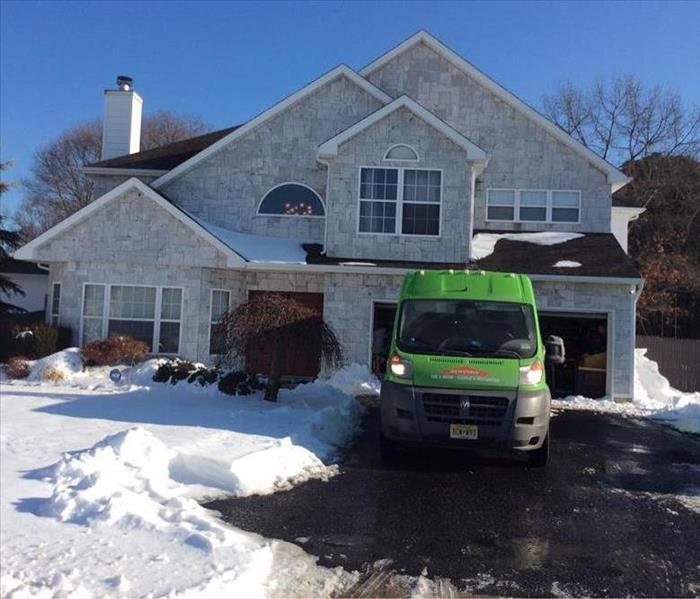 SERVPRO can come out in any weather and fix water damage from snow, ice or slush.
SERVPRO can come out in any weather and fix water damage from snow, ice or slush.
According to the The 2020 Old Farmer’s Almanac, the winter of 2020 is predicted to be a cold, snowy and wet one. While many regions will be slammed with snow (no less than SEVEN big snowstorms coast to coast!), New England weather is expected to be more rainy and cold, making ice and slush a large concern.
Your house can take a toll with all this wet weather, so make sure you take the necessary steps to winterize your home and prevent damage during severe weather.
The following precautions can be very helpful in the run-up to any winter storm or freezing condition.
Outside
- Clogged gutters should be cleared of fallen leaves and twigs to let liquid flow and not get a chance to freeze so gutters weigh down.
- Worn out roofing - If the seams and flashing on your roof are worn out, this could lead to leaking and water damage when snow starts to melt.
- Ice Dams on the Roof - ice and water repeatedly thaw and refreeze and start to form an ice dam along the edge of the roof. Ice Dams are perhaps the most common cause of winter water damage is from ice dams that form on the roof.
One of the tell-tale signs of an ice dam is a group of icicles hanging down. In order to prevent ice dams, you can add extra insulation to prevent dramatic temperature swings on your roof. Check for water stains in the wood, and make necessary repair to prevent future leaks.
It’s also a good idea to inspect your roof from both the outside and inside at least twice a year. If you notice any areas that are worn out or damaged, make repairs right away. In many situations you can fix minor gaps with roofing caulk.
Inside
- Exposed water pipes should be wrapped and insulated.
- Faucets should be turned on to allow a trickle to come through to prevent freezing and pipes bursting. This is especially true during a freeze lasting several days.
- Make sure thermostat is set to constant temperature and doesn’t dip below 55 degrees.
If you plan on leaving your house for an extended period of time, AVOID WATER DAMAGE by turning off your main water source and keep the thermostat set at sixty degrees.
Should you happen to experience ANY kind of damage this winter, call SERVPRO of Hackensack/Little Ferry and we will come make sure it looks “Like it never even happened.”
Why Calling SERVPRO Will Get You Back in Business Faster
12/29/2019 (Permalink)
According to industry research, as many as 50% of businesses may never recover following a disaster. Of the businesses that survive, the overwhelming majority of them had a preparedness plan in place.
SERVPRO of Hackensack/Little Ferry has such a plan for your business, our Emergency Ready Plan (ERP). This profile provides all the critical information needed in emergency situations, and minimizes business interruption.
The main reason to have an ERP done for your facility or home is:
- It provides a concise Profile Document that contains only the critical information needed in the event of an emergency.
- It is a guide to help you get back into your building following a disaster.
- It is an identification of the line of command for authorizing work to begin.
- It provides facility details such as shut-off valve locations, priority areas and priority contact information.
This invaluable service is offered at no cost to our customers, and leaves them with peace of mind that their home or office will be ready for whatever happens.
Disasters like water damage, fire damage or flood, no matter how big or small, can never be predicted. But you CAN prepare for them!
Call SERVPRO of Hackensack/Little Ferry to schedule your Emergency Ready Profile and rest easily in knowing that we will be faster to your disaster!
How You Can Prevent Winter Water Damage
12/27/2019 (Permalink)
Winter can be a prime time for water damage, especially during days when temperatures change, causing ice and snow to start to melt. Or - what happens if freezing temperatures cause one of your pipes to burst?
Here at SERVPRO of Hackensack/Little Ferry, we’ve seen how water damage can be especially disastrous to homes and businesses during wintertime, and we know the most common causes of winter water damage. Luckily, if you know what to look out for, you can proactively prevent many of the worst kinds of water damage.
Here are five of the most common causes of winter water damage, and what you can do to keep your property and belongings safe.
Bursting Pipes
- Sudden drop in temperatures causes a pipe to break open. Make sure your pipes are insulated.
- Small leaks that grow larger unnoticed over time. Make sure to check your pipes for signs of damage or wear and tear.
- Check that hoses and supply lines are tight to prevent slow leaks.
- Turn off water supply to outside lines during the winter.
Worn Out Chimneys
- Damage to the brickwork of your chimney could cause leaks inside the chimney itself or to your attic or basement. Check for loose mortar between the brick, and also be on the lookout for any signs of water stains.
- Your chimney liner and a cap could also allow leaks because they can wear out over time. Make sure you check them periodically.
Worn Out Caulking
Most doors and windows are sealed with caulking, which is there to prevent drafts and inclement weather from entering inside. However, as temperatures rise and fall, caulking will naturally expand and shrink and eventually wear out over time.
It’s a good idea to check your caulking for cracks and damage at least once a year, ideally before the worst of the winter weather hits.
Worn Out Roofing
If the seams and flashing on your roof are worn out, this could lead to leaking and water damage when snow starts to melt.
Ice Dams on the Roof
Perhaps the most common cause of winter water damage is from ice dams that form on the roof. Many people don’t even notice as ice and water repeatedly thaw and refreeze and start to form an ice dam along the edge of the roof.
One of the tell-tale signs of an ice dam is a group of icicles hanging down. In order to prevent ice dams, you can add extra insulation to prevent dramatic temperature swings on your roof. Check for water stains in the wood, and make necessary repair to prevent future leaks.
Keeping up on your home repairs and regular inspection of your pipes, roof, chimney and gutters will give you an advantage when the cold weather strikes. If you still need us, we are open 24/7 always available.
What to Expect With Your Commercial Loss Restoration
12/18/2019 (Permalink)
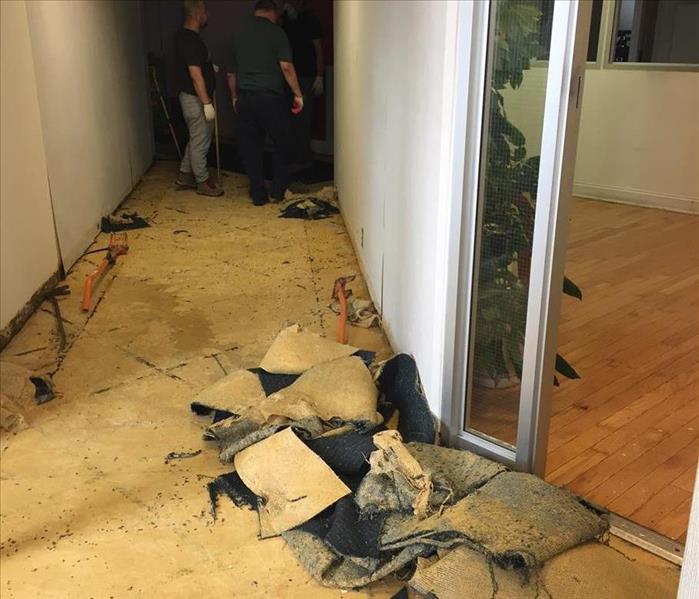 Removal of damaged carpeting and flooring begins during a water loss restoration in an office building.
Removal of damaged carpeting and flooring begins during a water loss restoration in an office building.
SERVPRO of Hackensack/Little Ferry has been the cleanup and restoration leader in New Jersey for over a decade. We’ve helped many business owners deal with the aftermath of a water or fire disaster and make sure they are up and running for business again as soon as possible. We know how important it is to be prepared so you can deal with the cleanup process ASAP and get back to serving your customers.
To help you understand what to expect from the cleanup process, here’s a step-by-step guide:
Create a Safety Zone
During any restoration process, it may be necessary to establish a safety perimeter, especially around standing equipment and removed building materials.
Remove Any Non-Salvageable Items
Our SERVPRO team of restoration professionals is committed to salvaging and repairing as much as possible.
In particular, items like carpeting or wooden furniture that can become saturated with contaminated water may not be safe to try to repair. When this happens, these non-salvageable items will be properly bagged and removed from the area for safe disposal.
Sanitize
Once the affected area has been cleared out, next it is time to clean and disinfect.
The specific cleanup process will vary depending on the nature of the accident, but in all circumstances, a commercial-grade disinfectant will be used to thoroughly sanitize the area and prevent any further issues.
Seal
Depending on the circumstances, it may be necessary to seal-up certain surfaces in order to remedy odors and stains.
It is common for drywall to need to be repaired. Other surfaces that may need sealing might include plaster, concrete, or certain wooden surfaces.
Reconstruct
Once your damaged property has been thoroughly cleaned and sealed up, it will be time to start the restoration and reconstruction process.
Maybe it’s just your floor that needs to be restored, or maybe there’s a whole section of a building that needs to be reconstructed. Whatever the size of the problem, you can rest assured that our professionals of SERVPRO will be able to handle it.
Prevent Storm Damage and Flooding
12/18/2019 (Permalink)
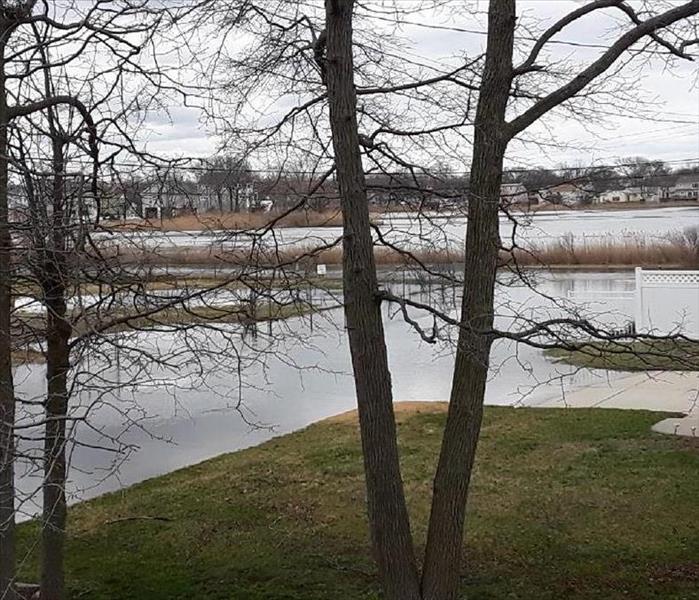 Storm surges and heavy rain can soak lawns and property, which may end up flooding your home.
Storm surges and heavy rain can soak lawns and property, which may end up flooding your home.
All homes that are located near to the Atlantic Coast have good reason to be concerned about the effects of storm damage and flooding. Although homes that are right along the coast often pay the most attention to possible flooding effects, the truth is a severe enough storm could potentially cause serious damage anywhere across New Jersey.
At SERVPRO of Hackensack / Little Ferry, we’re strong believers in taking proactive steps for prevention. We know from experience how preparation can help minimize the worst possible effects when a storm is on the horizon.
Here are 7 ways you can start to prepare now to prevent the effects of storm damage and flooding:
Make Sure Your Basement or Crawlspace is Ready
- Check your basement or crawlspace at least once a month for any signs of damage.
- Make sure items in your basement or crawlspace are stored properly.
- Use containers that are water resistant with tight lids.
- The more items you can store off the floor / ground and away from potential flooding the better.
Check Your Drains
Make sure that your drains are free of clogs, as clogging could lead to a sewage backup during a severe storm or flood.
To keep your drains clog-free, avoid dumping fats, coffee grounds, or other thick waste down sink drains. Use hair catches in your showers and tubs to help prevent hair clogs.
Maintain Your Sump Pump
If you have a sump pump, check it regularly and keep it well maintained to ensure that it will work when you need it.
Keep Up with Your Landscaping
Landscaping can hold and contain water near to your foundation, so make sure to keep bushes and trees at least three feet away from your building.
Also, make sure to trim any branches near the building that could cause damage in the case of strong winds.
Clear Downspouts and Gutters
Clean your downspouts and gutters at least twice a year to make sure that rainwater will be able to flow if there’s a major storm. You want to make sure water doesn’t collect on your roof or pool near your foundation.
Double Check Your Insurance Policy
Review your insurance policy at least once a year so that you know exactly what’s covered. If you have any questions, you want to be able to call and speak with your insurance agent well before there’s an actual problem.
Review Your Evacuation Plan
Do you have an evacuation plan that everyone in your family has agreed upon and knows?
It’s a good idea to come up with a few alternate go-to locations in opposite directions, depending on which way you may have to evacuate. Make sure everyone knows the evacuation plan in advance, just in case you lose access to your communication devices.
And remember, if you need help cleaning up or restoring your home after a storm, you can reach our expert professionals here at SERVPRO 24/7.
Don't Forget Your Plumbing
12/10/2019 (Permalink)
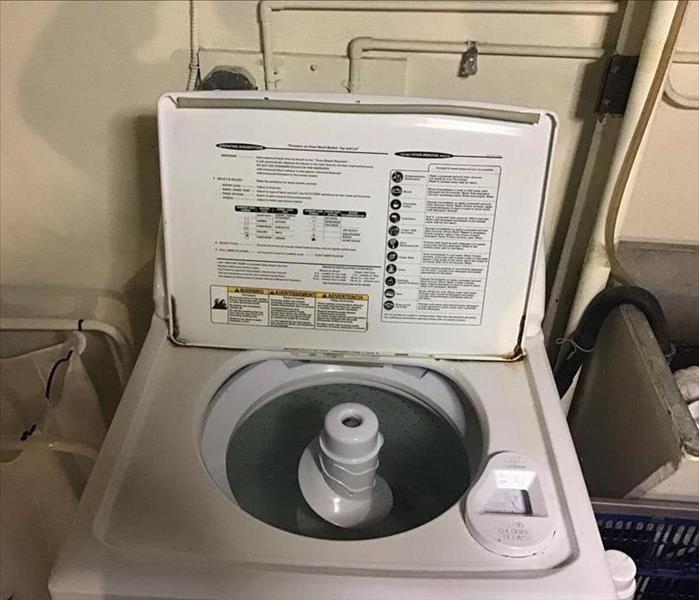 Washing machine hook-ups are a major plumbing issue, especially if the hose is broken, loose or damaged.
Washing machine hook-ups are a major plumbing issue, especially if the hose is broken, loose or damaged.
Many homeowners overlook issues that could develop into significant plumbing problems, and maybe even expensive water damage.
An easy visual inspection or simple test is often all it takes to ensure your plumbing is in good working condition and catch any problem before it becomes as major catastrophe.
Here’s a checklist of 4 common plumbing problems, and what you can do to prevent them from becoming a problem for you:
Washing Machine
Did you know that the average washing machine will use up to 40 gallons of water each cycle? With that much water pumping through, you want to be sure to check both the supply and wastewater lines about once a quarter.
Sinks
One of the biggest wear-and-tear problems for sinks are the seals and washers which will deteriorate over time.
You’ll want to check under the sink cabinets for any signs of leaking, which could include dampness, deterioration, or odors.
Toilet
When your toilet starts to wear down, it could lead to higher monthly water bills, or even potential flooding and major water damage.
In order to inspect your toilet, remove the tank lid and flush and make sure all the components (like the flush valve and flapper) are all in good working condition.
One easy way to check for a toilet leak is to add a couple drops of food coloring into the tank. After a few hours, check the bowl – if you see the dye color, then you know there’s a leak problem.
Showers & Tubs
Showers and tubs are often the most heavily used plumbing fixtures in a home, so it’s important to make sure everything is working properly.
Make sure to check faucets, drains, and shower heads on a regular basis. You’ll also want to check the seals. If caulk deteriorates, it could lead to a mold problem behind your walls.
If you see any signs of damage or corrosion, or if you decide you’d like a professional opinion, our team of experts here at SERVPRO of Hackensack/Little Ferry can help make sure you minimize any water damage. And if you do need more advanced help, know that we have all the specialized training and equipment necessary to handle even a large-scale water emergency.
Cleaning Up Biohazards at Your Business
12/10/2019 (Permalink)
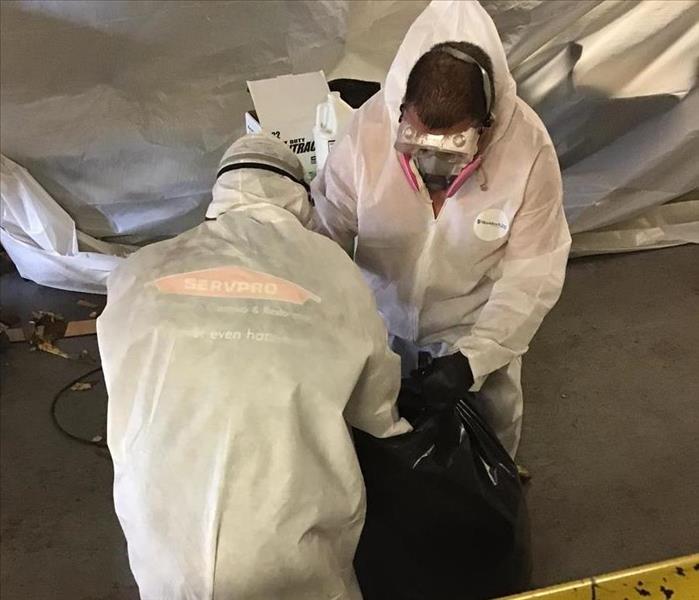 Working a biohazard cleanup means protecting the environment and yourself from potential harmful pathogens that could become a health risk.
Working a biohazard cleanup means protecting the environment and yourself from potential harmful pathogens that could become a health risk.
When accidents happen at your business or commercial property, the effects can be severe. When the accident involves biohazards, you have to be extra cautious to make sure everything is cleaned up and restored properly.
A biohazard is defined as “a biological agent or condition that is a hazard to humans or the environment.” Some biohazards include pathogens such as MRSA or hepatitis that are known to be highly infectious. Because of the health risks, you should never attempt to cleanup biohazards on your own.
While every situation is different, there are several steps that are common to most biohazard cleanups. So that you know what to expect if you’re in need of biohazard cleanup assistance at your business or commercial property, here’s a step-by-step guide:
Assessment and Establishing Safety Protocols
The process typically begins with an assessment in which the professional will determine the extent of the risk and damage and decide on the appropriate cleanup response.
Before beginning any cleanup, the professionals will establish proper safety protocols. Sometimes an area might need to be quarantined with bio-tape and plastic sheeting. It’s important to follow the right safety measures to prevent further contamination.
Discarding Contaminated Items
The next step is to remove any contaminated items or materials from the scene that can’t be salvaged. Items are typically secured in specialized biohazard bags before being removed from the premises.
Depending on the situation, it may even be necessary to remove sections of your carpeting or drywall, which is why the cleanup process frequently does involve restoration too.
Sanitization
Disinfection is often done in multiple steps using several different commercial- or hospital-grade cleaners that have proven to be effective and safe for biohazard cleanup. Deodorizers are also used to keep odors from developing as time passes.
Safe Disposal of Biohazards
After everything is disinfected, it will be time to systematically take down any quarantine structures and materials that may have been used.
In order to prevent contamination, any of the items that may have been exposed to biohazards are disposed according to established government regulations and industry standard best practices.
Restoration
If restoration and/or reconstruction is necessary, this will be the final step of the process.
Here at SERVPRO of Hackensack/Little Ferry, we’ve certainly seen our share of accidents requiring special cleanup due to biohazards. Our expert professionals have the specialized training and equipment that is necessary to properly cleanup biohazards and prevent the risk of further contamination.
If you require help with biohazard cleanup and restoration for your business or commercial property, just call our team and we will be there "Faster to any disaster."
Clean Your Home After A Fire
11/22/2019 (Permalink)
 Cleaning up after a fire can be devastating and overwhelming. SERVPRO of Hackensack/Little Ferry can help and make the process less stressful.
Cleaning up after a fire can be devastating and overwhelming. SERVPRO of Hackensack/Little Ferry can help and make the process less stressful.
If you’ve experienced fire damage in your home or business, you’ve undoubtedly observed that smoke and soot can unfortunately damage almost all kinds of surfaces and materials. CONTACT YOUR INSURANCE COMPANY, because in most cases, everything from cleaning to replacement is most likely covered.
The amount of soot and smoke may also be inundating, so calling SERVPRO of Hackensack /Little Ferry may help you feel less stressed and overwhelmed.
In the event that you want to start cleaning, begin as quickly as you can, in order to prevent the effects of long-term damage.
Smoke and Soot Stains from Wood
As long as your wooden items aren’t charred, you should be able to clean them with a mild oil soap. Rinse with water, and let them air dry.
Smoke and Soot Stains from Upholstery
If you can remove stained upholstery, your best bet is to bring it to a dry cleaner that specializes in cleaning fire damaged fabrics.
If you have upholstery that’s can’t be removed, vacuum the surface with a shop vac, keeping the hose just above the surface to prevent rubbing in the stain even more. Next, sprinkle the stain with baking soda and allow it to sit for at least one hour. Then, spray the stain with white vinegar and wipe with a damp rag.
For hard-to-clean stains, you may have to let the baking soda sit longer (sometimes overnight) and/or repeat the cleaning process multiple times.
Smoke and Soot Stains from Metal
Use a polish that is specially designed for the specific type of metal you have. Gently rub the stain with the polish and then wipe away with a clean rag, but be sure to follow the manufacturer’s instructions.
Smoke and Soot Stains from Glass
To clean glass, you can often use a commercial glass cleaner or a homemade solution of one-part water to one-part vinegar. You’ll want to avoid spraying the glass, as this can leave smoke streaks. Instead, apply the solution to the rag and start wiping at the edge of the stain moving inward.
Smoke and Soot Stains from Leather
You can clean fire damaged leather with a specialized leather soap and conditioner, though be sure not to get the leather too wet, as this can create additional stains.
If you need help to restore your property after fire damage, remember that SERVPRO of Hackensack/Little Ferry is always here to help.
Nor’easter or Hurricane?
11/19/2019 (Permalink)
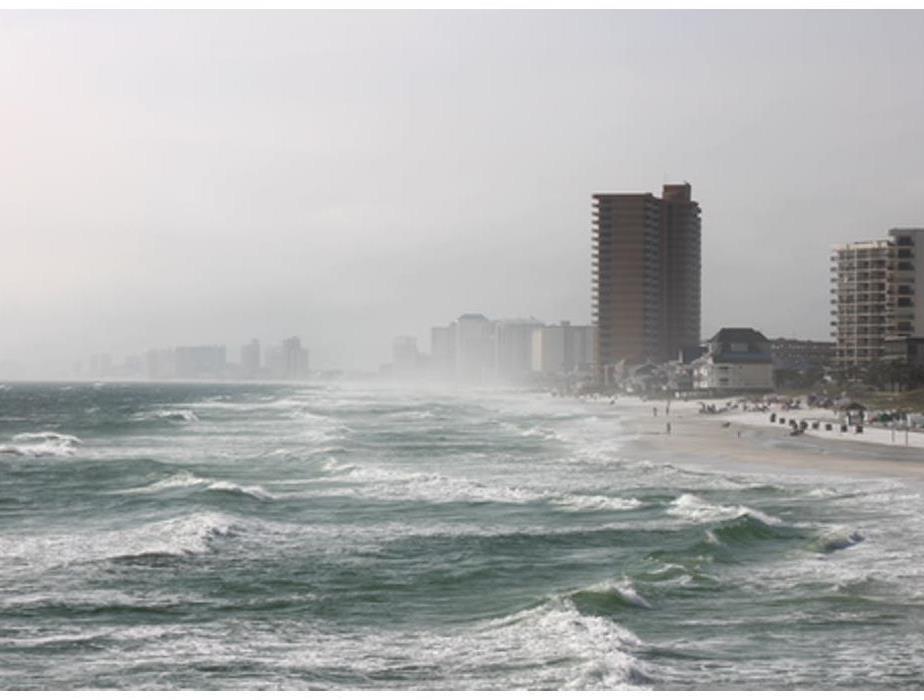 Nor'easter hits the shore, churning up water and eroding beaches.
Nor'easter hits the shore, churning up water and eroding beaches.
Living on the East Coast of the United States means dealing with many types of storms, from hurricanes to blizzards. Big on the list of storms are nor’easters.
By definition, a nor’easter is a “storm that forms along the East Coast of North America. Nor'easters are named after the direction from which the strongest winds typically blow over the northeast states, including New England and the Mid-Atlantic states. The storms can bring wind, snow, rain and flooding.”
How is a nor’easter different than a hurricane?
Nor'easters and hurricanes both form over the Atlantic Ocean. They're both also types of cyclones-a storm that has winds spiraling around a central low pressure zone.
However, while hurricanes originate over the warm waters of the tropics (near the equator) and rely on warm air to help move and strengthen them, nor'easters originate further north, near the eastern coast of the United States. Also, nor'easters thrive and pick up strength from cold air in the atmosphere, north of the Jet Stream and fueled by low-pressure systems from Canada.
Typically nor’easters are most common during the months between September and April. Because they thrive on cold air, bad weather conditions usually accompany them. These conditions usually include rain, flooding, high winds, snow and even blizzards. Sometimes the winds can be stronger than hurricane-force winds.
Hurricane season runs from June through October.
How to prepare for a nor’easter?
Winterize Your Home
- Exposed water pipes should be wrapped with newspapers or a plastic wrap, and faucets should be turned on to allow a trickle to come through to prevent freezing and pipes bursting.
- Leaking roofs need to be patched or re-freezing precipitation could widen gaps and bring in more water and cold.
- Clogged gutters should be cleared of fallen leaves and twigs to let liquid flow and not get a chance to freeze so gutters weigh down.
Stock Up on Supplies
- Canned and Non-Perishable Food: Begin buying a few canned goods before the season with each trip to the supermarket as part of your regular shopping.
- Bottled Water: You should always keep a few extra gallons of water with some designated for drinking, others for non-consumption and set aside for washing up and cleaning, and even for first aid purposes.
- Battery-Operated Devices: Keep an assortment of fresh batteries in different sizes for use in flashlights, radios, battery-operated charges and other useful equipment.
- Generators: Keeping a generator running requires diligent maintenance. Perform all necessary checks, change the oil and make sure you’re stocked with all the necessary equipment and fuel to keep it running. Store it outside of your house at a good distance, since generators emit carbon monoxide exhaust.
- Emergency & First-Aid Equipment: Keep your home first-aid kit fully stocked with fresh, clean bandages and non-expired topical applicants and gels
- Keep Your Car Storm-Ready: Things to keep in your trunk are first-aid kit; jumper cables, shovel, scrapers and brushes .You may also want to carry kitty litter or rock salt to free your car from slushy situations.
Being prepared is paramount to making it through a storm unscathed. However there are circumstances beyond anyone’s control that may affect your home which even the best preparation won’t help. In that case, SERVPRO of Hackensack/Little Ferry is your best bet to get your home back to normal after a terrible storm.
SERVPRO is THE Premier Mold Restoration Company
11/15/2019 (Permalink)
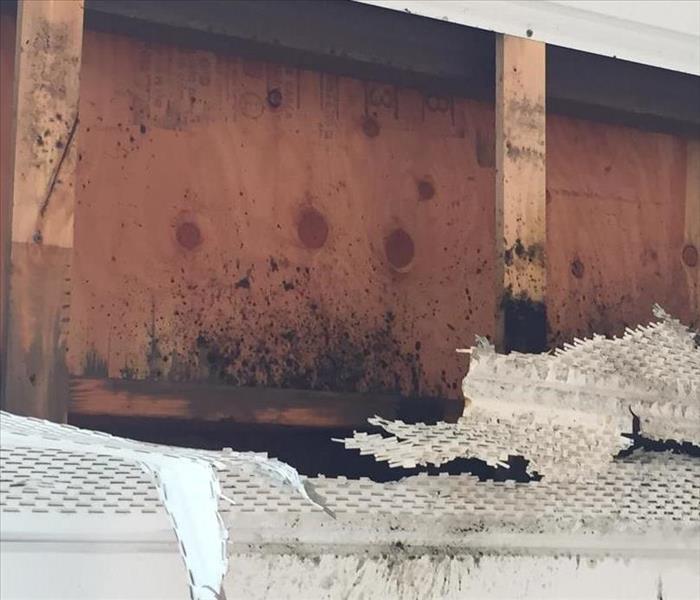 There is a chance mold can grow, hidden behind sheet rock or insulation.
There is a chance mold can grow, hidden behind sheet rock or insulation.
Most homes have basements, attics, crawl spaces or garages that provide habitats for mold. All that is needed is a dark, damp, warm environment. If you have water damage, water leaks, a leaky roof, a washing machine that overflows frequently or any other chronic water/moisture issue, mold can take a toehold and thrive.
Sometimes water damage can lurk behind walls where it is not apparent. SERVPRO professionals can use a moisture meter and infrared cameras.
If you suspect or see mold anywhere in your home, get your house tested for mold. A moisture meter test will help, and dust samples from your carpet can show whether mold spores are in your home.
Because mold is airborne, it can be tricky and dangerous to try and take of yourself. That is why it is best to call in professionals.
SERVPRO of Hackensack/Little Ferry has certified technicians who know how to encapsulate, clean and remove mold spores from your home. They use specialized equipment and cleaners to safely remediate any space, large or small.
If you DO have mold, call SERVPRO of Hackensack/Little Ferry, and our certified experts will put a remediation plan in place to get rid of it.
A Commercial Cleaning
11/8/2019 (Permalink)
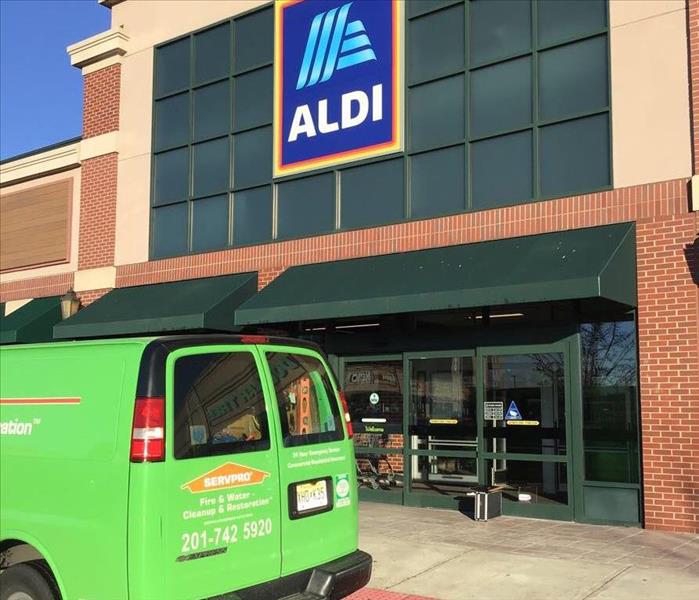 SERVPRO can clean and remediate any size commercial space.
SERVPRO can clean and remediate any size commercial space.
Cleanliness is always a key component of a professional reputation. Customers, clients, and colleagues will always respond more favorably to a well-kept, fresh atmosphere. Plus, you need to make sure your commercial property is a safe environment for all who enter. This includes being proactive about potential hazards.
To help make sure your place of business is as clean as it ought to be, here’s a commercial cleaning checklist:
- Clear out all gutters
- Inspect for and remove any mold and mildew growth
- Make sure air ducts and HVAC systems are clean and functioning properly
- Deep clean any carpets or upholstery
- Remove the accumulation of dirt, grease, and contaminants from hard floors, walls, and ceilings
Everyday wear and tear can build up overtime until the problem goes beyond the capabilities of your janitorial staff. Plus, certain challenges, like removing biohazardous contaminants, should always be left to specially trained professionals with the equipment, tools, and industrial grade products needed to restore your commercial property to business as usual.
SERVPRO of Hackensack/Little Ferry has been helping local business maintain their high standards of safety and cleanliness with a range of commercial cleaning services from cleaning restaurant hoods to removing odors to restoring damaged property.
Remember we have all the equipment and staff available for any of your commercial needs, and we're available 24/7 in case of any water or fire emergency.
How to Properly Clean Up Following a Washing Machine Flood
10/25/2019 (Permalink)
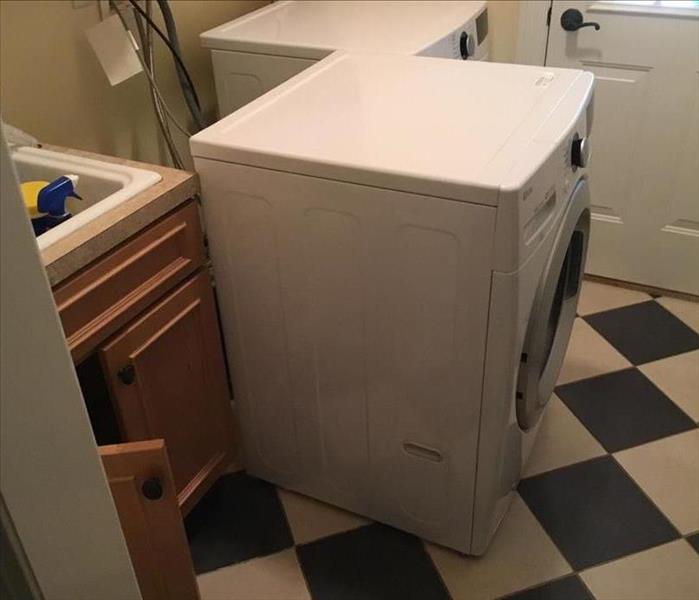 Incorrect installation of this washing machine caused a flood in a finished basement.
Incorrect installation of this washing machine caused a flood in a finished basement.
It’s easy to throw your clothes into the washing machine, set it, and forget it. Washing machines generally work so well, we can feel totally unprepared and thrown off guard if there’s a malfunction.
Unfortunately, the damage that can be caused by a broken washing machine can be severe. One load of laundry generally uses about 30 gallons of water, which is enough to fill a typical bathtub. All it takes is one broken hose or damaged seal, and you can have a huge water problem on your hands
Here at SERVPRO Hackensack / Little Ferry, we want to make sure you’re prepared to deal with a washing machine flood, so that you can minimize any long-term damage as much as possible.
Here’s your step-by-step guide for how to properly clean up after a washing machine flood:
Stop the Water at its Source and Turn Off Your Washing Machine
When your washing machine starts to malfunction, the first thing you want to do is cut off the water supply and unplug the machine.
To disconnect the water, you can either turn off the water valves to the machine, or just shut down your main water supply to stop the problem as quickly as you can.
You’ll also want to make sure your machine is fully unplugged to prevent the risk of electrical shock while you clean up the water.
Remove the Water
Next, you’ll want to remove as much water as you can.
You may need buckets, or at least a mop and towel to soak up standing water. You can also use a wet/dry vacuum to pull water up from porous materials like rugs and wood.
Dry Out the Affected Area
You want to dry out the affected area as quickly as possible.
Remove & Dry Your Clothes
Once you’ve dried the flood mess, you can turn your attention to the clothes you left in the machine.
Now is the time to remove and dry these items. You may find that there was also flooding inside the machine. If so, you’ll want to clear out any standing water and make sure the inside of your washing machine dries.
Dispose of Anything that Can’t be Salvaged
Unfortunately, some of your items may have been destroyed by the flooding.
Now is the time to dispose of items that cannot be restored
Sanitize the Affected Area
Once the affected area has been cleared out, it’s time to sanitize. A flooding problem can lead to a risk of mold growth and/or the spreading of contaminants. So, it’s important to use a disinfectant.
If you’re worried about potential mold growth, you can use a solution of one-part water to one-part bleach to sanitize the area.
Restore, Rebuild, and Replace, If Necessary
Once everything has been cleaned, it may be necessary to rebuild or restore what got damaged in the flooding.
You may need to paint the walls or install new carpeting. There may even be need to address your building structure to make sure the flood won’t have a long-term effect on the integrity and stability of your building materials.
If you need any help with clean up and/or restoration after a washing machine flood, know that SERVPRO of Hackensack/Little Ferry is here to help.
You can give us a call anytime 24/7 at: 201-441-1343.
Your Checklist to Prevent Potentially Expensive Plumbing Problems
7/29/2019 (Permalink)
How often do you think about your plumbing? It’s easy to take for granted that you can turn on a tap and water will just start flowing, no problem.
Unfortunately, many homeowners overlook issues that could develop into significant plumbing problems, and maybe even expensive water damage.
Because we know how difficult it can be to deal with a major plumbing leak, we want to make sure everybody knows about proper prevention. The good news is that an easy visual inspection or simple test is often all it takes to ensure your plumbing is in good working condition and catch any problem before it becomes as major catastrophe.
Here’s a checklist of 4 common plumbing problems, and what you can do to prevent them from becoming a problem for you:
- Washing Machine
Did you know that the average washing machine will use up to 40 gallons of water each cycle? With that much water pumping through, you want to be sure to check both the supply and wastewater lines about once a quarter.
Be on the lookout for any signs of wear-and-tear or damage – a tiny drip leak could quickly turn into a major water hassle.
- Sinks
One of the biggest wear-and-tear problems for sinks are the seals and washers which will deteriorate over time. When that happens, you may not only be dealing with wasted water but a potential mold problem too.
You’ll want to check under the sink cabinets for any signs of leaking, which could include dampness, deterioration, or odors.
- Toilet
When your toilet starts to wear down, it could lead to higher monthly water bills, or even potential flooding and major water damage.
In order to inspect your toilet, remove the tank lid and flush and make sure all the components (like the flush valve and flapper) are all in good working condition.
One easy way to check for a toilet leak is to add a couple drops of food coloring into the tank. After a few hours, check the bowl – if you see the dye color, then you know there’s a leak problem.
- Showers & Tubs
Showers and tubs are often the most heavily used plumbing fixtures in a home, so it’s important to make sure everything is working properly.
You’ll want to check all the metal components like faucets, drains, and shower heads on a regular basis. You’ll also want to check the seals. If caulk deteriorates, it could lead to a mold problem behind your walls.
If you see any signs of damage or corrosion, or if you decide you’d like a professional opinion, our team of experts here at SERVPRO Hackensack / Little Ferry can help make sure you minimize any water damage. And if you do need more advanced help, know that we have all the specialized training and equipment necessary to handle even a large-scale water emergency.
Why SERVPRO is the Company You Should Hire If You Have to Deal with Water Damage this Summer
7/15/2019 (Permalink)
Water can be disastrous to your home and property when it flows unexpectedly and/or in large quantities. And the longer it sits, the worse the water damage can get.
SERVPRO of Hackensack / Little Ferry knows from helping thousands of clients, just how hazardous water can be – as well as exactly what can be done to prevent further damage and fully restore your property. Sometimes there are minor water issues you can totally fix on your own. But sometimes the best bet for your long-term investment is to bring in professional water damage specialists, for problems big and seemingly small.
If you’re dealing with water damage this summer, here are 5 reasons why you would want to hire SERVPRO:
- Advanced Training
Our SERVPRO technicians have advanced training and even continuing education so that they are well prepared to deal with the contingencies that come up around water damage.
In training, our technicians learn best practices and focus on the skills and techniques that are needed to thoroughly dry, clean, and restore properties after water damage occurs, ensuring safety and a long-term solution.
- Professional-Grade Equipment
It’s a fact that the longer it takes to extract water and dry affected property, the less likelihood there will be to save those affected items. While you may be able to start the process with a dehumidifier and some fans, you really ought to have professional grade equipment to quickly and fully dry significant water damage.
In addition, the professionals will bring specialized testing gear, such as hydro sensors and moisture meters, which can help determine just how wet your items, floors or walls are, and what would be the most efficient drying method.
- Years of Experience
You may be handy around the house, but water extraction and proper restoration takes practice and know-how. By hiring professionals, you will be getting a guaranteed experience.
At SERVPRO, our average technician has been on the job for years and has seen multiple water damage situations, so they are able to quickly assess your particular situation and put in place the most effective plan to dry your property and minimize the extent of your damage.
- Thorough Assessment
One of the most common mistakes property owners make is to underestimate just how bad their water damage problem is.
Not all damage is easily visible. Beyond any obvious flooding, water may have seeped through tiny cracks and may have even gone through drywall or flooring.
Without all the right tools and training, you might miss the thorough extent of the damage. But professionals from SERVPRO can and will follow the water problem to the source and make sure nothing is missed.
- Complete Restoration
Fixing water damage is not just a matter of drying out the affected area. After drying, your property still needs to be properly disinfected for safety, deodorized, and often restored in order to be normal again.
Restoration can include everything from a new coat of paint to a thorough structural reconstruction. Our SERVPRO technicians are experienced in getting your property back to pre-damage conditions as efficiently and cost-effectively as possible.
If you’re dealing with water damage to your home or business, SERVPRO of Hackensack / Little Ferry is always here to help. Our team of restoration experts is available 24/7 to come help you fix any size water damage issue.
SERVPRO Can Help You Clean-Up Smoke and Soot Damage after a Fire
7/1/2019 (Permalink)
Have you been the victim of a fire? Here a SERVPRO of Hackensack / Little Ferry, we know that every fire disaster is different. Some fires produce a lot of smoke, while others involve intense flames that leave lots of soot and ash in their wake.
Whatever kind of fire damage you’re dealing with, we know that what’s most important is that your recover as much as you can as quickly as possible.
Our team at SERVPRO of Hackensack / Little Ferry approach every scenario with a “restore first” mentality – and our specialized training and equipment makes it possible for us to restore your property to its pre-fire state as well and as quickly as is possible.
Dry
If a chemical fire extinguisher or water was used to put out your fire, we will remove any standing water and dry out the affected area as quickly as possible. Sometimes, some of the worst damage in the wake of a fire is the water damage that comes from the firefighting efforts.
Vacuum
Once everything is dry, we vacuum up as much of the ash and soot. Remember that smoke often extends further than the flames, so we make sure to clean in areas nearby to where the fire hit.
Air
Once the loose ash and soot is cleaned up, we ventilate the affected area.
Clean
It’s typical for soot and smoke to settle on surfaces in the form of an oily powder. SERVPRO specializes in and has special solutions to clean this residue from your home.
If you’re ever in need of fire damage restoration assistance, you can rest assured knowing that our team here at SERVPRO of Hackensack / Little Ferry is always close by and able to help!
Are You Prepared for a Hurricane?
6/17/2019 (Permalink)
In case you may have missed it, May 5 -11, 2019 was officially National Hurricane Preparedness week, and this month begins the hurricane season, which runs through to the end of November. So NOW is the time to make sure you are prepared!
One important distinction to know is the difference between a hurricane watch and a hurricane warning:
- Watch – there is a possibility a hurricane may impact your area within 48 hours, make sure you have your supply kit, evacuation route, and emergency preparedness plan ready to go.
- Warning – a hurricane is now expected to hit hard within the next 36 hours. Prepare to evacuate and make sure your loved ones know your plans.
In order to make sure you will be prepared before hurricane season arrives, here’s what you should know:
Advance Planning Before Hurricane Season
Here’s what you can do now, before the hurricane season starts:
- Plan your evacuation route and destination. You may want to come up with several options so you can make adjustments depending on the direction of the storm.
- Pack your supplies. Extra clothes, a first aid kit, your medications, copies of your important personal documents, cash, batteries, a flashlight, a phone charger, and bottle of water are good to have on hand.
- Communicate your plans. Make sure your friends and family know your plans to minimize any confusion if disaster hits.
Safety Tips for When A Hurricane is About to Hit
When a storm is imminent:
- Move any outdoor furniture or items to a secure location and trim any trees or plants that may be dangerous.
- Make sure to stay tuned to the latest reports and be ready to leave immediately if there’s an evacuation order.
Returning After an Evacuation
After the hurricane, make sure to be safe in coming back home:
- When you first enter, don’t use electricity, machinery, or matches until you have determined there is no gas leak hazard or any other damage that may pose a risk.
- Wear protective clothing.
- Be on the lookout for wild animals or other pests who may have been displaced by the storm – they’re probably stressed too, which can make an encounter extra dangerous.
- Make sure to document any and all damage for your insurance records.
If your home or business is damaged due to a hurricane, you can at least rest assured knowing that SERVPRO of Hackensack / Little Ferry will be here to help. We have the advanced training and specialized equipment necessary to handle any hurricane restoration project large or small. We can even help you work with your insurance company.
Make Sure Your Home Is Prepared for Summer Storms
5/9/2019 (Permalink)
Summer is a time spent outdoors, enjoying time with friends and family at backyard barbecues.
Summer can also bring potentially dangerous weather conditions in the form of summer storms that can wreak havoc for homeowners. In order to minimize any damage to your home and property, here are some steps you can take now to help prepare for when the next storm hits:
Trim Large and/or Dying Trees
Some of the worst damage that can happen to a home during a major storm is the result of falling trees.
While the weather is nice, make sure to inspect all your shrubs and trees and remove any branches that has a potential to fall onto your home. If you suspect a tree is dying, you may want to consult with a tree specialist to ensure it won’t be dangerous during a major storm.
Make Sure Your Gutters are Clean
As in any season, keeping your gutters clean of leaves and debris not only helps protect your siding and landscaping, it can also help prevent costly water damage to your foundation.
Make sure to inspect where the downspout meets the gutter system as this is a spot where clogs frequently occur.
Secure Your Outdoor Furniture
If you have the space, the best option is to bring the furniture inside until after the storm has passed.
if not, make sure you have tightly secured any furniture on your patio or lawn. Consider using heavy duty chains or wires to connect your furniture to stakes. Or, try tying multiple pieces of furniture together with bungee cords so that their combined mass and weight can function like a natural anchor.
Put Together an Emergency Kit
If you’re wondering what you should have on hand in an emergency, here are the 15 minimum supplies recommended by the American Red Cross:
- Water
- Non-Perishable Food
- Flashlight
- Radio (battery-powered or hand-crank)
- Batteries
- First Aid Kit
- Medications
- Multi-Purpose Tool
- Personal Hygiene & Sanitation Items
- Copies of Personal Documents
- Cell Phones & Chargers
- Emergency & Family Contact Info
- Cash
- Blanket
- Area Maps
Know Your Evacuation Plan
Lastly, in case the storm turns out to be severe, make sure you have a safe place to take shelter. Communicate with your family and make a plan well in advance so everyone is prepared.
If your home is damaged by a storm, call the restoration professionals of SERVPRO of Hackensack/Little Ferry as soon as you can. A quick response helps to minimize and prevent further damage, reducing costs. We have the specialized expertise and equipment to help you quickly dry and restore your home to its pre-storm condition.
Be Aware of Mold in Your Commercial Space
5/7/2019 (Permalink)
Mold growth is NOT a new subject. In fact, many commercial structures end up closing their doors to business for months due to mold contamination. That is why in any large facility the importance of maintaining that facility to deter water leaks, moisture problems and poor air quality should be the main focus.
Most mold growth is discovered after we get called to remediate a water issue, and we discover it growing behind removed material such as sheet rock, sink vanities, cabinetry, etc. In many instances, the mold growth has gone undetected for months, if not years.
According to the Environmental Protection Agency, the key to mold control is moisture control. Solve moisture problems before they become mold problems.
Mold Prevention Tips
- Fix leaky plumbing and leaks in the building as soon as possible.
- Watch for condensation and wet spots.
- Prevent moisture due to condensation by increasing surface temperature or reducing the moisture level in air (humidity). To increase surface temperature, insulate or increase air circulation. To reduce the moisture level in air, repair leaks, increase ventilation (if outside air is cold and dry), or dehumidify (if outdoor air is warm and humid).
- Keep heating, ventilation and air conditioning (HVAC) drip pans clean, flowing properly and unobstructed.
- Vent moisture-generating appliances, such as dryers, to the outside where possible.
- Maintain low indoor humidity, below 60% relative humidity (RH), ideally 30-50%, if possible.
- Perform regular building/HVAC inspections and maintenance as scheduled.
- Clean and dry wet or damp spots within 48 hours.
- Don't let foundations stay wet. Provide drainage and slope the ground away from the foundation.
Potential health concerns are also an important reason to prevent mold growth and to remediate/clean up any existing indoor mold growth.
Obviously staying on top of moisture issues is the key to keeping mold under control.
Should your commercial building need mold remediation, remember that SERVPRO has specially trained technicians that can handle the job. No job is too large or small, and we are available 24/7.
Your Guide to Drying Carpeting after Flooding and/or Water Damage
5/3/2019 (Permalink)
If your home or business has been damaged by flooding or a water leak, your carpeting may be a soggy, water-logged mess. When this happens, it’s imperative to dry the carpeting quickly in order to prevent damage to your walls, sub-flooring or any other structural elements of your building. The good news is: the drying process is one you can often start on your own until the professionals get there.
Here at SERVPRO of Hackensack/Little Ferry, we know how devastating water damage can be to a home or business. As a leader in professional restoration services here in this community, we want to help make sure you mitigate any damage that may occur to your property due to a water problem.
Here’s your step-by-step guide to start drying your wet carpeting in order to prevent further damage:
Identify and Stop the Source of the Water Problem
There’s no sense in doing the work to dry out your carpeting if will just continue to get flooded. While you’re working on figuring out the cause of your water problem, see if you can find a way to at least prevent further water damage.
Remove Any Standing and/or Excess Water
Once there’s no more water coming in, your next step is to start to remove any standing or excess water.
A useful tool is a wet/dry shop vac which can be used to suck up excess water from a saturated carpet.
Separate the Soaked Carpeting from the Floor
Once you’ve removed most of the water, now you will want to separate the carpet off from the floor.
Begin along a wall, pulling away from the tack strips and moving across the room. Be careful not to use too much force in handling your carpeting, as wet carpeting is more fragile than normal and more likely to tear.
Once you’ve pulled up the carpeting, you’ll want to dispose of the carpet padding. (Carpet padding is typically inexpensive and generally easier to just replace than to try to dry out).
Dry, Dry, Dry!
Once the carpeting is separated from the flooring, it’s time to do your best to dry both completely.
It’s often useful to move the carpeting to another totally dry area. Use high-powered fans and/or blowers on both the flooring and the carpeting. Although a household fan may work in a pinch, if you can rent a professional-grade blower, the process is typically much faster and more likely to end with a positive outcome.
It is also useful to use a dehumidifier to remove the excess humidity and speed up the drying process, however typical models are not sufficient enough on their own.
Clean the Floor and Sub-Flooring
Make sure to thoroughly sanitize the subflooring to prevent mold growth and odors. Ideally, a medical grade sanitizer is best in this kind of situation, but you can also try a solution of one-part bleach to one-part water.
Bring In Professional Restoration Services
Because SERVPRO has specialized equipment that can do a job faster and more efficiently, even if you start with extraction and dehumidification, it is in your best interest to call the professionals who will do the job completely and safely.
Why SERVPRO Can Help If Your Water Bill is Too High
4/22/2019 (Permalink)
It can be normal for your water bill to fluctuate from month to month. You may be watering your lawn more in the spring or summer, just filled up your swimming pool or added a new pet to your family. As long as you know why your water bill is higher, there probably isn’t a problem. However, sometimes you may notice an unexpected increase…and that could be a sign of water damage
Here at SERVPRO of Hackensack/Little Ferry we know how disastrous water damage can be to a home or business.
To help you prevent severe water damage to your property, here are 4 common kinds of leaks to look out for that may be causing your water bill to be too high:
Leaking Faucets
A leaky faucet may just release a few drops of water, but if you wind up with a severe leak you could be wasting as much as 20 gallons of water every day. That’s why it’s important to check each faucet to make sure there are no visible signs of a leak.
One way to check is by placing an empty cup underneath the faucet and making sure no water collects. You’ll also want to take a look at the piping in the cabinets underneath the sink, and don’t forget to check your outside hoses and water sources as well!
Leaking Pipes
Plumbing leaks can sometimes be difficult to detect as many of your pipes may be hidden behind walls or above the ceiling. Still, you can at least make sure to check all the visible fittings and fixtures for any signs of damage or leaking, as well as pay attention to the ceiling and walls.
Leaking Toilets
A continuously running toilet can waste as much as 200 gallons of water every day and cause your water bill to soar.
One easy way to check if you have a leak is to dispense a few drops of food dye into the tank of your toilet. If you see the color start to come into the bowl, that’s a sign of a potentially bad leak.
Purification Systems / Water Softeners
If you use a water softener or purification system, that could be the cause of your bill increase. These systems tend to produce more waste water than other plumbing systems.
If you water bill is suddenly high, you want to make sure that these systems are working correctly and not producing excessive water waste.
However, if there is a problem with a leak, you want to find it quickly before the problem turns into major water damage.
Here at SERVPRO of Hackensack/Little Ferry, we can be there quickly to help you if you do have water damage. Our local team is made up of the best advanced technicians with the training and equipment needed to handle any size disaster.
5 Things To Do Immediately After Storm Damage
4/9/2019 (Permalink)
Storm damage can happen any time of year, but during the winter, the effects of storm damage can be particularly brutal. Heavy snow and ice can lead to roof damage that might ruin the structural integrity of your home and cause leaking. Strong, bitter winds might cause fragile trees to collapse.
Here at SERVPRO of Hackensack / Little Ferry we’re committed to help keep this community safe. We understand how challenging it can be to deal with storm damage. As a leader in the restoration industry, we’ve been helping homes and businesses in this area for over 10 years. We have the advanced training and equipment needed to get your life back to normal as quickly as possible.
When you’re dealing with storm damage, it’s important to act quickly to minimize problems. Here are 5 things you should do immediately in the wake of storm damage:
Stay safe!
Winter storms can quickly create hazardous conditions, such as collapsing roofs or damage to your windows and/or walls. Leaking can cause water damage that can ruin carpeting, furniture, and building materials, leading to an environment full of potential dangers.
While it can be tempting to want to rush in and save what you can – don’t forget that your first priority is to stay safe!
Be sure to shut off the main gas line if you smell gas, and be on the lookout for slippery surfaces, exposed nails, broken glass, and other possible hazards. If you decide to enter the affected area, you’ll probably want to wear protective clothing and slip-resistant shoes. Depending on the extent of the damage, it may even be necessary to arrange an alternate place to be while your property is being restored.
Call Your Insurance Provider
Contact your insurance provider as soon as you can to notify them of the damage. Your insurance company will send an adjustor to check on the state of the damage and determine payments for repairs.
Here at SERVPRO we’ll even work with your insurance provider to help you process the claim. Just let us know when you call!
Take Photos
If it is safe to move around or near the affected area, try to photograph the damage so that you have an additional record of evidence for your insurance company. This can help make sure you will be fully compensated.
Check if You Qualify for Federal Disaster Assistance
Depending on the severity of the storm, the federal government may have declared your property to qualify for disaster relief assistance. You may be eligible for aid or a low-cost loan for restorations
Restore
When a severe storm hits, it’s a good idea to call for professional restoration services as quickly as you can.
Your restoration services will begin with the basic tasks of inspecting your property and securing it to make sure it is safe. The damaged area will then be thoroughly cleaned and sanitized and restored as soon as possible so you can hurry up and get back to normal life.
Smart Home Devices Prevent Fire Damage
4/8/2019 (Permalink)
If you’re a cautious homeowner, you want to take smart measures to prevent fire damage to your home. In the 21st century, there are new Smart technologies for your home that can make these preventative measures easier than ever to manage.
SERVPRO of Hackensack / Little Ferry is committed to helping homeowners in this community keep their homes and properties safe. That’s why we love these kinds of technological advances that you can hook up to your WiFi network and smartphone to keep you and your family safe. If these devices detect something dangerous, you can get alerted right away so that you can hopefully take care of the issue before it becomes a major disaster
Here smart home devices that can help you prevent fire damage to your home and property:
Smart Fire Detectors and Smart Smoke Alarms
You can set up these cutting-edge fire detectors so that they will automatically send an alert to your smartphone if the temperature reaches a certain point or if there’s a sudden rapid rise in temperature. These devices can even be connected to your centralized security system for greater precision and control.
You can also get Smart alarms that detect smoke or carbon monoxide. Some of these devices will even shut down your HVAC system if smoke is detected to prevent further complications. If you connect these devices with a Smart security system, they can also automatically alert the fire department in case of emergency, no need for anyone to have to dial 9-1-1.
Smart Electrical Outlets
These are outlets that you can turn off remotely using an app on your smartphone. This can be good protection in case you’re worried you forgot to shut off lights or appliances.
Some of these outlets can even be controlled by voice commands when you are home, so that you can turn off electricity even from another room.
Smart Batteries
If you’re the kind of person who has a tendency to forget to change the batteries in your smoke alarms, you may want to invest in Smart batteries.
Most of these batteries are compatible with multiple kinds of alarms and detectors, and they will send you an alert when the battery gets low.
Smart Kitchen Shut-Off Devices
Kitchen fires are a leading cause of fire damage to homes. These Smart devices can help prevent such fires by automatically turning off the oven or stovetop.
These Smart devices are typically motion sensors that are installed to a kitchen cabinet. If you leave the kitchen, the device will start a timer, and if you don’t return before the timer counts down, the device will automatically shut off your oven.
All this 21-st century tech can go a long way to helping you keep your home and family safe. If, however, you do experience water or fire damage, know that SERVPRO of Hackensack / Little Ferry is always here to help. We have all the advanced equipment, training, and knowledge needed to restore your property ASAP.
Why SERVPRO Can Help You Prevent Fire Damage this Spring
4/1/2019 (Permalink)
Many people know that Fall and Winter are the most common seasons to experience fire damage, with the hazards posed by candles, fire places, wood burning stoves, etc. So, now that Spring is finally here, it’s tempting to want to let your guard down. Unfortunately, this can sometimes lead to disaster.
Here at SERVPRO of Hackensack / Little Ferry we know that fire prevention safety is a year-round requirement. We pride ourselves on bring fire prevention leaders in this community, so we want to remind you that fire damage can happen any time, sometimes when you least expect it.
Here are 4 household items that you may be using this Spring that have been known to start fires and create significant smoke or fire damage:
- Electronic Chargers
Just make sure you use your chargers correctly! You can help prevent fire damage by:
- Not plugging multiple chargers into one outlet – this helps prevent overload.
- Always using the correct charger for each electronic device.
- Always following the manufacturer’s instructions when charging.
- Removing the device from the charger once it’s fully charged.
- Unplugging your chargers when they’re not in use.
- Hoverboards
Some hoverboard models have been known to suffer from battery explosions due to lithium-ion batteries that have a potential to overheat. In order to keep your hoverboard safe, you want to make sure to charge it properly, following the charging advice suggested above. Always make sure to follow the manufacturer’s instructions when using your hoverboard.
- E-Cigarettes
If you’re trying to break an unhealthy addiction to smoking, e-cigarettes may be an important tool to help you stay nicotine-free. As the weather gets warmer, you may want to stay outdoors longer with your e-cigarettes – just make sure to stay fire safe!
E-cigarette fires are often the result of battery problems – make sure you only use the batteries and charger that have been designed for your e-cigarette model. In addition, it’s recommended to only use the designated accessories, as accessories from other manufacturers may not actually be compatible with your model.
- Electrical Outlets
Make sure that you use your electrical outlets properly and avoid overheating, especially as the temperature of the surrounding environment rises. You can help prevent fire damage by:
- Making sure not to overload your electrical outlets, including paying attention to how much you load any given extension cord.
- Looking for any frayed or damaged electrical cords, which should be replaced.
- Not using any electrical outlets that may be damaged.
These tips and suggestions can help you keep you and your family safe from fire damage this Spring. And, if an unfortunate accident should occur, know that SERVPRO of Hackensack / Little Ferry is always available to help with any fire damage issue large or small. We have all the advanced training and equipment needed to help restore your home to normal as quickly as possible.
How We Can Help After a Fire
2/27/2019 (Permalink)
Having a fire in your home is a devastating and traumatic experience. No matter how small, soot, smoke and ash can creep into every crevice of your home, leaving a fine film over surfaces, ash everywhere and a lingering odor. It is easy to feel overwhelmed and not know where to turn to or whom to ask for help.
Having a fire in a structure next to your home can be just as devastating, as fire may destroy siding, smoke and ash may enter your home and water used to put out the fire next door can also affect rooms in your home as well. It can be just as traumatic not knowing what to do or whom to turn to.
SERVPRO of Hackensack/Little Ferry is here to help. We have certified, experienced and professional technicians who will come to clean and deodorize – finding every place soot and odor can hide. We are also experts in content cleaning like furniture and have services that can clean documents, photos, artwork, rugs and window treatments. We can tarp your home where damage has occurred or board up windows and doors if needed.
Whether you experience a fire in your home or are affected by one next to you, remember that SERVPRO is here to help, and truly can make it “Like it never even happened.”
How to Prevent Water Damage: Everyday Tips and DIY Tricks
2/26/2019 (Permalink)
Water damage can be unpredictable. However, there are steps you can take to help prevent it. In fact, it can be quite easy to make sure your plumbing and HVAC systems are in good working order.
Here at SERVPRO of Hackensack/Little Ferry, we’re proud to be leaders in cleaning and restoration services here in this community. Our team of advanced technicians has all the specialized knowledge, training, and equipment necessary to handle any size disaster. But rather than cleanup after a disaster, we’d like to help you prevent major damage from occurring in the first place.
Here are some ways you can prevent water damage on a day-today basis, both when you’re at home and traveling away for an extended period:
Everyday Water Damage Prevention Tips
If you’re careful about what goes down your drains, you can help prevent cracks and damage to your pipes that might otherwise lead to leaks and water problems.
- Be careful what goes down your toilet. It’s a good idea to flush only human waste and toilet paper. Note: even “flushable” wipes can clog toilet drains, especially in bulk.
- Make sure not to pour grease or coffee grounds down drains as these can clog pipes and sewer lines.
- If you have a drain clog, try using a drain snake rather than a chemical cleaner as a snake is typically both more effective and less hazardous.
DIY Water Damage Preventative Maintenance
Here are some easy DIY steps you can take to inspect and maintain your water supply. If you do notice signs of wear and tear or incorrect operations, be sure to call professional services soon before a small problem turns into a major home disaster.
- Clean your gutters regularly and be sure to check them after heavy storms to make sure water is flowing properly.
- Once a year, make sure to visually inspect your plumbing - including any toilets, sinks, tubs, washing machines, or dishwashers – and look for any signs of damage or leaking.
- Flush your sinks with baking soda and vinegar to help prevent clogs. You can use lemon juice to eliminate any odors.
- Consider investing in a sump pump in case of flooding and be sure to check it regularly to make sure it is in good working order.
- Pay attention to your water bill each month. An unexpected increase may indicate that water is leaking somewhere.
Water Damage Prevention When Traveling
If you’ll be traveling away on vacation, here are steps you can take before you leave to help prevent any water problems while you’re away.
- Adjust your HVAC settings to a lower setting while your away to prevent pipes from freezing during cold weather.
- Consider turning off your water supply and draining your pipes.
- Ask a neighbor to check on your house every few days to make sure there aren’t any developing problems.
While it’s not always possible to prevent water damage, these tips can help minimize your chances of having to deal with a major water-related emergency. And if something should happen, know that SERVPRO of Hackensack/Little Ferry is available 24/7 to help deal with any size water damage problem, large or small.
Keep Your Business Safe From Winter Storms
2/7/2019 (Permalink)
If you own a business that is in a high-risk area for flooding, make sure you are prepared before any storm to keep your business afloat afterward.
Prepare by making sure you locate any important documents and valuables and store them in a location that will be dry and secure.
Check your gutters and spouts to ensure they won’t be clogged when the storm hits, and make sure to have a working sump pump.
If possible, move any electronics or other costly items to a higher floor or at least try to raise them several feet off the floor to minimize any flood damage.
If your business facility floods, your first responsibility is to keep people safe.
Make sure to turn off electricity in any affected areas. Even if there’s a power outage, the power may be suddenly restored without notice and could cause a shock hazard. If you choose to enter a damaged building, be cautious of any structural compromises or falling debris. Keep out of the floodwater as much as possible to reduce the risk of slip-and-fall hazards and bacterial contamination. Be sure to wear protective clothing – including slip-resistant shoes, gloves, eye protection, and a mask – in order to minimize potential risks.
Clean-Up ASAP
When flooding occurs, the quicker you can start your cleaning and restoration efforts, the better your chances of minimizing long-term damage and costs.
Reconstruction can’t happen until the flood-damaged area has been thoroughly disinfected and dried.
Be aware that although surfaces may feel dry to the touch, that doesn’t mean they are thoroughly dried. If you are able to remove any wet items from the flood-affected area of your business, make sure they dry completely before you bring them back to where they belong.
One thing you can do right away is to encourage drying and control the spread of mold by opening windows and doors to allow for maximum air circulation. If it is safe to do so, you may want to run an air conditioner, fan, or dehumidifier to facilitate greater air flow.
When it comes to flood clean-up, you want to make sure you are thorough.
Anything porous that gets soaked – like carpet, insulation, or molding – may be beyond salvaging. If so, these items will need to be thrown away to prevent risk of disease from contamination. Items that can be saved will need to be disinfected and washed in the hottest possible water the item can tolerate. Sometimes pressure washing and professional cleaning are the only ways to ensure your items will be safe.
If your business suffer flood damage and requires professional cleaning and restoration, you can rest assured that SERVPRO of Hackensack/Little Ferry has technicians with advanced training, skills, and equipment necessary to clean and restore your business to its pre-flood condition as quickly as possible.
How to Prevent Mold in the First Place
2/6/2019 (Permalink)
Here are a handful of easy tips to help prevent mold from growing:
- Keep humidity levels below 50% at all times.
- Rooms that get damp, like bathrooms and kitchens, should have ventilation, including an exhaust system, to keep humidity down. Also, don’t use carpeting in these areas.
- Make sure to clean bathrooms and kitchens with cleaning products that kill of mold.
- During humid weather, make sure to use an air conditioner or dehumidifier.
- Consider using mold inhibitors that be added to paints.
According to the Center for Disease Control, you should not attempt to clean-up mold that is more than 10 square feet in size.
If your mold problem is small, in many cases it can be cleaned from hard, non-porous surfaces using soap and water or a mixture of one cup bleach to one cup water. Make sure to open doors and windows to provide air ventilation and be sure to wear protective gloves and eyewear.
Note: it is important to both clean and dry the area thoroughly as allergic reactions to dead mold are possible, and you want to make sure to remove the entire source of the moisture.
If mold is problem or if you have any questions or doubts, your best bet is to call a professional like SERVPRO of Hackensack/Little Ferry. We can start the remediation process as soon as you contact us, and our specially trained mold damaged specialists can quickly get your home or business back to normal with the training and expertise required to effectively handle your restoration needs.
Telltale Signs of of Mold and Where to Look for Them
1/31/2019 (Permalink)
Mold growth depends on certain conditions for growth such as poor ventilation, moisture and air temperature. Every home has areas that have the potential for mold growth, so it is important to know where to look and what to look for.
Look for:
- Discoloration on walls, carpets and floors
- Visible mild growth – black, white, red, orange, yellow, blue, violet, etc.
- Noticeable muster and/or dirt odor
Places to inspect for mold growth:
- Under and behind sinks and vanities
- Behind washing equipment
- Under and behind refrigeration units
- Under dishwashers
- Behind toilets
- Behind and below water heaters
- Around tubs and showers
- Around doors and windows
- Around basement perimeters
- In crawl spaces
- Above ceiling tiles
- Around the outside hose bib
- Inside access panels to whirlpool tubs
If you DO find any mold in your home, it is always best to call a professional to take care and remediate the issue. Mold spores are easily dispersed if incorrectly disturbed and most household cleaners won’t sufficiently take care of the problem.
SERVPRO of Hackensack/Little Ferry is always available to help home and business owners take care of water, mold and fire disasters quickly and thoroughly.
Why SERVPRO is the Company to Call for Flooded Basements
1/30/2019 (Permalink)
A basement can flood at any time - during heavy rainfall, from frozen ice dams, broken water heaters or sump pump failure. Basements are inherently prone to flooding because they are the lowest level of a building and are normally built partly or entirely below ground level. Most people have their water heaters there. There are a myriad of issues that can go wrong including, but not limited to:
- A blocked or failed sewer lateral pipe
- Heavy rain causing surface water to pool around your home
- Storm or sanitary sewer backup
- Foundation drainage failure
- Water supply-line break
- Hot-water tank or sump pump failure
SERVPRO of Hackensack/Little Ferry is always available, any time of day or night, weekends and holidays. You never have to worry when you call us, we will be there and make your home "Like it never even happened" quickly, thoroughly and professionally.
The Danger of Fire Damage During the Winter Season
1/29/2019 (Permalink)
More fires occur during the winter months than any other time of the year. During the cold weather season, people tend to find extra ways to keep warm. Unfortunately, many alternative heating methods can also be fire hazards, especially when caution is not used.
To prevent fire damage during this cold weather season, here are 4 things to keep in mind:
Fireplaces and Wood Burning Stoves
Here are some precautions you can take to keep your fireplace or wood burning stove safe:
- Shield the fireplace with a grate to prevent flying sparks from igniting in the room.
- Keep any flammable materials at least 4 feet away from the fire place.
- Perform regular maintenance and cleaning on your fireplace and/or wood burning stove.
- Make sure there are no cracks in your chimney and that the top is properly capped to keep out debris throughout the year.
Space Heaters
Here are some general rules to follow for safe space heater use:
- Use only space heaters with a “tip switch,” ones that shut off automatically if tipped over.
- Make sure to follow the manufacturer’s safety instructions.
- Keep the space heater at least 3 feet away from anything flammable.
- Make sure there is adequate ventilation and base/floor support in the areas where you will use a space heater.
Electric Blankets
Here’s what you need to know about electric blanket safety:
- Check for charred or frayed cords or any dark spots, these may indicate a potential problem with the electrical element.
- Don’t allow anyone or anything on top of the blanket when it is in use, this could lead to overheating.
- Similarly, don’t fold or tuck in the blanket when it is in use, as this could also lead to overheating.
- An electric blanket should never be left unattended or used while one is sleeping.
Smoke Alarms
It’s generally a good idea to regularly check the alarms each year. It’s also wise to double-check the alarms before you start a fire or use a heating element, just in case.
Here at SERVPRO of Hackensack/Little Ferry we pride ourselves in being community leaders in both fire prevention and fire damage restoration. Our company is not only locally owned and operated, we’re also part of a nation-wide network of franchises with specialized Disaster Recovery Teams that handle fire catastrophes. We know how devastating a fire can be – and, unfortunately, the tips for prevention are often not talked about as much as they should be. We want to help change that.
4 Mold Myths that Too Many People Believe Are True
1/21/2019 (Permalink)
Many people think they know everything they need to know about mold. It is true that mold can be a serious problem. But with the right information and a little common sense, you can learn to separate the myths and make smart decisions about any mold in your home.
Here are 4 mold myths that simply aren’t true:
Myth 1.) “All Mold is Dangerous and Unhealthy”
In fact, some kinds of mold make human life better. Just think of the life saving benefits of penicillin or the delicious taste of bleu cheese on a salad. These all come from mold.
While it’s true that some molds do cause health problems, the effects of mold on people can vary dramatically from person to person. Some molds produce allergens that can make life miserable for people sensitive to this allergy, and people with compromised immune systems are also often at greater risk to become sick from repeated mold exposure.
Myth 2.) “Bleach Kills All Mold Growth”
Many people when they discover mold in their homes immediately reach for the bleach and assume this will solve the problem. Unfortunately, this is not always the case.
Bleach may kill certain kinds of mold growth, especially on non-porous surfaces. But bleach has not been proven to be effective on all kinds of mold, and it frequently doesn’t work so well on porous materials such as wood.
In addition, the amount of bleach that may be needed to clean-up a mold problem may in turn pose its own health risks.
Myth 3.) “If There’s Just a Little Mold, You Don’t Have to Worry”
Many people believe that if they see jut a little mold, they don’t have to worry about it. Unfortunately, sometimes a little mold is a big problem.
While it is true that mild mold growth may not cause any problems, what you see may not in fact be merely mild growth. Mold can be like an iceberg where what is visible is only the tip of major growth lurking beneath the surface.
Often times, the first visible signs of mold are just a signal that you have a major mold issue that needs to be remedied.
Myth 4.) “You Can Clean-Up Mold Yourself with Home Remedies”
According to the EPA, if your mold problem is “less than about 10 square feet (less than roughly a 3 ft. by 3 ft. patch), in most cases, you can handle the job yourself.” However, as was just discussed, many times the mold you see is just the surface of a larger underlying problem.
If you even suspect that your mold problem may be larger than 10 square feet, or you’ve been experiencing health symptoms that may be related to mold exposure, you should bring in a professional mold remediation service provider as soon as you can.
SERVPRO of Hackensack/Little Ferry has the training and equipment necessary to thoroughly inspect and address any mold issues you may encounter. We’ve helped many homes and businesses in the community with mold problems both large and small, including providing 24/7 emergency services.
Winter Storm Protection Checklist – 5 Tips to Keep Your Home Safe
1/21/2019 (Permalink)
This past weekend saw Winter Storm Harper, which affected some area in all 48 states. When a major winter storm is in the forecast, do you know what you can do make sure your home stays safe?
Here at SERVPRO of Hackensack / Little Ferry we want to help homeowners keep their families and property safe when a winter storm hits, so here’s a quick checklist to help you protect your home:
Prevent Ice Dams on Your House.
Ice dams happen when heat from your home causes water to melt in the middle of your roof and then this water re-freezes at the edges, creating a dam that can cause roof leaks and damage to your walls and ceiling.
If you notice icicles forming from your roof, this may be a sign of a developing ice dam.
Keep the Outside of Your House Protected.
Check your gutters and make sure your downspouts are clear so that water can flow. Trim any branches close to the house that may freeze, snap, and damage your house or power lines. Seal up any drafty windows or doors to keep your home warm.
Don’t Let Snow Accumulate on the Roof.
Too much heavy snow piled up on your roof could cause your roof to collapse.
This can be particularly problematic on flat roofs, which are typically built over porches or housing additions. If necessary, consider getting a roof rake which will come with a long handle so you can clear some of the snow from the roof while standing on the ground.
Make Sure Your Pipes Don’t Freeze.
Some of the worst winter water damage is caused by frozen pipes that burst.
Make sure to check on the pipes in your attic, crawl space, basement, and behind cabinets, as these are most likely to freeze. Consider wrapping them in insulation or opening the cabinets so that warm air can circulate. In addition, try letting some water slowly drip from your faucets in order to keep water flowing.
Have an Emergency Kit and a Generator Ready.
Make sure you have an emergency kit with flashlights, extra batteries, a first aid kit, warm clothes, and a stock of food, water, and daily medications. You may also want to keep some extra cash on hand, just in case.
With this simple checklist, you can help make sure your home stays safe throughout the winter season. If the storm does cause damage to your property, you can call SERVPRO Hackensack / Little Ferry for help. We have the advanced skills and equipment needed to get your home back to normal ASAP. We pride ourselves on being “faster to any disaster,” and you can reach out to us anytime 24/7.
Frozen Pipe Damage is SERVPRO's Speciaty
1/18/2019 (Permalink)
Winter is always a time when the weather can wreak havoc on your home or business. Wind, rain, snow and single digit temperatures will affect roofs,gutters and pipes.
Leaking roofs from heavy snow and ice damns are always a possibility, burst frozen pipes can be any property owner’s worst winter nightmare.
Even a small amount of leaking water can cause significant water damage in just a short period of time.
If your home or business has been unfortunate enough to have burst frozen pipes, we’d like to tell you why we can be the best restoration service provider to fix your water damage problem.
SERVPRO of Hackensack/Little Ferry is a locally owned and operated company with some of the most highly trained and certified water restoration technicians in the country. We offer 24-hour emergency service, and we have the advanced water inspection, extraction, and drying equipment necessary to restore your property quickly.
We know that dealing with water damage requires immediate action in order to minimize the damage, so it’s best if you have a plan of action.
Know Your Water
1/16/2019 (Permalink)
The dictionary definition of wastewater is "any water that has been affected by human use." But did you know that there are different grades of wastewater? The longer you wait to take care of your water issue, the more damage can occur - to your home, your possessions and even your health.
CLEAN WATER
Floodwater that does not pose an immediate health threat is known as clean water. Clean water floods can result from malfunctioning appliances, toilet holding tanks, and melting snow and rainwater. Clean water home floods are generally safe for you to clean up yourself, but remember--time is an important factor. Standing clean water can become greywater if left untreated.
GREYWATER
Greywater refers to wastewater that is not contaminated with fecal matter. As far as household wastewater goes, greywater could include water from bathtubs and showers, appliances such as dishwashers, a weather event, an overflowing plumbing fixture or appliance or even a broken pipe.
When flooding occurs, it can saturate carpeting, furniture and drywall. If you experience a home flood with greywater, wear protective gear, and keep children and pets away from the flooded area. If the flood is extensive, such as several inches of water in the basement, it is advisable to hire professionals to safely clean up and decontaminate the area. Cleanup must begin as soon as possible as greywater can become blackwater if left untreated.
BLACKWATER
Blackwater is wastewater contaminated with human waste, flood water, or water contaminated with chemicals.
Blackwater floods are the most dangerous and the most destructive, and must be cleaned and mitigated immediately. Because of the unsanitary conditions of the water, items such as carpets, upholstery and drywall are often unsalvageable. Contact with blackwater can cause illness in both humans and pets.
Having water damage in your home is never a pleasant experience, and oftentimes it is destructive, and disruptive - affecting multiple rooms, floors, levels – of a home, office or multiple dwelling. Knowing whom to call and when, could mean all the difference in keeping contamination and damage to a minimum.
Remember that you can call SERVPRO of Hackensack/Little Ferry 24/7. We will be there to survey and clean up your water damage quickly and get you back to your normal routine as quickly as possible.
How To Keep Your Home Safe From Fire This Winter
1/15/2019 (Permalink)
Properly using and caring for your heating equipment in your home is paramount in order to prevent a fire emergency from happening.
Remember these tips that can help keep you and your family safe from winter fire damage.
Check Your Alarms
Make sure you have both smoke and carbon monoxide alarms installed throughout your home, especially in and near the rooms where you will be using additional heating. Test to see if they are in working order. otherwise replace it right away.
Have your furnace serviced every year.
To keep your furnace burning cleanly and proficiently, it is important to have yearly maintenance performed. Not only will this insure that your furnace is performing at its maximum capacity, it may help extend the life, saving you money in the long run.
Never Leave a Fire or Heater Unattended
Keep carpets, drapes, furniture and all other combustible items away from fireplaces and space heaters while they are in use. Use a firescreen to keep small children and pets away from fireplace flames, and watch to make sure sparks are not projected toward anything that could catch on fire.
Remember to turn off space heaters when you are not in the room, and don’t leave them on while everyone in the house is asleep. If something should go wrong, you want to be present and alert.
Test the Safety of Your Fireplace
Have your fireplace flue cleaned before each season, especially if you use it a lot. You can also test your fireplace safety by lighting just a few tiny pieces of seasoned wood. If the smoke goes out into the room instead of up and out the chimney, then you know there is a problem.
Some common fireplace problems include soot build-up, chimney debris including animal nests, and dampers that are closed or even partially closed. To prevent smoke and fire damage, you want to be sure your chimney is open and ventilating properly.
Burn Only Seasoned Wood
If you’re using a fireplace or potbelly stove, you want to make sure you are using only seasoned wood as greenwood does not burn efficiently and can create problems in your fireplace or stove.
Seasoned wood is wood that has been cut and left to dry under cover for at least 6 months to a year. Hardwoods, such as maple, oak, and ash are dense and generally best for producing more heat.
Keeping your home safe is simple just by following common sense safety. However, should you ever need fire damage restoration assistance, remember that SERVPRO Hackensack / Little Ferry is always here to help!
Commercial Property Water Leaks
1/15/2019 (Permalink)
Water damage caused by leaky pipes can cause severe property losses for local businesses. Whether the water is slowly seeping from a loose fitting or is suddenly gushing from a burst frozen pipe, commercial property leaks can prove disastrous and disrupt business.
The good new is: many types of leaking water damage are covered by commercial property insurance policies. However, not all leaks are covered, so, it’s good to be prepared.
To help you understand how to deal with leaks at your commercial property, here’s a helpful guide explaining what kinds of water leaks are typically covered by commercial property insurance policies, and what kinds of leaks are not:
Covered
- Sudden Events
If a leak is caused by a pipe or other appliance, such as a water heater, that suddenly breaks, any damage to your commercial property will likely be covered under your insurance policy.
- Fire System Damage
While commercial property policies generally won’t cover the repair costs to most broken appliances, they often will cover the cost to replace or repair any damaged parts of a fire protective system, such as a sprinkler.
- Building Restoration
Most water pipes are hidden inside walls, ceilings, and floors, so when a leak occurs, it will often be necessary to tear out a piece of the building in order to repair the pipe. Many commercial property insurance policies will cover the costs to restore those parts of the building that had to be removed in order to repair the leak.
Not Covered
- Slow Leaks
Many commercial property insurance policies will not cover damage caused by water that has been leaking continuously for 2 weeks or more.
- Frozen Pipe Leaks
It’s common for many insurance policies to contain a “freezing” exclusion so that any damage caused by a frozen appliance or liquids that freeze will not be covered.
Here at SERVPRO of Hackensack/Little Ferry, we know how important it is to keep local businesses up and running. That’s why we’re trusted by so many business owners in this community to help deal with water damage and restoration issues.
Why SERVPRO is A Community Leader in Winter Fire Prevention
1/11/2019 (Permalink)
During cold winter days, one of the pleasures of staying home with family is curling up in front of a warm, cozy fireplace. If your home needs extra heating, you may be pulling out space heaters, or possibly even lighting up an old-fashioned potbelly stove! While extra heating is a necessity during winter, there is also an increased fire risk. This is why winter fire prevention is so important.
Here at SERVPRO of Hackensack / Little Ferry we’re proud to be your local neighborhood experts in fire damage restoration. We’re not only a locally owned franchise, we’re also part of a nation-wide network of with specialized Disaster Recovery Teams located strategically across the country to handle large-scale fire catastrophes. However, what we hope most is that we never have to come to your home for an emergency!
We want to help everyone in this community understand how to properly use and care for the heating equipment in their homes in order to prevent a fire emergency from happening. Here’s a list of four helpful tips that can help keep you and your family safe from winter fire damage this year.
- Check Your Alarms
- Never Leave a Fire or Heater Unattended
- Test the Safety of Your Fireplace
- Burn Only Seasoned Wood
These quick and easy tips can help keep your home safe throughout the cold winter season. If something happens and you do need fire damage restoration assistance, remember that the professionals of SERVPRO Hackensack / Little Ferry are always here to help! We have the specialized training and advanced equipment necessary to handle any size fire damage restoration project.
Prepare for Severe Winter Weather
1/7/2019 (Permalink)
Bergen County is no stranger to severe winter weather. When the wind and snow come roaring through as a blizzard, or nor'easter,heavy snowfall and hurricane-force gusts will render roads impassable, down power lines and bring life to a standstill.
With the right precautions in place, you may be able to ride out the storm with your home and your family’s safety intact. Your best defense is a great offense.
Winterize Your Home
These following precautions can be very helpful in the run-up to any winter storm or freezing condition:
- Exposed water pipes should be wrapped with newspapers or a plastic wrap, and faucets should be turned on to allow a trickle to come through to prevent freezing and pipes bursting.
- Leaking roofs need to be patched or re-freezing precipitation could widen gaps and bring in more water and cold.
- Clogged gutters should be cleared of fallen leaves and twigs to let liquid flow and not get a chance to freeze so gutters weigh down.
Dress for the Storm
- Outside Apparel: If you must be outside, keep warm and dry. Cover yourself from scalp to sole with a hat, a scarf and a water-repellent outer layer. Use mittens instead of gloves because keeping your fingers close together helps with insulation.
- Inside apparel: Even in the comfort of your own home, you should add an extra, secondary layer—especially if and when the power goes out.
Taking proper steps and being prepared, can save you the expense and headache of broken pipes, water damage or any other storm issues. But if you DO need storm cleanup, you know you can turn to SERVPRO of Hackensack/Little Ferry!
Tips on How to Stop Mold
1/2/2019 (Permalink)
ips on How to Stop Mold Before it Starts
Mold can be a problem in your home, even before it becomes a visible issue. Mold can cause serious health problems and even ruin parts of your home. Mold likes to grow in dark and damp environments, so sometimes you'll notice a damp, moldy smell in the air long before you ever see signs of a mold problem. Here are three tips to stop it before it even gets started.
Temperature Matters
Mold festers in warm temperatures, from around 70-degrees Fahrenheit and above. Warmer weather can instigate mold growth. Areas in your home that are allowed to surpass the 80-degree mark are the most susceptible. If you do not have central air conditioning, consider installing a couple window units, especially in those rooms of your home that can become damp, like bathrooms and kitchens.
In the winter, check places where condensation collects, such as windows and doors. The heat from your home reacting to the cold outside will create moisture, especially if the area is not well insulated. If you have an older home, consider adding weather strips around drafty openings.
Air Circulation
Mold will thrive in environments where there is little or no air movement. Even if the temperatures are cooler, stagnant air allows mold to generate enough heat itself that it spreads. Once mold gets a foothold, it can be difficult to stop.
Vent fans are excellent additions to bathrooms, or other places in your home where air can become stagnate. When warmer temperatures occur, ceiling fans are excellent ways to keep air circulating. A couple strategically placed floor fans can also help curb the ability of mold to grow.
Moisture
The last problem you need to be concerned about is probably the most important. Mold needs moisture to grow. Without moisture in some form, mold will dry up and turn to dust.
Leaks & Drips
Leaky faucets and dripping drains are some common problems, but they are easily spotted and usually a simple fix. The biggest problem with mold and moisture can the damp areas that you cannot see, or are not aware of. Always fix water leaks and drips immediately though.
Gutters & Eaves
Gutters that are not well maintained can become clogged. When this happens rainwater can drip back under the eaves on your home and begin to slowly seep behind your exterior walls, where mold can grow unnoticed.
A Clean Sweep
Dirt can also attract moisture as well as be a food source for mold. Vacuum at least once a week. If you have pets that shed, it would be well advised to vacuum a little more frequently.
Mold can become an expensive problem once it takes hold. Be attentive to moisture, circulate the air in your home whenever possible, and keep it clean.
Winter: Tis The Season for Ice Dams
12/21/2018 (Permalink)
What is an ice Dam?
They form when melting ice and snow refreeze above the eaves of your roof and subsequent melting backs up under the shingles. This causes interior leaks and water damage to interior walls and ceilings.
Proper ventilation, drainage and insulation are the ONLY ways to prevent ice dams.- Make sure your gutters are clear of leaves and debris
- Check and seal places where warm air could leak from your house to the attic such as vent pipes, exhaust fans, chimneys, attic hatches and light fixtures.
- Inspect your roof and attic for proper ventilation and insulation
- Look for signs of inadequate ventilation: rust spots, rusty nails or a mildew smell are all signals that moisture has formed on the inside of your roof
- If you have soffit vents in your eaves, make sure they are not blocked and insulation surrounding them is secured so that air can flow easily
- Keep snow from accumulating on the lower three to six feet of your roof
To remove Ice Dams, consult a roofing professional. DO NOT use a snow blower, shovel or blowtorch to try to chip, break or melt ice dams.
4 Tips to Keep Your Commercial Property Safe During the Holidays
12/18/2018 (Permalink)
The holiday season is full of cheer and good will, but it can also be an especially stressful time for local business owners. Many small businesses will be experiencing their busiest sales rush of the year, and it’s easy to get overwhelmed. Other businesses may be closing for a short holiday break or even an extended winter hiatus. Whatever your business model may be, if you make sure you’re prepared for the holiday season, it can help you prevent problems to your commercial property.
Here at SERVPRO Hackensack/Little Ferry, we’re passionate about keeping this community safe from disasters. As a premier locally owned and operated restoration company, we’ve been providing 24-hour emergency services to local businesses and residences for over 10 years. We understand how important preparation and prevention are to keep businesses protected from winter disasters.
Let’s keep your commercial property safe this holiday season! Here are 4 simple tips to help make sure your business stays merry and bright:
Be Smart About Safe Holiday Decorations
- Choose decorations made of non-combustible materials.
- Choose electric or battery-operated candle lights instead of real candles.
- Make sure not to cover or block: fire sprinklers, fire alarms, fire extinguishers, or emergency exit signs.
- Make sure there is clear access to any and all emergency exits.
- If you use extension cords, be careful to keep them out of high traffic areas to prevent trips and falls.
- Be a champion of ladder safety when hanging decorations up high.
- Make sure all electrical decorations are turned off before leaving the building.
Make Sure Your Building Doesn’t Freeze
Pipes that freeze and burst are a winter nightmare for any business owner. Make sure your building is protected from freezing.
If your building is unoccupied, you should still maintain your thermostats at a minimum of 55 degrees. You may even want to run a small trickle of water to keep pipes from freezing. Use insulation to keep pipes from getting too cold, and open up closet and cabinet doors to expose your pipes to warmer room temperatures. You may even want to install an electric sensor to monitor for early detection of a leak.
Keep the Roof Clear of Debris or Snow
Before any winter storms hit, make sure to clean leaves, dirt, and debris from your roof. These can block gutters and downspouts, and if enough debris builds up it can prevent snow from melting, which can lead to heavy snow buildup on your roof.
If/when a storm occurs, make sure you have a snow removal plan in place. You may need to designate an employee or plan for professional snow removal services. What you don’t want is an excess of snow build up, which could cause structural failure or water intrusion into your business.
Make Sure Your Building Is Secure When You’re Closed
Whether you’re shutting down for the winter season or taking a break for the holidays, make sure your business is prepared for safety before everyone leaves.
Shut down any unnecessary office equipment and double check your building alarms and security.
If something happens and your commercial property is in need of professional cleaning or restoration services this holiday season, SERVPRO of Hackensack / Little Ferry will be happy to help! We pride ourselves on being “faster to any disaster” with the highly trained technicians and advanced tools and equipment necessary to get you back to smooth running business operations as quickly as possible.
You can reach us anytime 24/7 at 201-441-1343.
What to Do About Ceiling Water Damage
12/11/2018 (Permalink)
It’s bad enough having to deal with freezing rain and snow outside – what’s worse is having to deal with an indoor leak that causes ceiling water damage.
Whatever the cause, it’s critical to repair ceiling water damage quickly. A water damaged ceiling could compromise the structural integrity of your home, or lead to mold growth that could impact the health of you and your family.
Here at SERVPRO of Hackensack/Little Ferry we understand how frustrating it can be when you’re dealing with ceiling water damage. Our experienced, friendly restoration professionals are available anytime to help you get your home back to normal as soon as possible. We offer:
- 24/7 Emergency Service
- “Faster to Any Size Disaster” Restoration Services
- Locally Owned & Part of a Network of Over 1700 Franchises Across the Continent
- Advanced Restoration Equipment & Highly Trained Technicians
- We can even help you work with your insurance!
To help you deal with ceiling water damage in your home, here’s a helpful step-by-step guide:
Identify the Water Source
Before you can clean-up and restore water damage to your ceiling, you first need to find and stop the source of the leak.
What if you can’t find the exact source of your leak? This is just one way that SERVPRO restoration professionals can help! Give us a call and we’ll find the source of your leak ASAP so you can get your house back to normal.
Stop the Leak
Once you’ve figured out the source of your leak, it’s time to stop the water flow and repair your ceiling. The method of stopping the leak depends on the source.
Remove Damaged Ceiling Materials
Proper drying is essential to fix ceiling water damage. If water is left to stand for extended periods of time, it can lead to mold and mildew growth that can cause further damage and potential health risks.
Restoring ceiling water damage doesn’t have to be a painful process. Calling SERVPRO insures that this will be done correctly and professionally with minimal damage to the rest of your home or business.
What to Do if Your Water Heater Leaks
12/10/2018 (Permalink)
Finding out that your hot water heater is leaking is never a pleasant experience. But this minor emergency doesn’t have to become a major disaster.
Here’s a list of steps you can take to minimize the damage from a leaking heater:
Confirm that it is, in fact, your water heater that’s leaking.
If there are puddles on the floor, check to see where they originated from.
Turn off the water.
If you do have a leaking water heater, the next recommended step is to turn off the water.
Your hot water heater should have its own shut off valve.
If your valve is broken, you may need to shut off the water to your home. If you need assistance, reach out to your local expert professionals.
Cut the power.
Whether you have a gas or electrically powered water heater, your next step is to shut off the fuel source that powers your heater.
A gas tank should have its own dedicated shut-off gas valve. You want to make sure the gas is off so your heater will be safe to work with. If you have an electric tank, you can shut off the power at the breaker.
Try to determine the location and cause of the leak.
Now that the water and power are off, you will be in a better position to assess your situation and try to determine the location and course of your leak.
- Check the pipes that connect to your heater for any loose fittings. This may just require quick tightening with a wrench.
- Check your pressure relief valve. If the temperature or pressure is too high, this could be causing valve leaks. Your water heater should be around 120 degrees Fahrenheit and the pressure shouldn’t be over 80 PSI.
- Check the drain valve to make sure it doesn’t need replacing.
- Check the bottom of the water heater itself -- it may be that the tank itself is cracked and needs to be replaced.
If you determine that it is your tank that is leaking and the leak is serious, you may want to drain the tank to minimize further water damage.
Hopefully, the leak from your hot water heater hasn’t caused too much water damage. But if you need professional assistance, the restoration pros at SERVPRO Hackensack/Little Ferry are here to help. We’re equipped to handle any size water damage restoration needed for either residential or commercial buildings.
Will You Be Open for Business After a Disaster?
12/10/2018 (Permalink)
Disasters like water damage, fire damage or flood, no matter how big or small, can never be predicted. But you CAN prepare for them!
The best way to reduce business interruption following a disaster is to plan for it NOW. Preparation is a key component for making it through any size disaster, no matter how big or small.
According to the latest industry research, 50% of all businesses never recover after a disaster. Of the businesses that do open, approximately 75% of those businesses had a plan in place.
One of our most effective tools in helping customers in the event of an emergency is the ERP, or Emergency Ready Profile. This profile provides all the critical information needed in emergency situations, and minimizes business interruption.
The main reason to have an ERP done for your facility or home is:
- It provides a concise Profile Document that contains only the critical information needed in the event of an emergency.
- It is a guide to help you get back into your building following a disaster.
- It is an identification of the line of command for authorizing work to begin.
- It provides facility details such as shut-off valve locations, priority areas and priority contact information.
This invaluable service is offered at no cost to our customers, and leaves them with peace of mind that their home, office or school will be ready for whatever happens.
This service can also be done for residential properties, so homeowners can rest assured they have the information at hand when a disaster strikes.
Be prepared! Call SERVPRO of Hackensack/Little Ferry to schedule your Emergency Ready Profile and rest easily in knowing that we will be faster to your disaster!
Holiday Cooking Safey
11/23/2018 (Permalink)
The holiday season is upon us and it's a time when most people are busy getting their homes ready for large family dinners, guests and celebrations. With all that goes behind getting your house in perfect holiday order, it’s easy to get distracted and forget about safety. Here are some tips to remember while you cook that perfect holiday meal! Cooking is the No. 1 home fire hazard, according to the National Fire Protection Association.
- Always stay in the kitchen when cooking, and always keep an eye on the stove, oven or grill.
- Be careful of smoking oil – that is a sign that the oil is too hot and may ignite. Lower the flame or remove the pan from the heat.
- Never try to put out a pan fire with water. Baking soda works to extinguish a pan fire.
- It is now New Jersey law that every home must have a fire extinguisher within 10 feet of the kitchen area,
- Keep oven mitts, dish towels and other flammable items away from heating elements and open flames.
This family was lucky and the only casualty was the stove. We hope that during this holiday season everyone practices safety in the kitchen. If you do need our services, we are always a phone call away and available 24/7.
Winter Is On Its Way
11/21/2018 (Permalink)
Last year, Bergen County, along with the entire Northeast, suffered a deep freeze of below freezing temperatures for nearly two weeks. This resulted in frozen and bursting water pipes in many homes, offices and schools throughout the region.
Thankfully, SERVPRO of Hackensack/Little Ferry was on the scene, helping many homeowners and businesses by extracting water and drying basements, crawl spaces, floors and sheet rock.
According to the Old Farmer's Almanac, this winter is predicted to be warmer than normal but also wetter than normal. No matter what the actual weather will be, it is important to make sure your home is prepared for winter.
To avoid frozen and broken pipes, it is easy to take the following steps:
Outdoors:
- Wrap outside faucets
- Caulk around pipes where they enter the house
- Disconnect garden hoses
- Drain in-ground sprinkler systems
Indoors:
- Let a stream of water run if the temperatures dip below freezing
- Open cupboard and vanity doors in the kitchen or bathroom
- Make sure thermostat is set to constant temperature
If, however, you do experience broken pipes or storm water this winter, make sure you take quick action to have the water extracted and your home or business dried out properly. Call SERVPRO of Hackensack/Little Ferry and we will make it “Like it never even happened.”
Vacation Prep Means More than Just Packing
11/16/2018 (Permalink)
You’ve spent a lot of time picking out the perfect vacation spot, making travel arrangements and packing just the right things. But your vacation preparation shouldn’t stop there.
Too often people go away and come home to a disaster due to frozen pipes, storm water and sump pump failure, to name a few. But if you take the following simple steps before you leave, you won’t have to worry while you’re away:
Enlist friends or neighbors to help.
An overflowing mailbox or newspapers and packages piling up at your door are dead giveaways that no one is home. One way to avoid that is to place a temporary hold on mail and newspaper delivery before you leave. If you can’t or don’t want to do that, give a key to a trusted friend or neighbor and ask them to stop by every day or two to retrieve your stuff, as well as to make sure everything looks okay.
And very important: while they’re checking up on things, make sure your friend checks the condition of your pipes and plumbing – especially if you live in a colder climate and the weather dips below freezing while you’re away.
Make sure your pipes are protected.
- First things first – if you live in a colder climate where temperatures can dip below freezing, it’s critical to take precautions to prevent your pipes from freezing by making sure the pipes in your home or building are properly insulated
Turn off the main water valve before you leave and run the faucet to make sure no water remains in the pipes. - Keep some heat on in your home during your trip. While it may be tempting to save on heating costs while no one’s there, a little bit of warmth can go a long way towards keeping your pipes happy – especially, if no one will be there to address problems as soon as they occur.
- Also if someone is keeping an eye on your home, leave the location of the water main shut-off in case a pipe breaks and instructions to call a plumber or your property management company.
Pull the Plugs.
Electrical storms can cause power surges, which can damage your electrical appliances or worse, ignite a fire in your home. So before you leave, unplug your computers, TVs, coffee makers, toaster ovens, hair dryers and all other appliances around your home. In addition to preventing power surges, you’ll also save energy, since many appliances use electricity even when not being used.
Let the right people know.
It’s a very good idea to let the right people know that you’ll be away. Many local police departments encourage residents to notify them that they’ll be away on vacation – that way, they can keep an eye out for suspicious activity while you’re gone. If you live in a managed community or building with roving security patrols, a guardhouse attendant or front desk staff, give them a heads up as well. But be discreet about whom you tell.
Don’t share future plans on social media.
It’s natural to be excited about your trip before you leave, but resist the urge to discuss travel plans and dates via social media. Social media posts area easily shared, and even if you use privacy settings, your friends and connections can share your info with others. The same goes for posting your travel photos while you’re still on vacation – that’s a sure tip-off you’re away from home, so hold off on sharing the sights and scenery until you return home.
A winter vacation is all about sharing rewarding experiences and wonderful memories, no matter what you prefer. So before you leave, remember to follow these five guidelines to protect your home while you’re away and extend that vacation feeling just a little bit longer.
If you should come home to an emergency, remember SERVPRO of Hackensack/Little Ferery is available 24 hours a day to help.
Controlling Moisture Deters Mold Growth
11/8/2018 (Permalink)
Beware of moisture in your home! It not only comes from the obvious like water leaks, showers or cooking, but from temperature differences between outside and inside your home (as seen as condensation on your windows) leaking air conditioners, humidifiers or improperly vented combustion appliances and clothes dryers.
Any level of moisture can become the perfect habitat for mold growth.
So how do you begin to control moisture in your home? According to the EPA, the following steps can be taken to keep moisture – and subsequently mold – at bay:
Fix leaks and seepage. If water is entering the house from the outside, your options range from simple landscaping to extensive excavation and waterproofing.
Place a plastic cover over dirt in crawlspaces to prevent moisture from coming in from the ground. Be sure crawlspaces are well ventilated.
Use exhaust fans in bathrooms and kitchens. Make sure fans are vented to the outside, and not the attic.
Turn off certain appliances (such as humidifiers or kerosene heaters) if you notice moisture on windows and other surfaces.
Use dehumidifiers and air conditioners, especially in hot, humid climates.
Raise the temperature of cold surfaces where moisture condenses. Insulate storm windows and open doors between rooms to circulate warm air. Using fans and moving furniture away from wall corners can help increase air circulation.
Be careful of carpet on concrete floors. Carpet can absorb moisture and serve as a place for biological pollutants to grow. Use area rugs which can be taken up and washed often. In some climates it may be necessary to use a vapor barrier over the concrete.
While these tips may help control moisture in your home, it may not guarantee the complete prevention of mold growth. If you do suspect mold, have your home tested, and make sure to call SERVPRO of Hackensack/Little Ferry to remediation your home safely and properly.
Why You Should Get Your HVAC System Inspected This Fall
11/7/2018 (Permalink)
Have you scheduled a routine inspection of your HVAC system for this Fall?
Now is one of the best times of year to make sure your HVAC system is in good running order, before the cold days of Winter begin. Annual routine maintenance is one of the best things you can do to make sure your HVAC system will be operating at top efficiency when you really need it.
If you’re wondering whether an HVAC system inspection is worth it, here are 5 key benefits you should consider:
Safety
If your HVAC system is failing, it can turn into more than just a hassle. A failing HVAC system can endanger you and your family.
Equipment Lifespan
HVAC systems function best when they are inspected, serviced, and cleaned on a routine basis.
If one part of your system starts to malfunction, it can create a domino effect that puts the rest of your system in jeopardy. Regular maintenance can prevent system breakdown and add years to the lifespan of your equipment.
Lower Energy Costs
If your HVAC system hasn’t been serviced recently, it is probably no longer operating as efficiently as it ought to be. One significant consequence of this lack of efficiency is higher energy costs for you.
Just like a tune-up ensures that your car has better gas mileage, maintenance on your HVAC system will make it possible for it to run effectively on less fuel. You may be surprised by just how much you can lower your heating costs this Winter.
Fewer Expensive Repair
If you have your HVAC system inspected regularly, you can catch and fix any problems early before they turn into more extensive and expensive repair projects.
Less Chance of a Total Breakdown
On the coldest days of winter, the last thing anyone wants is a heating system that breaks down leaving you freezing and in need of emergency help.
Here at SERVPRO Hackensack / Little Ferry our specially trained technicians can help save you money and offer you greater peace of mind by performing routine HVAC system inspections. We can make recommendations for the best ways to address any of your air quality concerns and make sure your HVAC system will run smoothly all Winter long. To find out more, call us at 201-742-5920
Fire Prevention Tips for the Fall Season
10/26/2018 (Permalink)
As the days begin to get shorter and cooler, it’s a good idea to remind yourself and your family about what to do to prevent fires. Although fire prevention safety tips are important during every season, they’re particularly important this time of year.
Here are 4 tips to help you and your family stay safe from fire dangers as the Fall season progresses:
Check Your Smoke Detectors
It’s a good habit to change the batteries in both your smoke and carbon monoxide detectors every Fall and Spring, when we change the clocks for daylight savings. This year, we will “fall back” on November 4th.
Check Your Fireplace
Once it starts getting chilly outside, families love to spend quality time around a fireplace. Make sure yours will be safe throughout the colder months!
When it comes to fireplace safety, don’t forget these 3 important general rules:
- NEVER leave your fireplace fire unattended
- NEVER use gasoline to start or tend your fire
- NEVER leave combustible materials within 3 feet of the fireplace
Early Fall is also a good time to do a yearly inspection of your fireplace for safety.
Check Your Heating System and Devices
Early Fall is also a good time of year to inspect your home heating system and any heating devices you plan to use in the coming months.
When it comes to safety tips for space heaters, don’t forget these 3 important precautions:
- Make sure to leave at least 3 feet of empty space around the space heater.
- Avoid storing or leaving any combustible items near the heater, especially clothing and draperies.
- Be sure to turn off your space heater when you go to bed or leave the house.
Check Your Yard for Falling Leaves and Other Debris
As the leaves begin to turn colors and fall off the trees, it is good to be especially cautious regarding fire prevention.
Make sure to clear your gutters and roof top from the build-up of leaves, pine needles, and other outdoor debris as these could become combustible.
Fire accidents are common this time of year. If your home suffers any fire damage, you can count on the professionals of your local SERVPRO of Hackensack /Little Ferry to help you through any difficulties. Our certified trained technicians have the advanced knowledge and technological equipment to handle any fire damage, and we can quickly restore your home back to normal. We’re available 24/7 for any emergency help
A Simple Step-By-Step Guide for Dealing with Water Damage
10/26/2018 (Permalink)
It’s a homeowner’s nightmare: water damage. An extensive water problem in your home can feel overwhelming.
If you’re staring at a pool of water in your home and wondering what to do next, here’s a step-by-step guide to help you start getting everything back to normal:
Call for Professional Water Damage Restoration Services ASAP
The simple fact is, the quicker you bring in professional help, the better your chances of minimizing the long-term damages and costs.
SERVPRO of Hackensack / Little Ferry is a locally owned and operated organization of highly trained technicians with the expertise and advanced technological equipment needed to clean-up and repair your water damage fast. We’re ready to respond to your emergency situation immediately, and we will oversee and document the entire process until your home is fully restored.
Check Your Insurance Coverage
Once help is on the way, check your homeowner’s insurance to see if your water damage will be covered.
You’ll want to act fast in order to make a claim. It’s also a good idea to take photos to document the evidence.
Remove Any Items You Can
When you’re dealing with water damage, don’t forget: safety first.
If it is safe to do so, remove any items you can from the affected area. It’s a good idea to gather any loose items from the floor, especially colored rugs, or other colored materials that might leave a stain. Prioritize the removal of any valuables as well as any wet items like cushions or upholstery that can be taken out to dry.
Dry Out the Damaged Area
If it is safe, start drying out the wet area.
Mops and buckets can be useful to remove excess water quickly. Also wipe down any wood or porous objects that may be more sensitive to water damage. Open windows and doors to allow maximum air circulation.
While a wet-dry vac can be a useful tool to deal with minor flooding, NEVER use a vacuum cleaner to remove excess water.
If you have a water damage emergency, the professionals of SERVPRO Hackensack / Little Ferry are available to help 24/7.
As part of the service, SERVPRO of Hackensack / Little Ferry will also help you manage the insurance paperwork process.
Hackensack 24 Hour Emergency Water Damage Service
1/18/2017 (Permalink)
SERVPRO of Hackensack/Little Ferry is available 24 hours a day for water emergencies, large or small. When you are dealing with water damage, immediate action is crucial. A delay of just a few hours can greatly increase the severity of the water damage.
We Answer the Phone Ready to Help
Call Today - (201) 742-5920
We understand that when you call us, you may be feeling confused, stressed, and vulnerable. You need an expert to guide you through this crisis. SERVPRO of Hackensack/Little Ferry has the specific water damage training and experience to help you through this tough time. We specialize in water damage restoration—in fact, it's the cornerstone of our business.
What to Expect
When you call, we will ask several questions regarding your water damage emergency. These questions will help us determine what equipment and resources to bring, including how many trained SERVPRO Professionals may be needed.
Our SERVPRO Representative will ask several questions:
- Your name and contact information
- Your insurance information (if applicable)
- The street address of the water-damaged home or business
- When did the flooding or water damage occur?
- What caused the water damage (if known)?
- Is there electricity available (on-site)?
About SERVPRO of Hackensack/Little Ferry
SERVPRO of Hackensack/Little Ferry specializes in the cleanup and restoration of residential and commercial property after a fire, smoke or water damage event. Our staff is highly trained in property damage restoration. From initial and ongoing training at SERVPRO’s corporate training facility to regular IICRC-industry certification, rest assured our staff is equipped with the knowledge to restore your property.
Bergen County area residents: We Specialize in Flooded Basement Cleanup and Restoration!
1/18/2017 (Permalink)
A basement can flood at any time, although flooding most often occurs during heavy rainfall. Basements are inherently prone to flooding because they are the lowest level of a building and are normally built partly or entirely below ground level. There are a number of reasons why your basement could flood, including:
- A blocked or failed sewer lateral pipe
- Heavy rain causes surface water to pool around your home
- Storm sewer backup
- Sanitary sewer backup
- Foundation drainage failure
- Water supply-line break or hot-water tank failure
- And many more
Does Your Home or Business Have A Mold Problem?
1/18/2017 (Permalink)
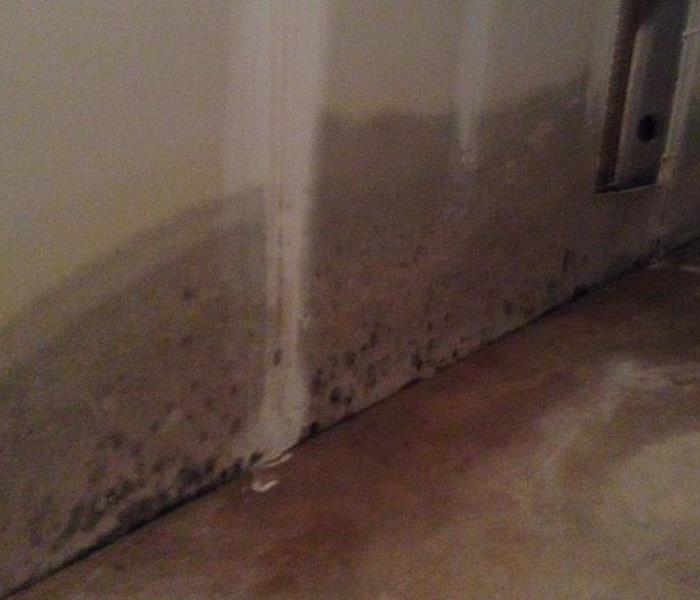 Mold can spread throughout a home in as little as 48 hours!
Mold can spread throughout a home in as little as 48 hours!
Microscopic mold spores naturally occur almost everywhere, both outdoors and indoors. This makes it impossible to remove all mold from a home or business. Therefore, mold remediation reduces the mold spore count back to its natural or baseline level. Some restoration businesses advertise “mold removal” and even guarantee to remove all mold, which is a fallacy. Consider the following mold facts:
- Mold is present almost everywhere, indoors and outdoors.
- Mold spores are microscopic and float along in the air and may enter your home through windows, doors, or AC/heating systems or even hitch a ride indoors on your clothing or a pet.
- Mold spores thrive on moisture. Mold spores can quickly grow into colonies when exposed to water. These colonies may produce allergens and irritants.
- Before mold remediation can begin, any sources of water or moisture must be addressed. Otherwise, the mold may return.
- Mold often produces a strong, musty odor and can lead you to possible mold problem areas.
- Even higher-than-normal indoor humidity can support mold growth. Keep indoor humidity below 45 percent.
If your home or business has a mold problem, we can inspect and assess your property and use our specialized training, equipment, and expertise to remediate your mold infestation.
If You See Signs of Mold, Call Us Today – SERVPRO of Hackensack/Little Ferry (201) 742-5920
Restoring Your Commercial Property After A Water Damage Event
1/18/2017 (Permalink)
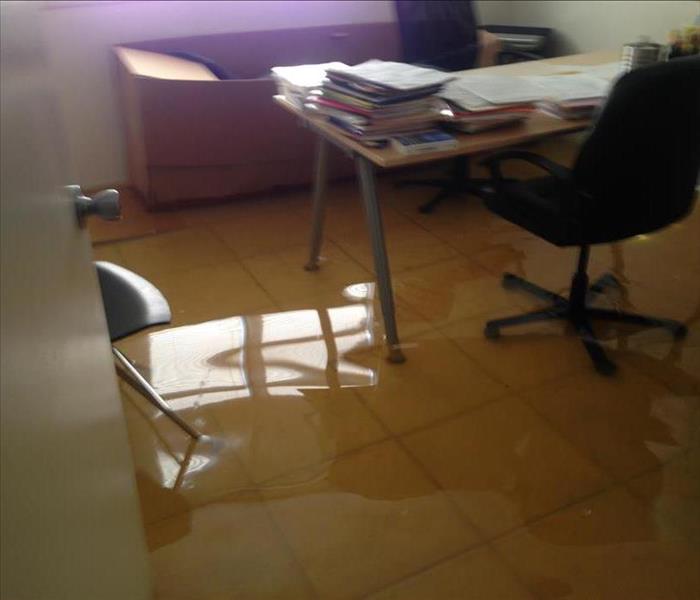 Commercial Water Damage Events Present Unique Challenges
Commercial Water Damage Events Present Unique Challenges
Flooding and water damage events at Bergen County commercial properties are often complex with numerous issues that require a knowledgeable and flexible response. Whether we’re dealing with a relatively small water cleanup scenario or a large scale event, we work quickly to assess each unique situation and isolate the damaged area. In many instances, normal operations can continue in a temporary space while we restore your facility.
Restoring Commercial Properties Presents Unique Challenges
Our professionals are trained to be mindful of legal and environmental concerns and strive to fully restore the damaged area while working within your budgetary constraints. We understand that every hour spent cleaning up is an hour of lost revenue and productivity. So when an emergency situation arises in your business, give us a call and we’ll be there fast with the help you need.
About SERVPRO of Hackensack/Little Ferry
SERVPRO of Hackensack/Little Ferry specializes in the cleanup and restoration of commercial and residential property after a water damage event. Our staff is highly trained in property damage restoration. From initial and ongoing training at SERVPRO’s corporate training facility to regular IICRC-industry certification, rest assured our staff is equipped with the knowledge to restore your property.





 24/7 Emergency Service
24/7 Emergency Service










































































